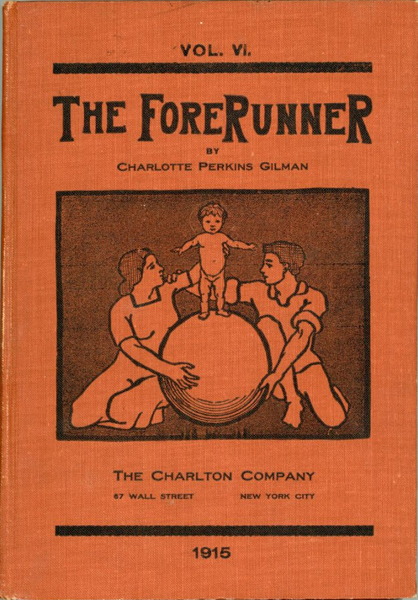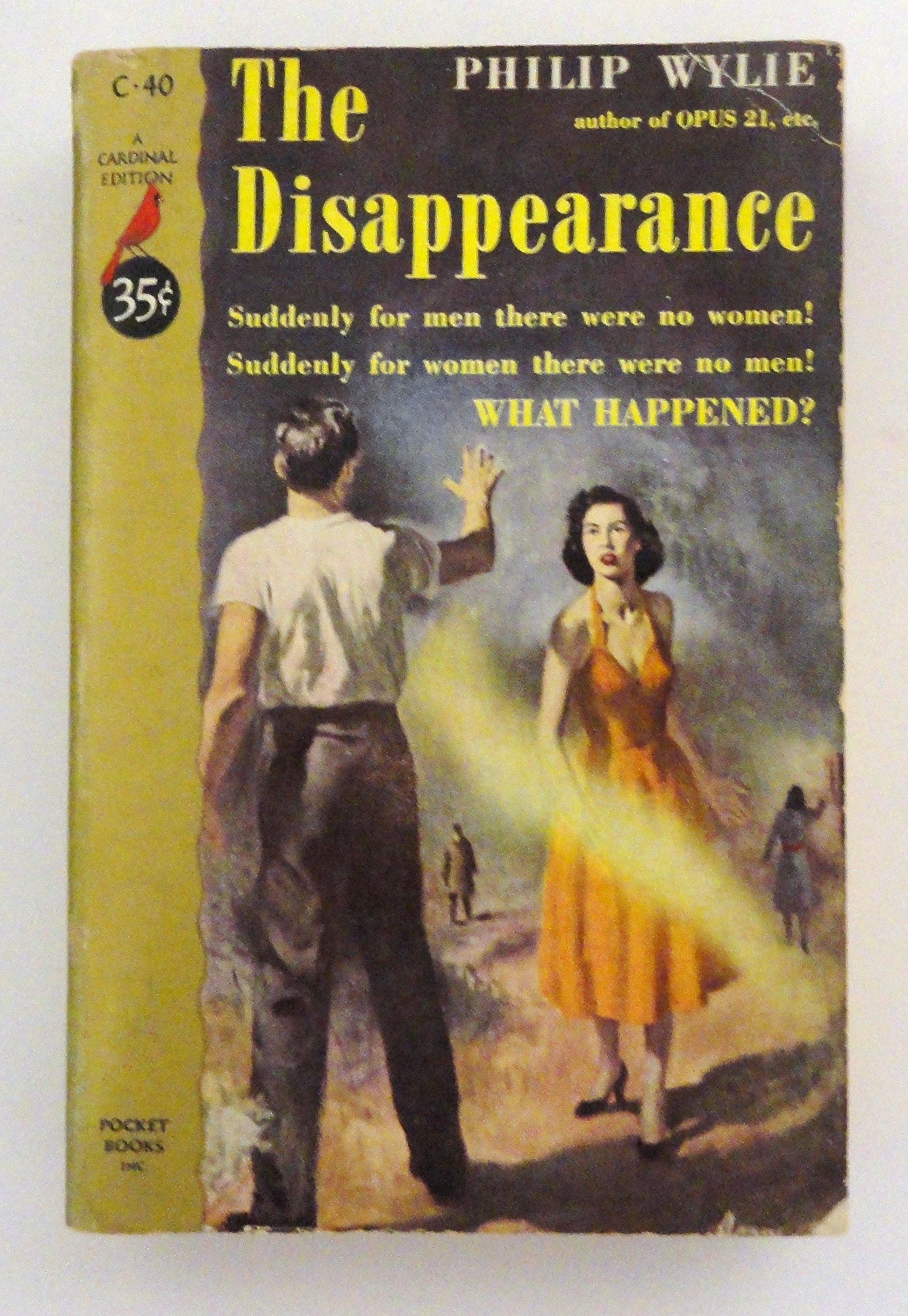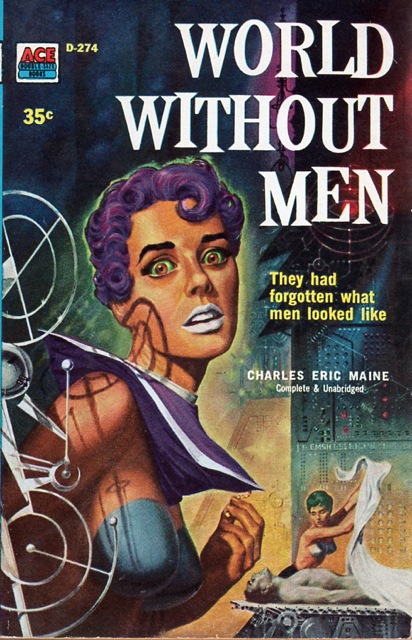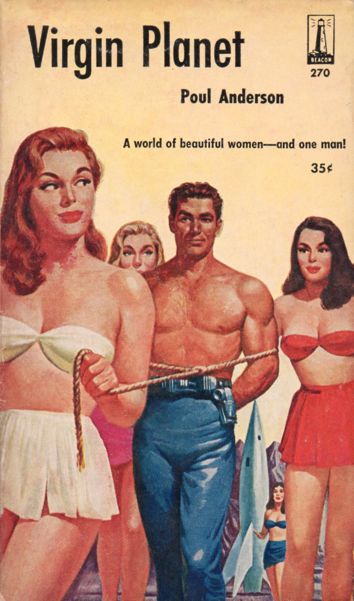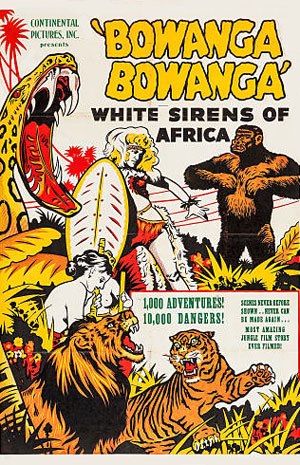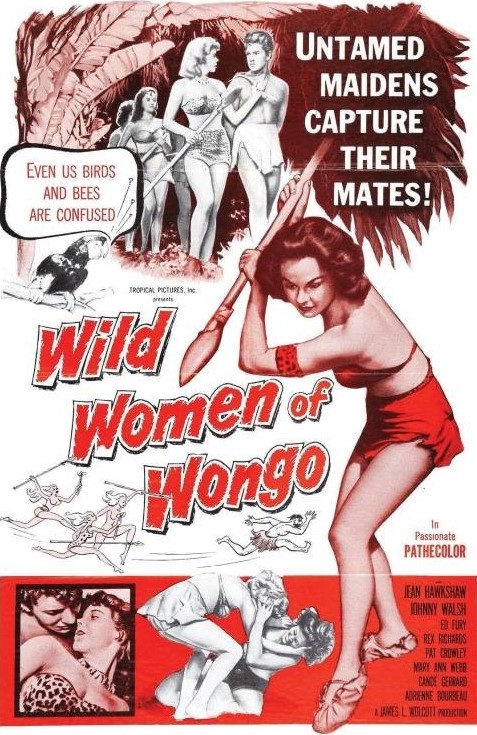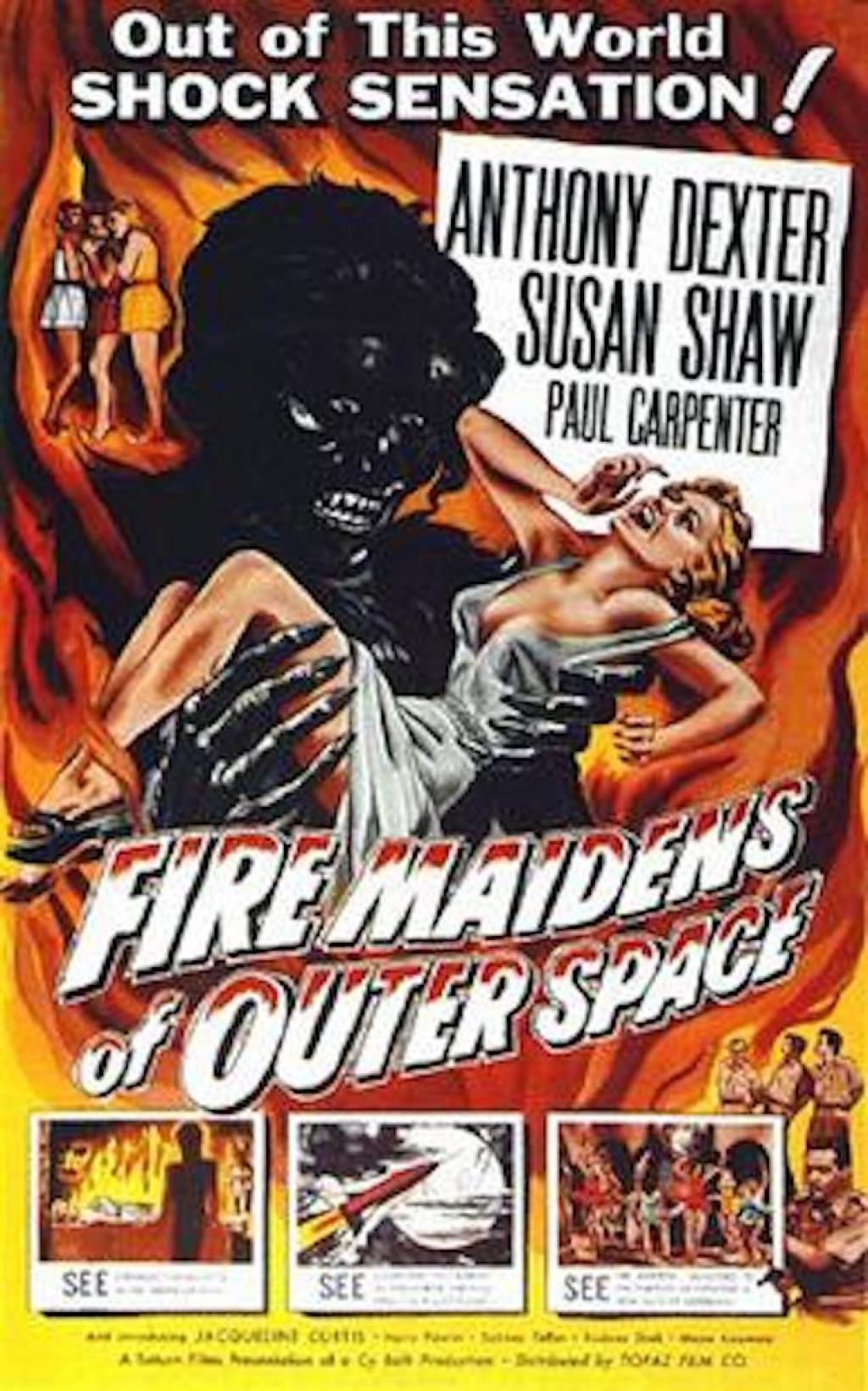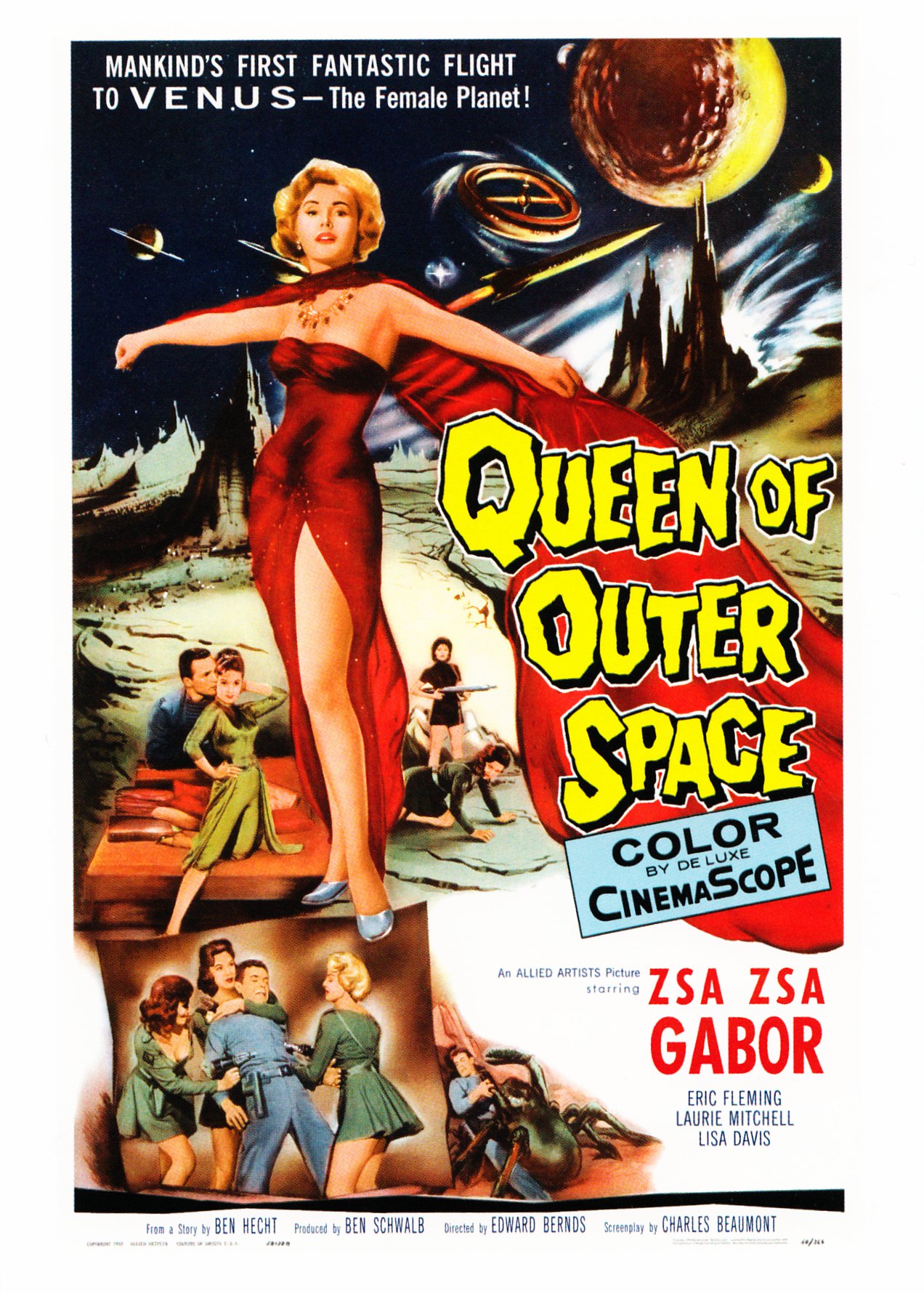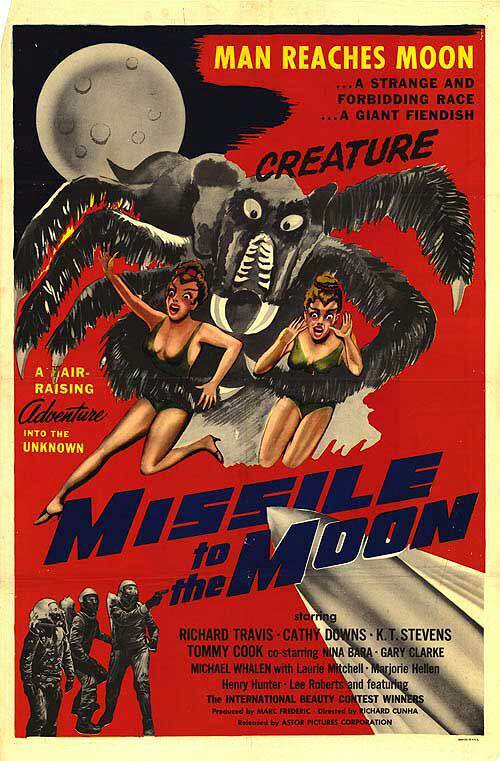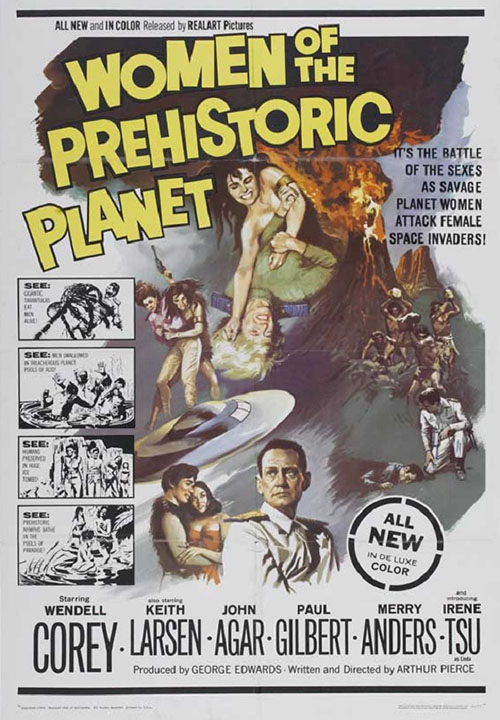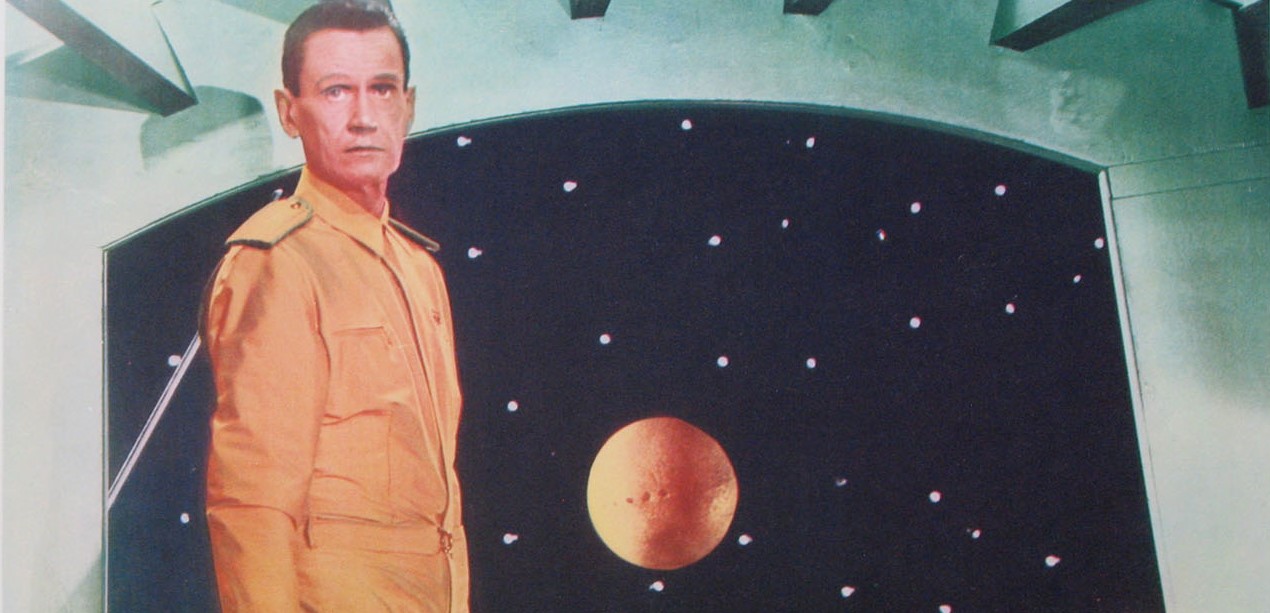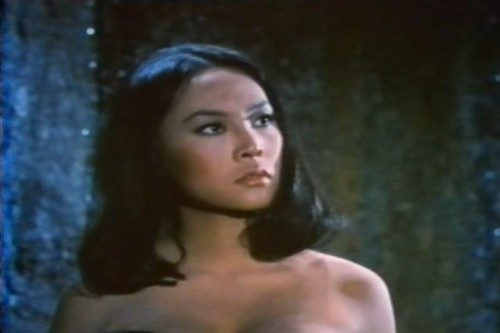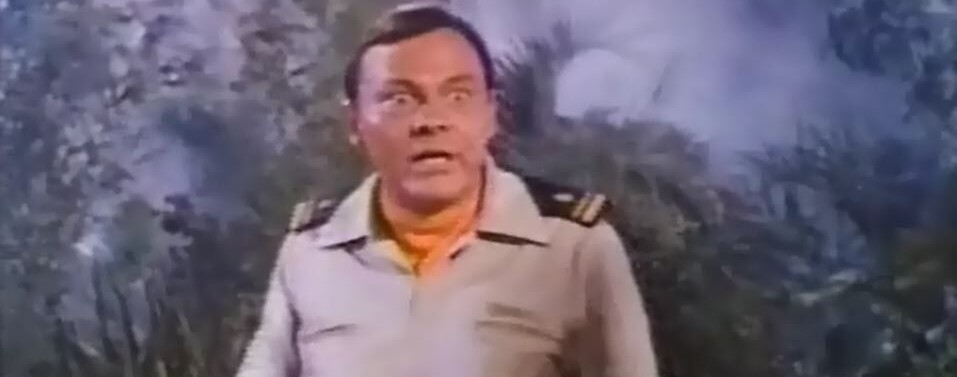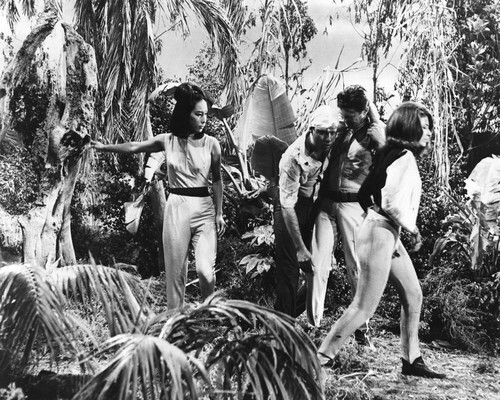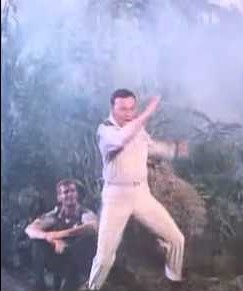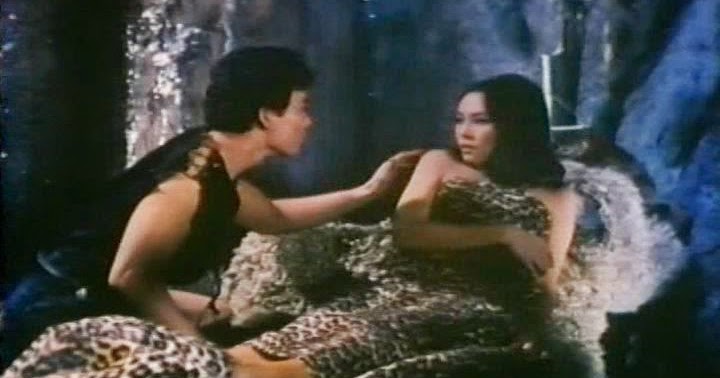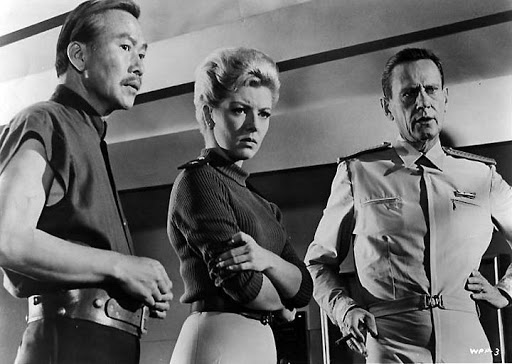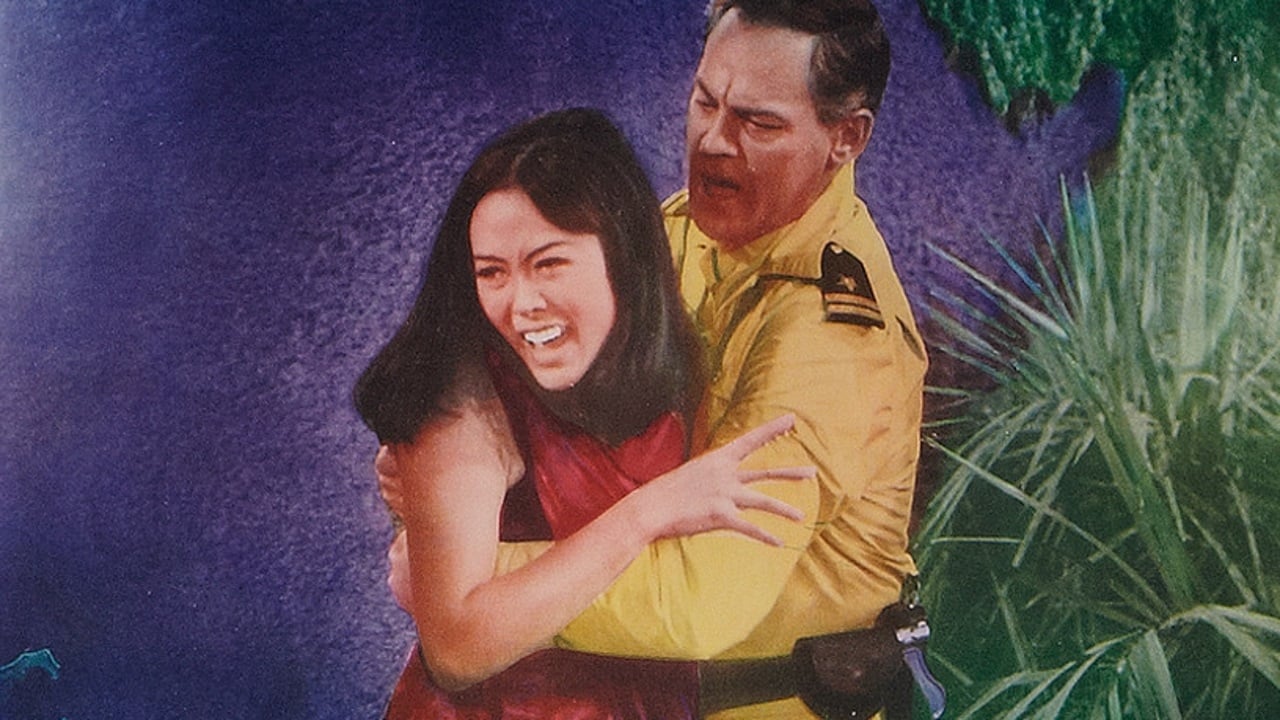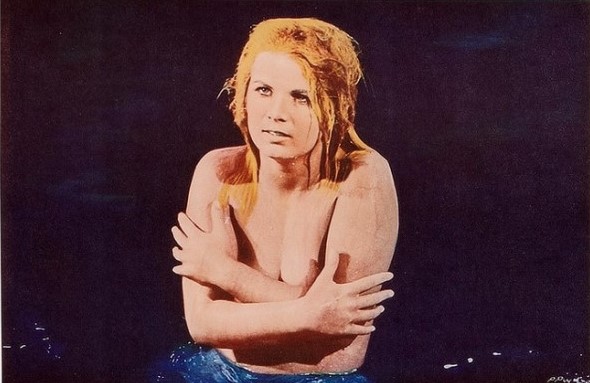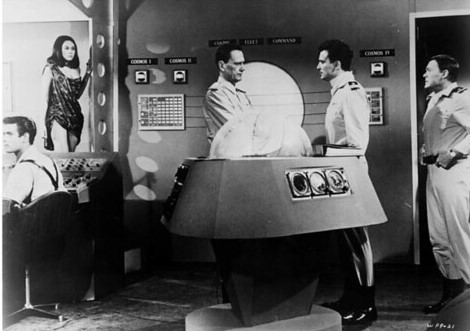
by Cora Buhlert
Another Annus Horribilis
1967 was a terrible year of unrest and violence. So far, 1968 seems to follow suit, especially considering the horrible events in Memphis, Tennessee, last week.
Regular readers may remember my article about the devastating (and still unresolved) fire at the À l'innovation department store in Brussels last year. I expressed my disgust at the pamphlets distributed by the leftist activist group and alternative living experiment Kommune 1 in West Berlin. The Kommune 1 members not only expressed their glee that a department store full of people, whose sole crime was caring more about shopping than the war in Vietnam, burned down, but also hoped that more department stores would burn.
The West Berlin police viewed those pamphlets the same way I did, namely as a threat and incitement to arson. Therefore, two Kommune 1 members, Fritz Teufel and Rainer Langhans (who ironically are not even the people who claimed responsibility for the pamphlets) were arrested and tried for incitement to violence and arson. That trial concluded last month, when a judge acquitted Teufel and Langhans, accepting their explanation that the pamphlets were satire and never intended to be taken seriously.

It is possible that the Kommune 1 intended the pamphlets as satire, albeit in very bad taste. However, even if the pamphlets were intended as satire, there was always the risk that someone might take them seriously.
And then someone did…
Flames in Frankfurt
On the evening of April 2nd, the phone rang at the office of the press agency dpa in Frankfurt on Main. A woman's voice announced that fires would start in the Kaufhof and M. Schneider department stores as an act of political vengeance. Shortly thereafter, homemade incendiary devices ignited in the bedding and toy departments of Kaufhof and the women's wear and furniture departments of M. Schneider respectively.

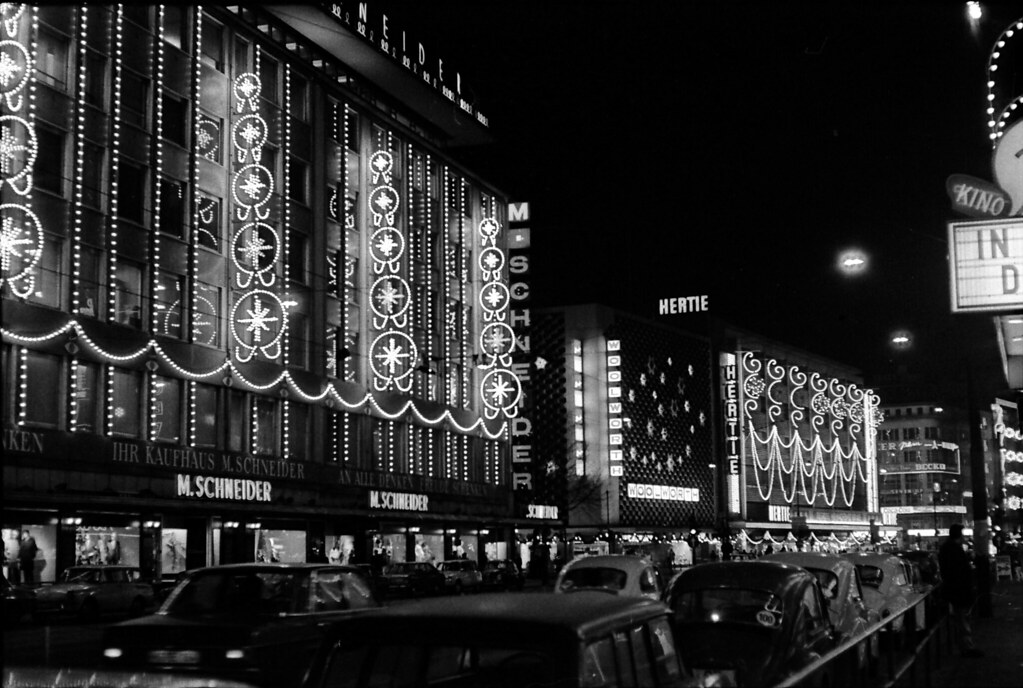
Thankfully, the human and financial toll of the Frankfurt fires was far lower than that of the À l'innovation fire in Brussels. The arsonists used timers to make sure that the incendiary devices ignited after hours, when the stores were closed and the only person inside the building was the night watchman (who escaped with minor injuries).
Furthermore, the Kaufhof and M. Schneider stores, built in 1948 and 1954 respectively, are far more modern and safer than the seventy-year-old À l'innovation building. Unlike À l'innovation, both stores were equipped with sprinkler systems – something the arsonists were not aware of – and the fires were quickly extinguished, though they still caused considerable damages of approx. 282000 Deutschmarks at Schneider and 390000 Deutschmarks at Kaufhof.
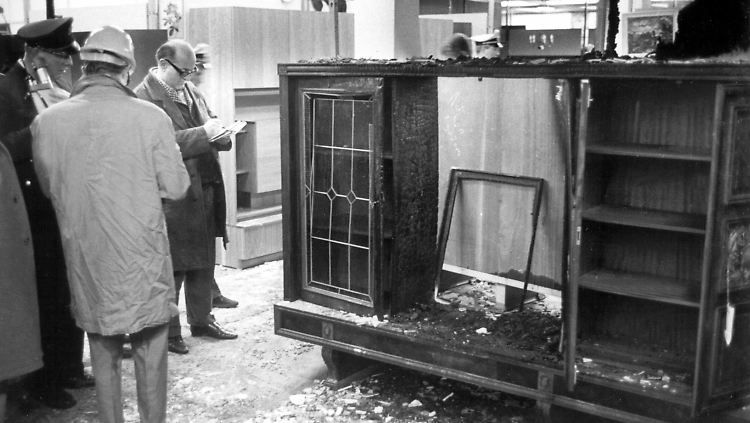

But who were the arsonists? Witnesses remembered a suspicious young couple and two young men hurrying up the escalators shortly before closing time. The same young couple was later seen in a student bar, celebrating and bragging. And so four suspects were arrested only two days later: twenty-four-year-old Andreas Baader, charismatic, bisexual, a failed artist with a history of car theft, who used to hang out with the members of the Kommune 1, twenty-seven-year-old Gudrun Ensslin, a clergyman's daughter from Stuttgart, student of German literature at the Free University of (West) Berlin, Marxist, occasional actress and publisher of poetry chapbooks, mother of a one-year-old son and current lover of Andreas Baader (who is not the father of her son), twenty-six-year-old Thorwald Proll, also a student of German literature and friend of Baader's and the Kommune 1 members, and twenty-four-year-old Horst Söhnlein, who runs an alternative theatre in Munich, which he trashed shortly before he was arrested, because he feared that his rival Rainer Werner Fassbinder would take it over.
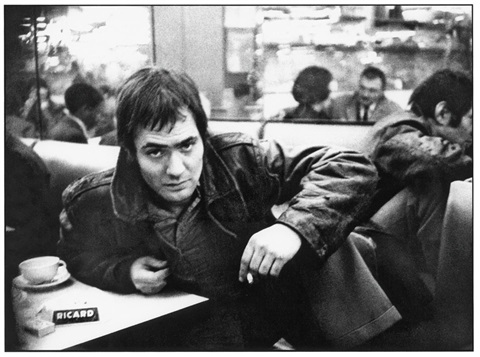

The common denominators that connect the four suspects are the Kommune 1 as well as Andreas Baader. People familiar with the West Berlin activist scene have told me that Baader is desperate to impress the Kommune 1 members, who don't particularly like him. So even if those disgusting pamphlets were intended to be satire, as Fritz Teufel and Rainer Langhans claimed in court, they did inspire four young people to commit a serious crime.
Public Enemy Number 1

However, the Kommune 1 are not the only ones who are using the written word to incite violence. Sadly, the West German tabloid press is no better. Of particular note are the various newspapers of the Axel Springer Verlag, including their flagship quality paper Welt and Bild, West Germany's biggest tabloid, sold at every newsstand, in every tobacco shop and every bakery in the country.

Like all tabloids, Bild specialises in sensationalistic headlines that tap into the fears and desires of the West German population. Right now, a lot of older and conservative West Germans have decided that protesting students are to be feared. Bild as well as the other Springer papers feed those fears with lurid headlines, angry editorials with titles such as "Stop the terror of the young reds!" and political cartoons that frequently cross the line of good taste, all aimed at the supposed menace of left-wing student protesters.
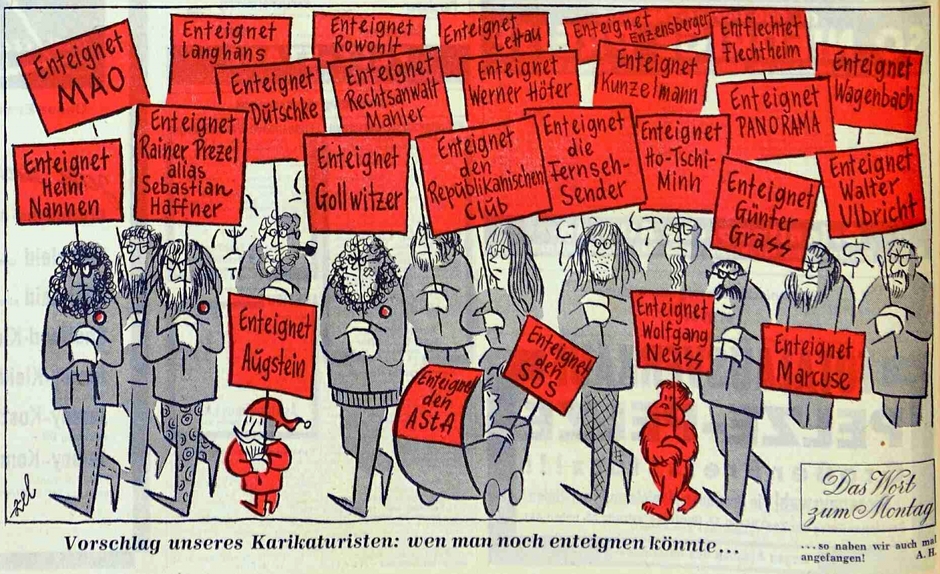


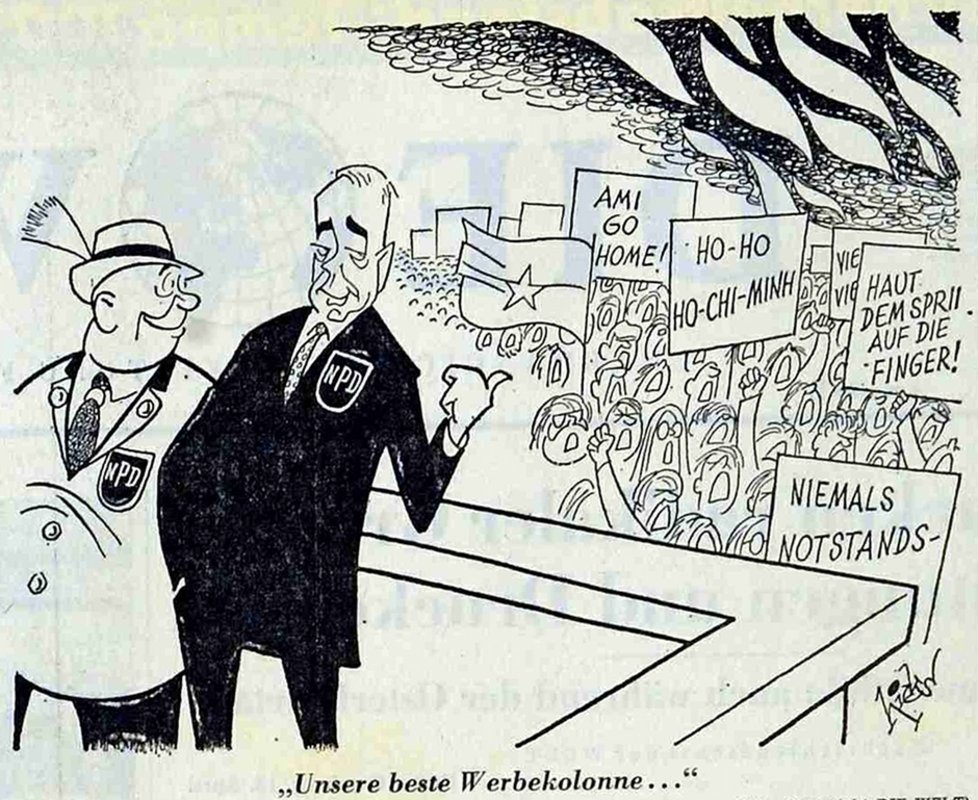
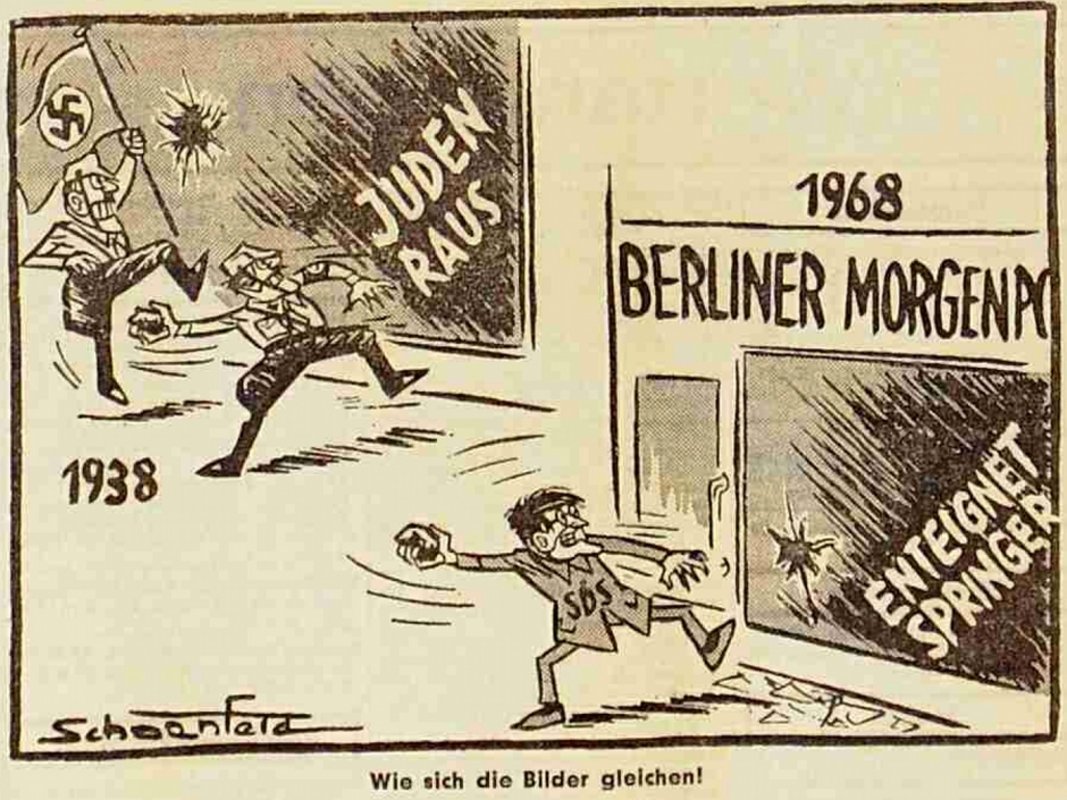
Bild and the other Springer papers have singled out one man in particular as the chief menace to society, namely twenty-eight-year-old Rudi Dutschke. Originally from East Germany, Dutschke's idealistic and pacifistic Christian Marxism quickly clashed with the real existing Socialism of the German Democratic Republic. Only three days before the building of the Berlin Wall, Dutschke fled to West Berlin. He found work as a sports reporter for the tabloid B.Z., ironically owned by the Axel Springer Verlag. He began studying sociology, philosophy and history at the Free University of (West) Berlin, where he quickly became involved in the activist scene and joined the left-wing student organisation Sozialistischer Deutscher Studentenbund SDS.
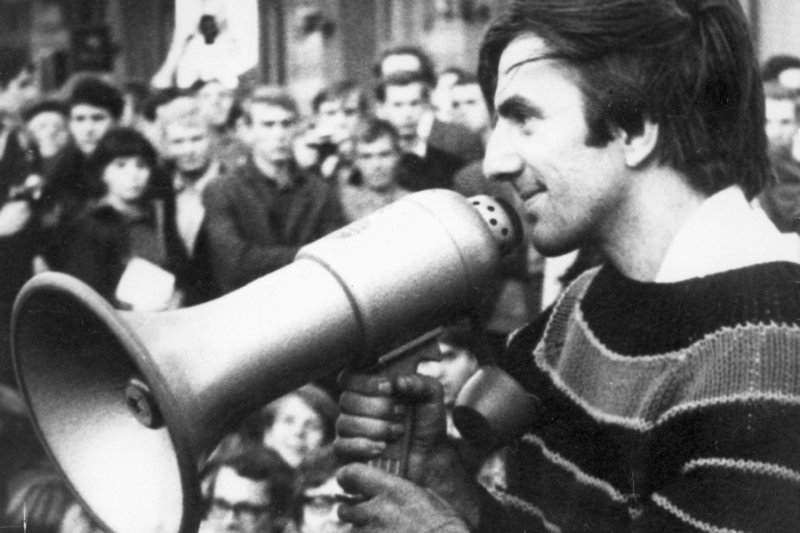
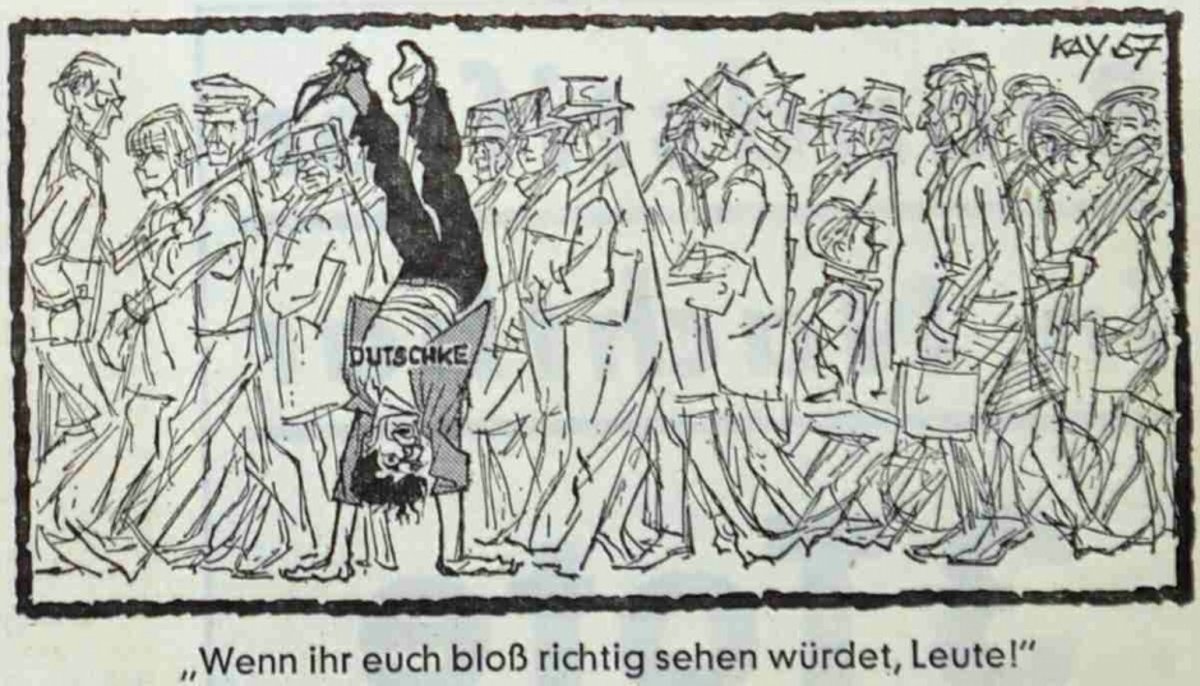

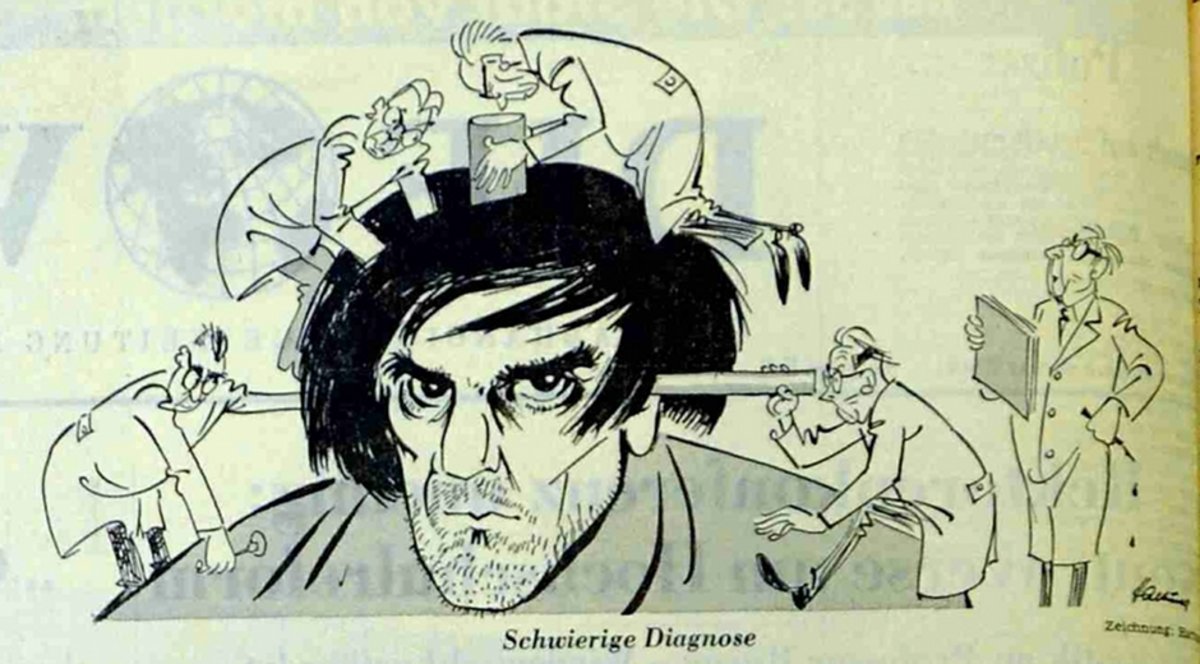
Rudi Dutschke is not the most violent or radical of the West Berlin student activists, but he is the most visible, taking part in every protest and relentlessly organising marches, meetings and discussions. He was invited to join the Kommune 1, hub of the West Berlin activist scene, but declined, preferring a more traditional family life with his American wife Gretchen and their infant son Hosea Che. Dutschke also knows the Frankfurt arsonists and is the godfather of Gudrun Ensslin's young son, though it is not known if he was aware of their plans. Finally, Dutschke is a charismatic speaker, which is how he ended up in the crosshairs of Bild and became public enemy number 1 to the conservative press.

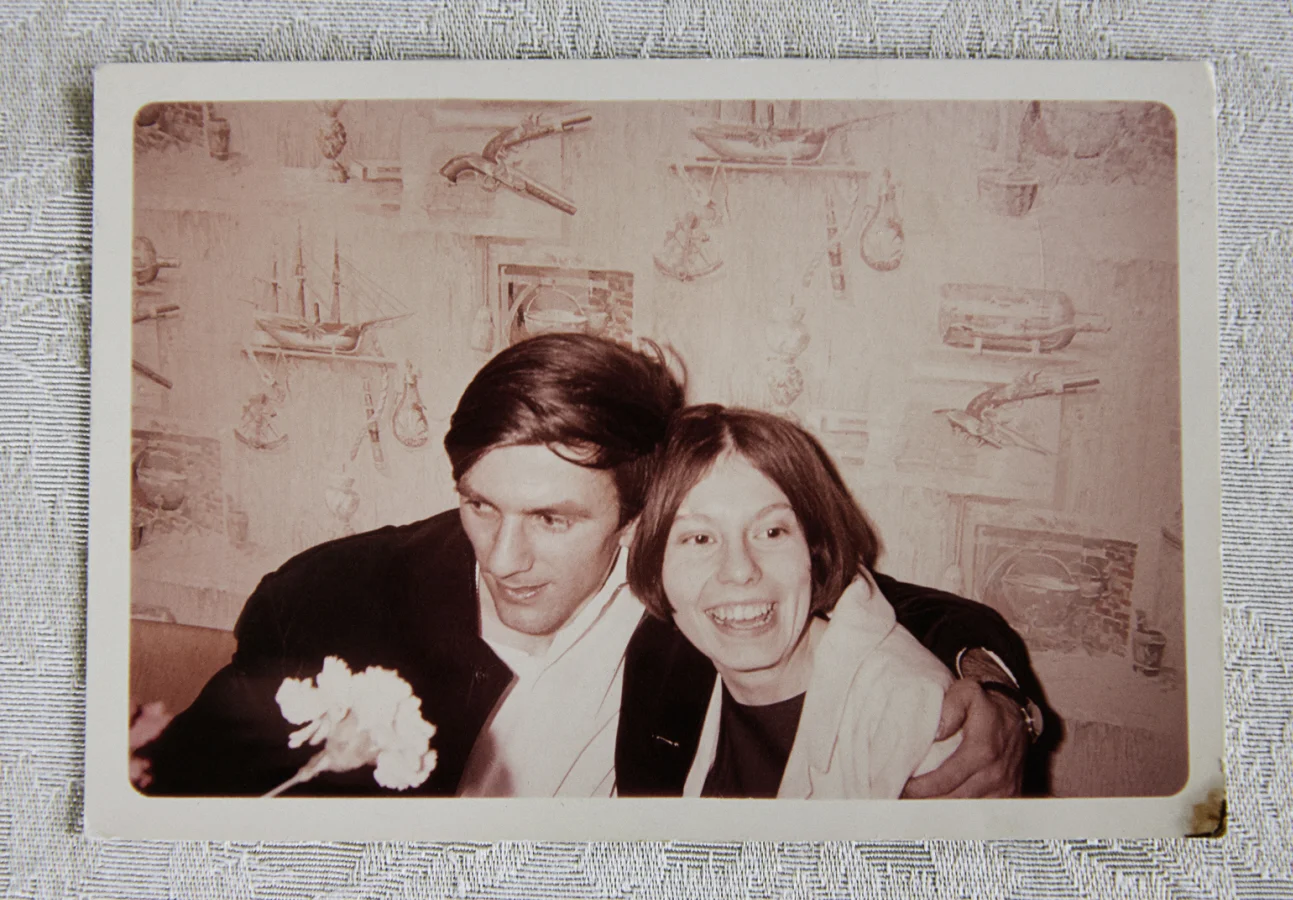
According to the old saying, "Sticks and stones will break my bones, but words will never harm me." But, as the Frankfurt arson attacks show, words can incite people to do physical harm. And so the relentless attacks on Dutschke by the tabloid press led to threats and hateful slogans left in the stairwell of the apartment house where Dutschke lives with his young family.
Three days ago, they led to something far worse.
Shots in West Berlin
On April 11th, a young man – later identified as Josef Bachmann, a twenty-three-year-old unskilled labourer from Munich – rang the doorbell of an apartment on the quiet end of West Berlin's Kurfürstendamm boulevard that serves as the headquarters of the Sozialistischer Deutscher Studentenbund. Bachmann asked if Rudi Dutschke was there. The student who answered the door nodded and asked if Bachmann wanted to come in. But Bachmann just shook his head and left.
He loitered on the sidewalk outside the apartment block and waited for Dutschke to emerge. Dutschke only wanted to buy nasal drops for his three-months-old son at a nearby pharmacy and got on his bicycle, when Bachmann approached him. "Are you Rudi Dutschke?"
Dutschke nodded, whereupon Bachmann screamed "Dirty Communist Pig", pulled a gun and shot Dutschke three times, in the head, the neck and the shoulder. Miraculously, Dutschke survived and even managed to walk a few more meters, before he collapsed in front of an undertaker's office. Passers-by quickly came to his aid and lifted Dutschke onto a bench, where he lay calling for his parents, declared that he had to go to the hairdresser and hallucinated something about soldiers. He was taken to hospital and underwent emergency surgery. As of this writing, Rudi Dutschke is still alive, though in critical condition. Even if he survives, he will retain lifelong disabilities.

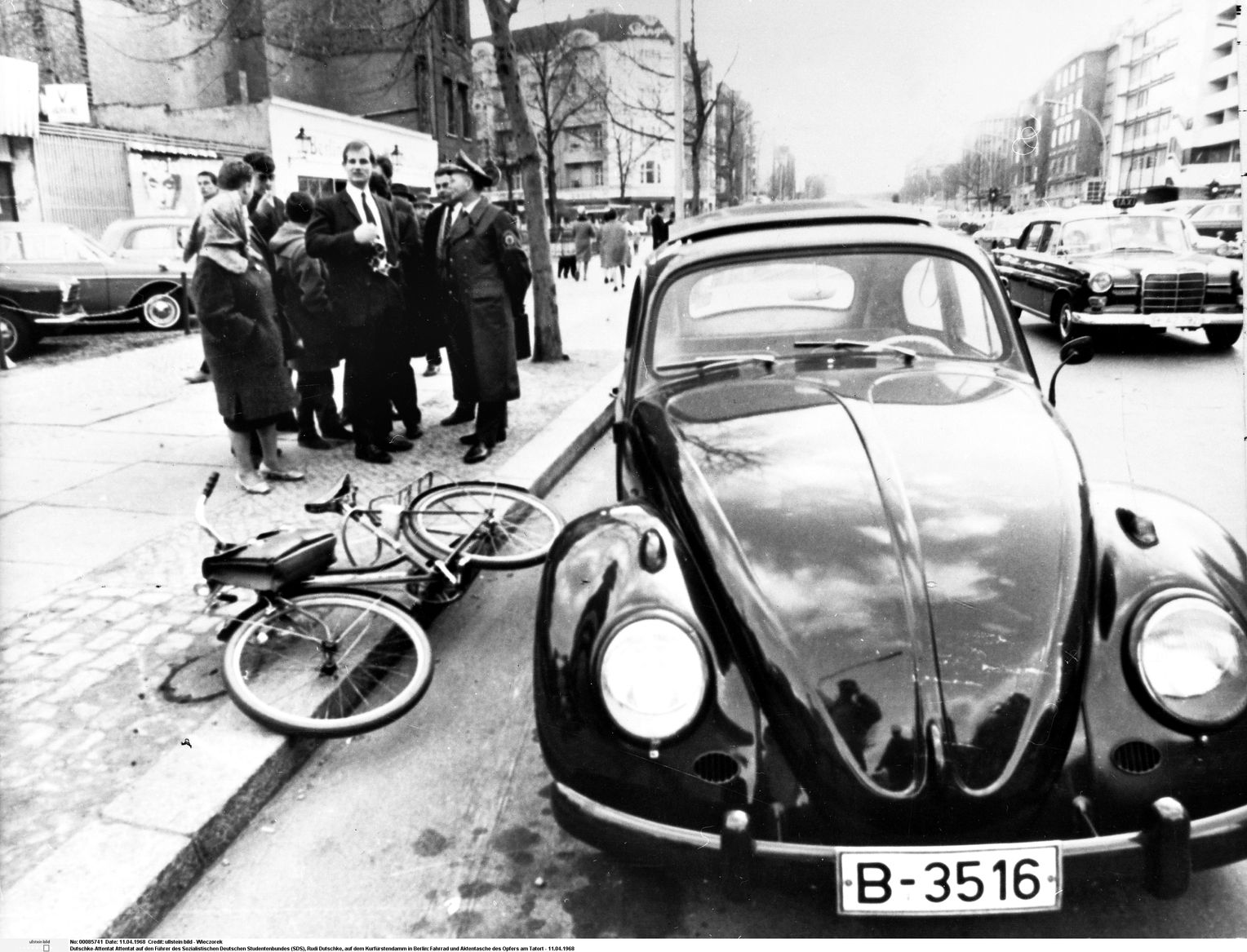
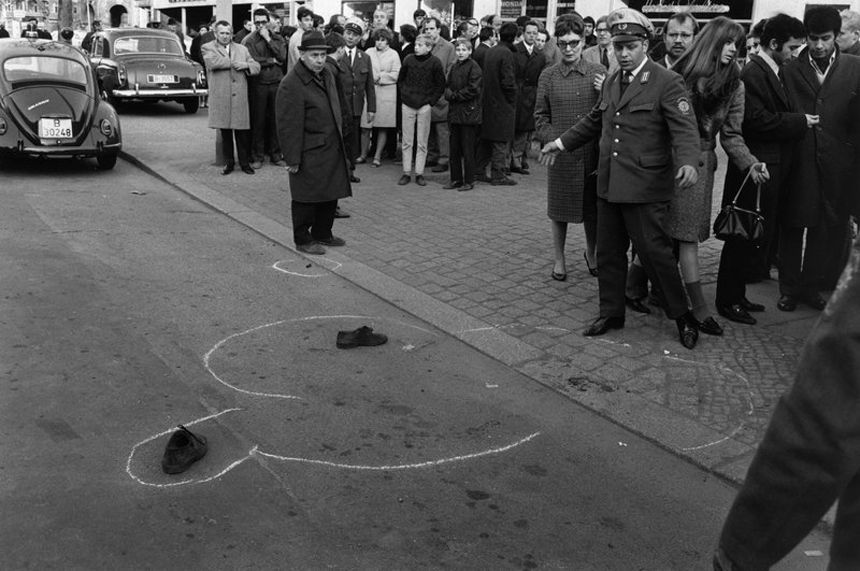

Josef Bachmann fled and was eventually cornered by the police in a nearby backyard. Shot rang out and Bachmann was hit, though he, too, survived and is currently in hospital.
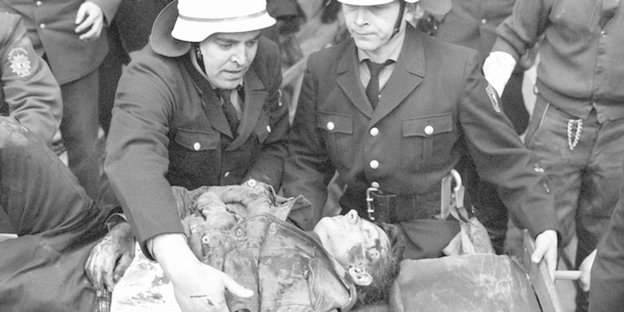
The Smoking Gun
But who or what persuaded Josef Bachmann to shoot down a complete stranger in the street? To the West Berlin students, the culprit was clear. The various tabloids of the Axel Springer Verlag had incited so much hatred towards Dutschke that they inspired Bachmann to travel from Munich to West Berlin to shoot a man he'd never met.
The truth is more complicated. Bachmann was carrying a newspaper, when he shot Dutschke. However, it was not a Springer paper, but the far right Deutsche National-Zeitung, which contained a Wanted poster style headshot with the headline "Stop Dutschke now!" In Bachmann's home, the police also found a portrait of Adolf Hitler. Furthermore, the Springer papers are not a monolith. The tabloid B.Z. criticised the way its sister papers were turning Dutschke into public enemy number 1. And even Bild expressed their shock over the shooting in an article entitled "Millions fear for Dutschke's life".
The students, however, were too furious about the attempt on Dutschke's life only a week after the murder of Martin Luther King Jr. in Memphis and not even a year after the murder of Benno Ohnesorg to care about nuance. To them, the Springer tabloids had at the very least incited violence, if not helped to fire the gun. And so, protests erupted, first in West Berlin and then all over West Germany.
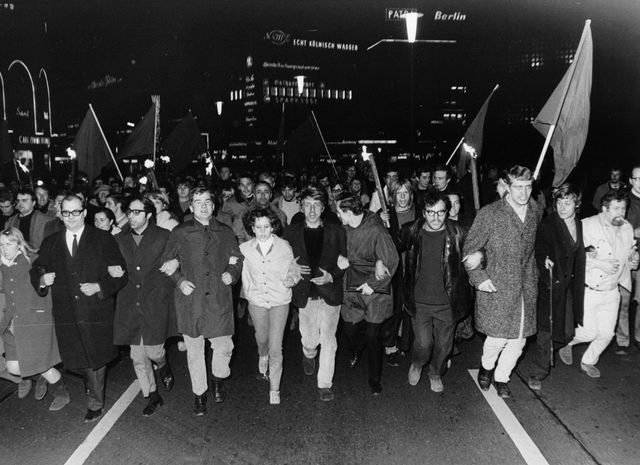


In West Berlin, protesters attempted to storm the Springer headquarters, only to find themselves confronted by angry printshop workers, armed with heavy tools. Kommune 1 member Dieter Kunzelmann got stuck in the revolving door of the Springer building, where workers emptied a bucket of red paint over him. When they found that they could not storm the publishing house, the West Berlin protesters torched stacks of newspapers and delivery vehicles. Meanwhile in Munich, protesters trashed the local editorial office of Bild.
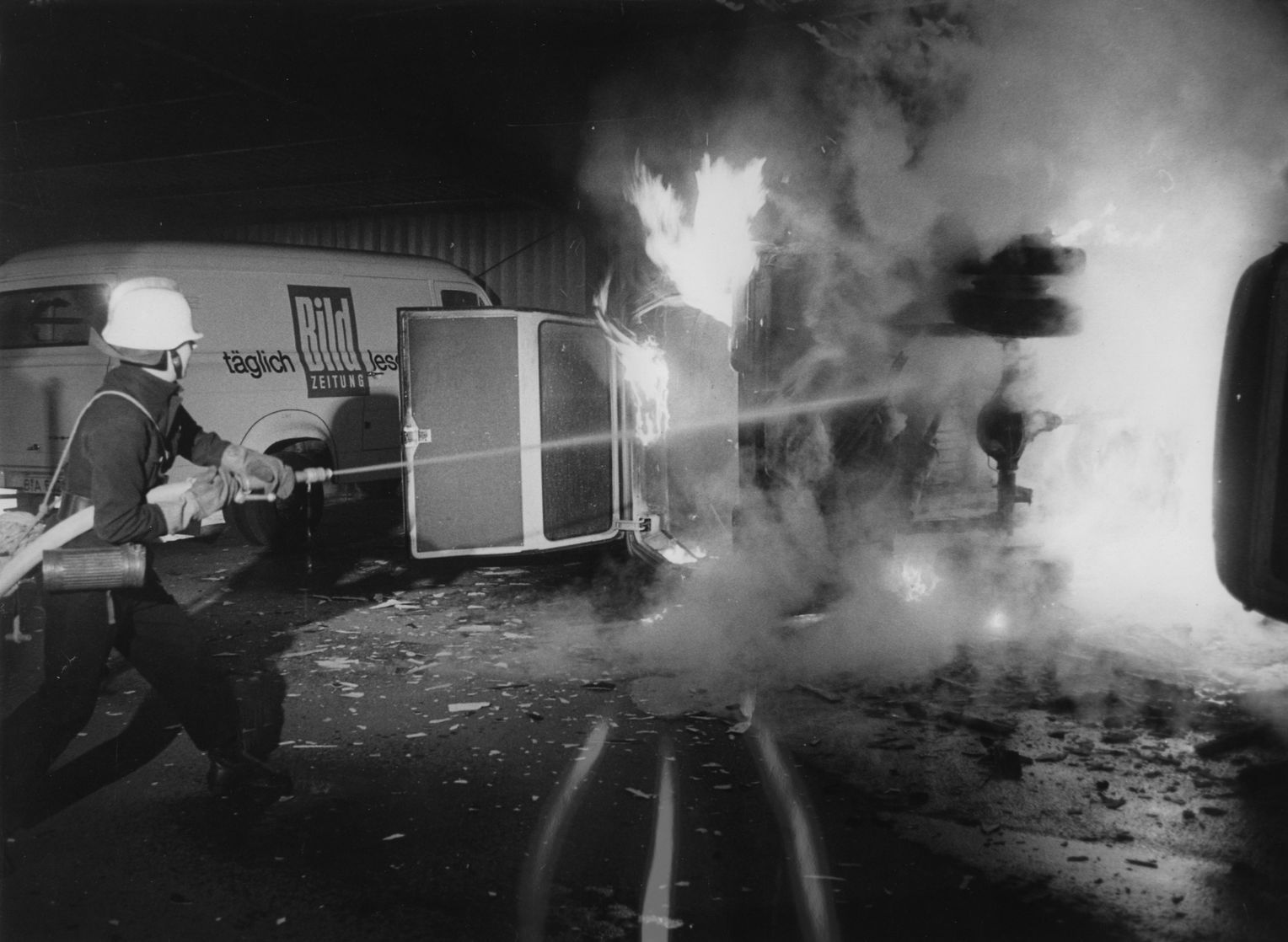
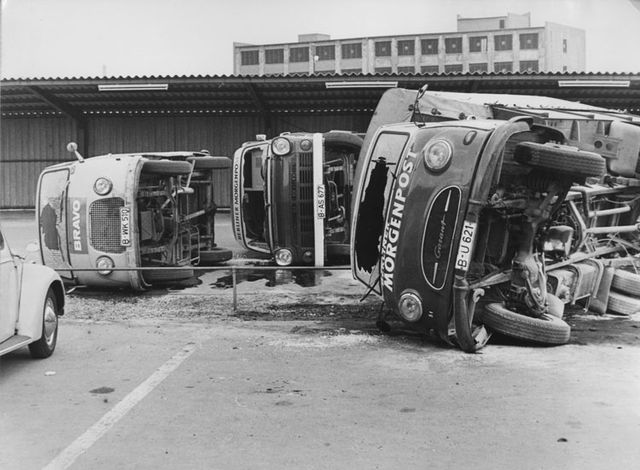
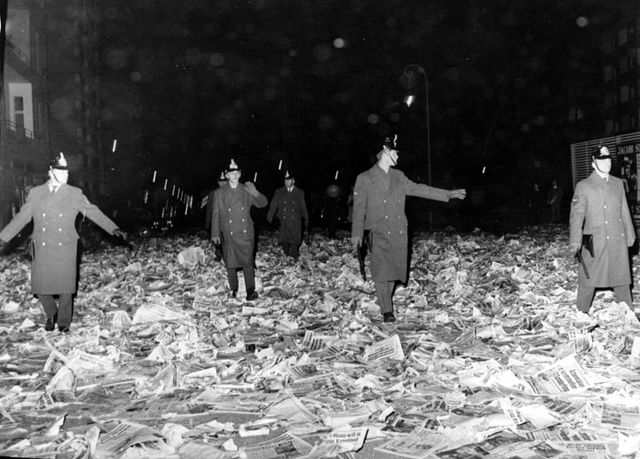

So far, the protests have spread to twenty-seven West German cities and also abroad and show no sign of stopping. The protesters are no longer just university students either, but high school students, apprentices and workers. As we've seen with other protests in recent years, the police responded with violence, escalating an already volatile situation even further.
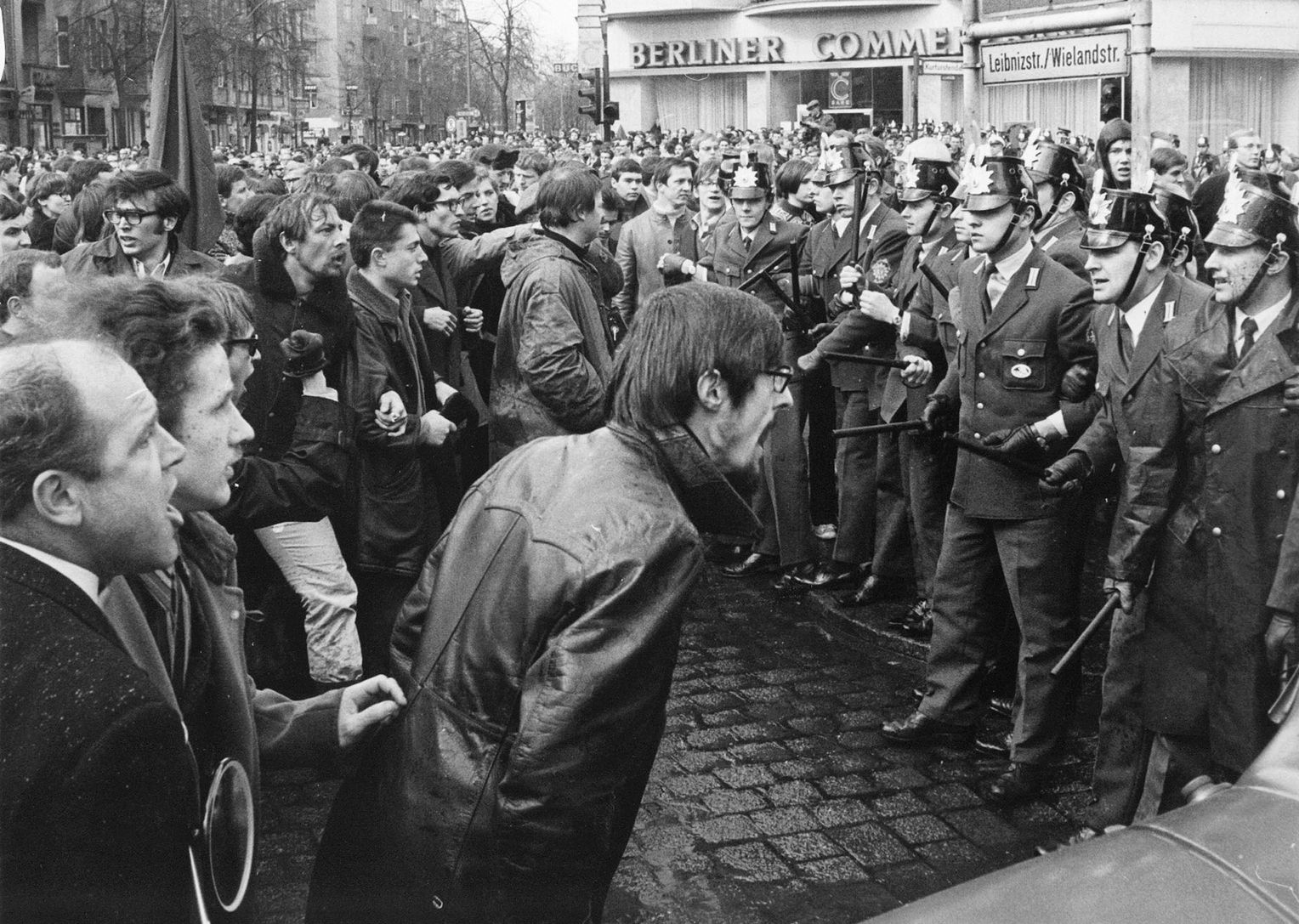

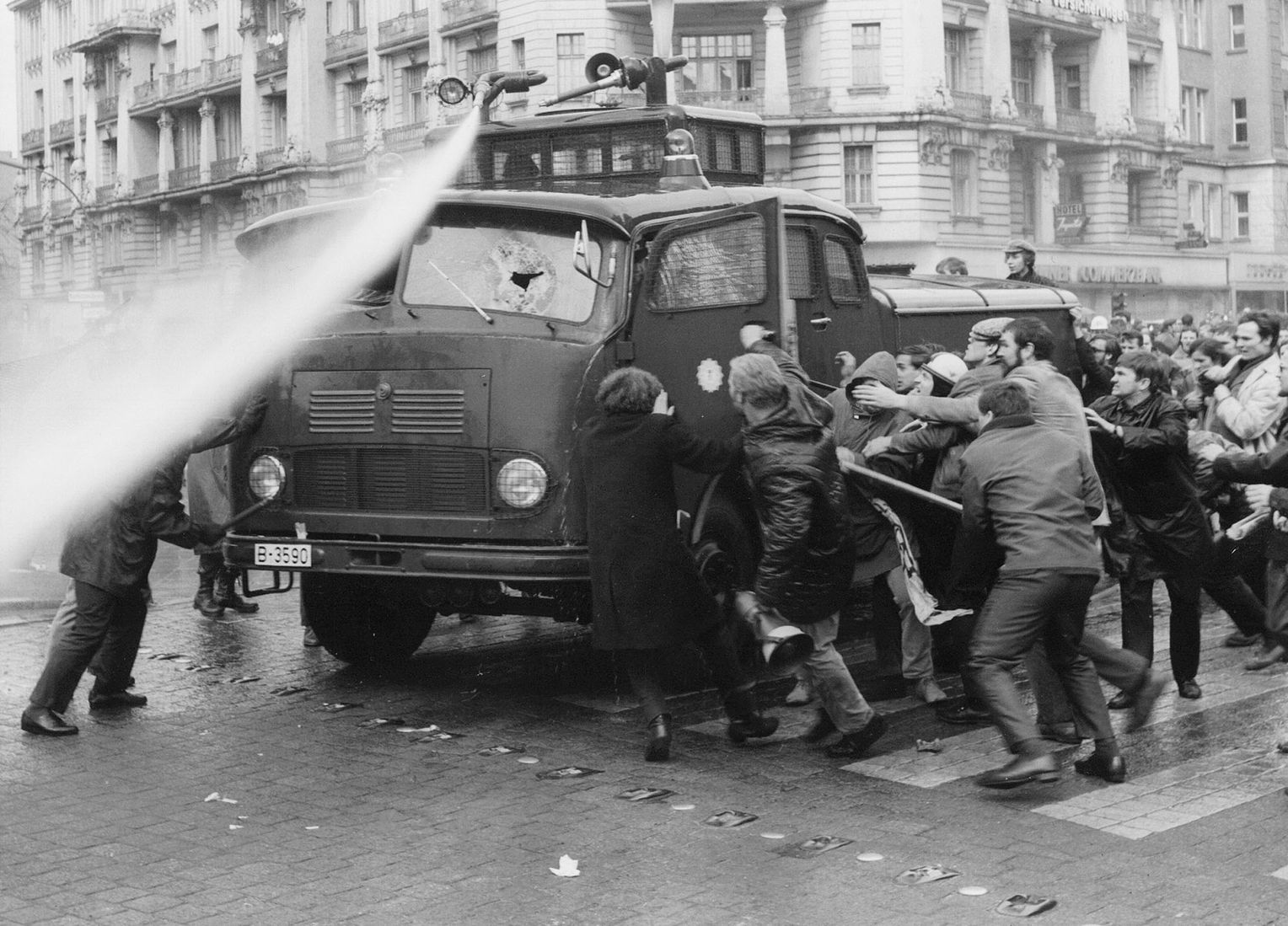
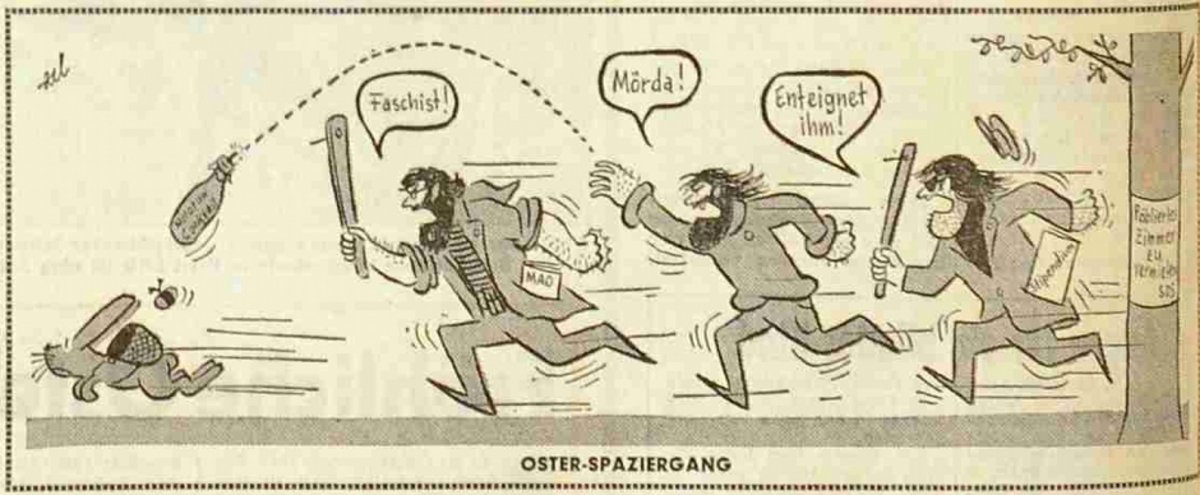
Dad's Cinema Is Dead
With West Germany burning and all the terrible things happening here and elsewhere in the world, it's easy to forget that there are bright spots as well. One of those bright spots is the 14th West German Short Film Days in Oberhausen.

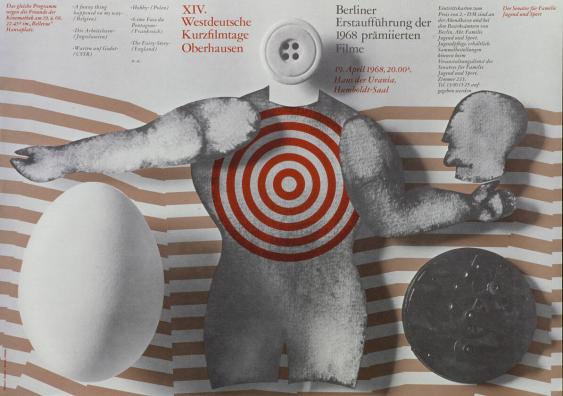
The West German Short Film Days were founded in Oberhausen, an otherwise unremarkable industrial town in the Ruhrgebiet area, in 1954 as the first film festival in the world focussed solely on short films. The new festival gained international attention for its willingness to show experimental movies by young filmmakers and also as a place where one could see East European movies that have no distribution elsewhere.
The West German Short Film Days also became a flashpoint for radical filmmakers. In 1962, a group of twenty-six young West German filmmakers published the Oberhausen Manifesto, in which they declared "Dad's cinema", i.e. the largely entertainment focussed West German cinema of the postwar era, dead. Unfortunately, this flaming manifesto did not lead to better movies – instead the results were no better than the films the signatories criticised, but infinitely duller. A new group of young filmmakers issued a second manifesto in 1965, in which they criticised the dull problem movies championed by the first manifesto and called for making good and entertaining movies in the style of Howard Hawks and Jean-Luc Goddard. Three years later, this second group has at least made a few decent would-be noir films.
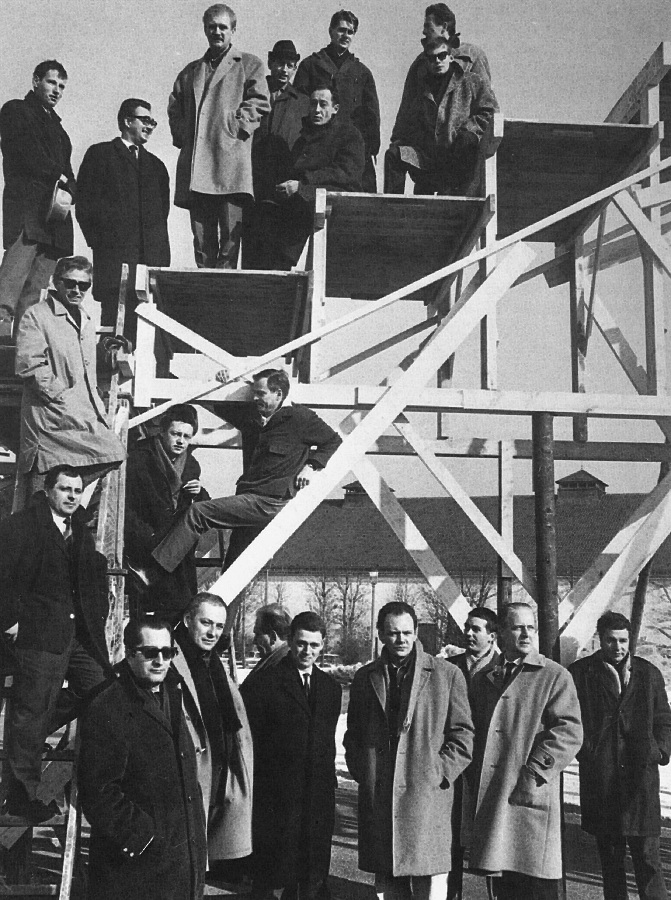
Talking Dicks
This year's festival was beset by controversy as well, when Besonders Wertvoll (Of Special Merit) was pulled at short notice, even though it had been previously approved. The eleven-minute film shows a close-up of a talking penis – portrayed by director Helllmuth Costard or rather his penis – reading out the new West German film grant law, which denies grants to movies deemed obscene. After reading out this very dry subject matter, the penis gets his deserved reward, while director Costard, this time fully clothed, attempts to confront the main sponsor of the bill Hans Toussaint.
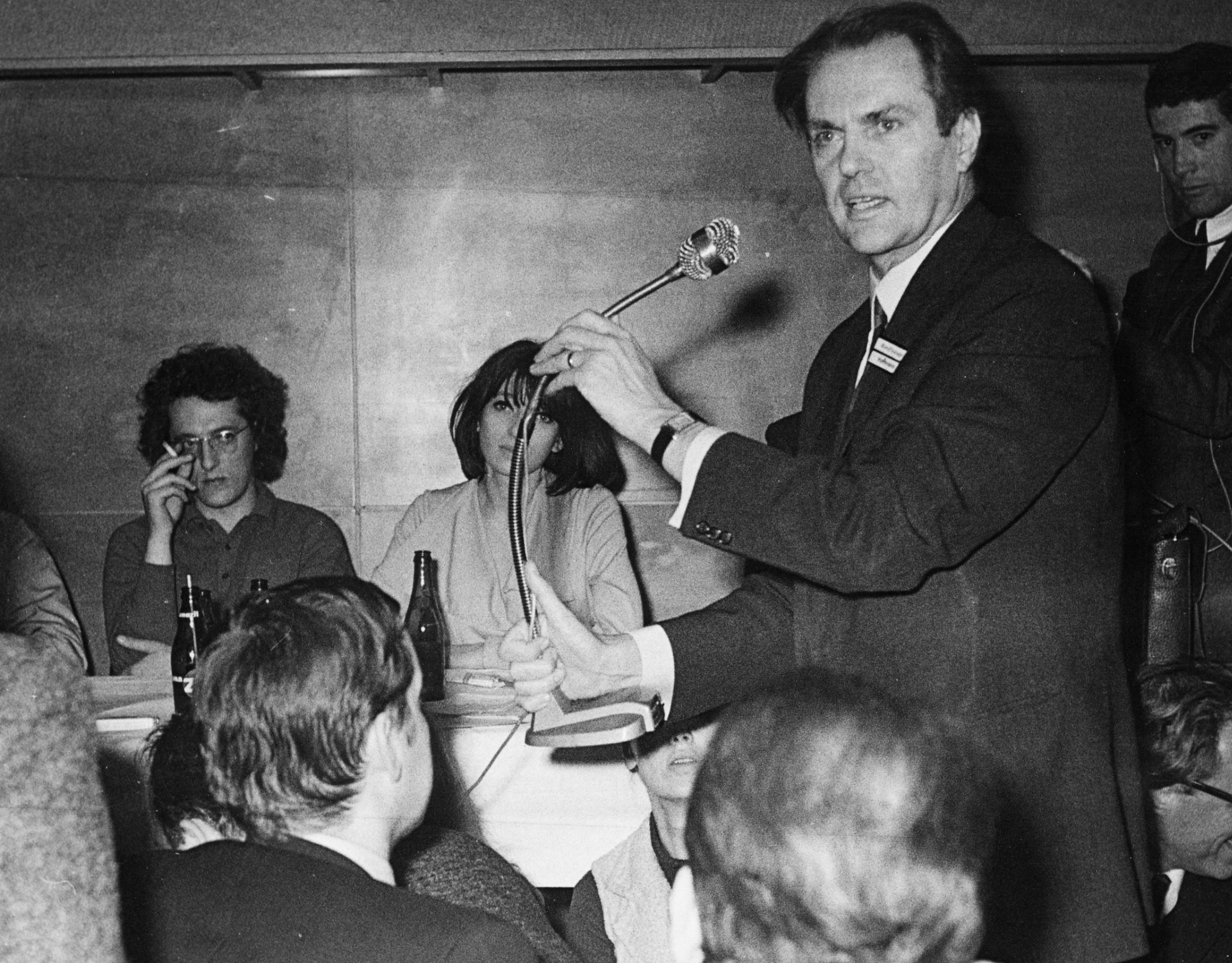
I have seen Besonders Wertvoll at an impromptu screening at the Ruhr University in nearby Bochum. It is clearly satirical and the true nature of the narrator isn't even immediately apparent. However, the festival refused to show the film, whereupon several West German filmmakers and a member of the jury withdrew in protest.
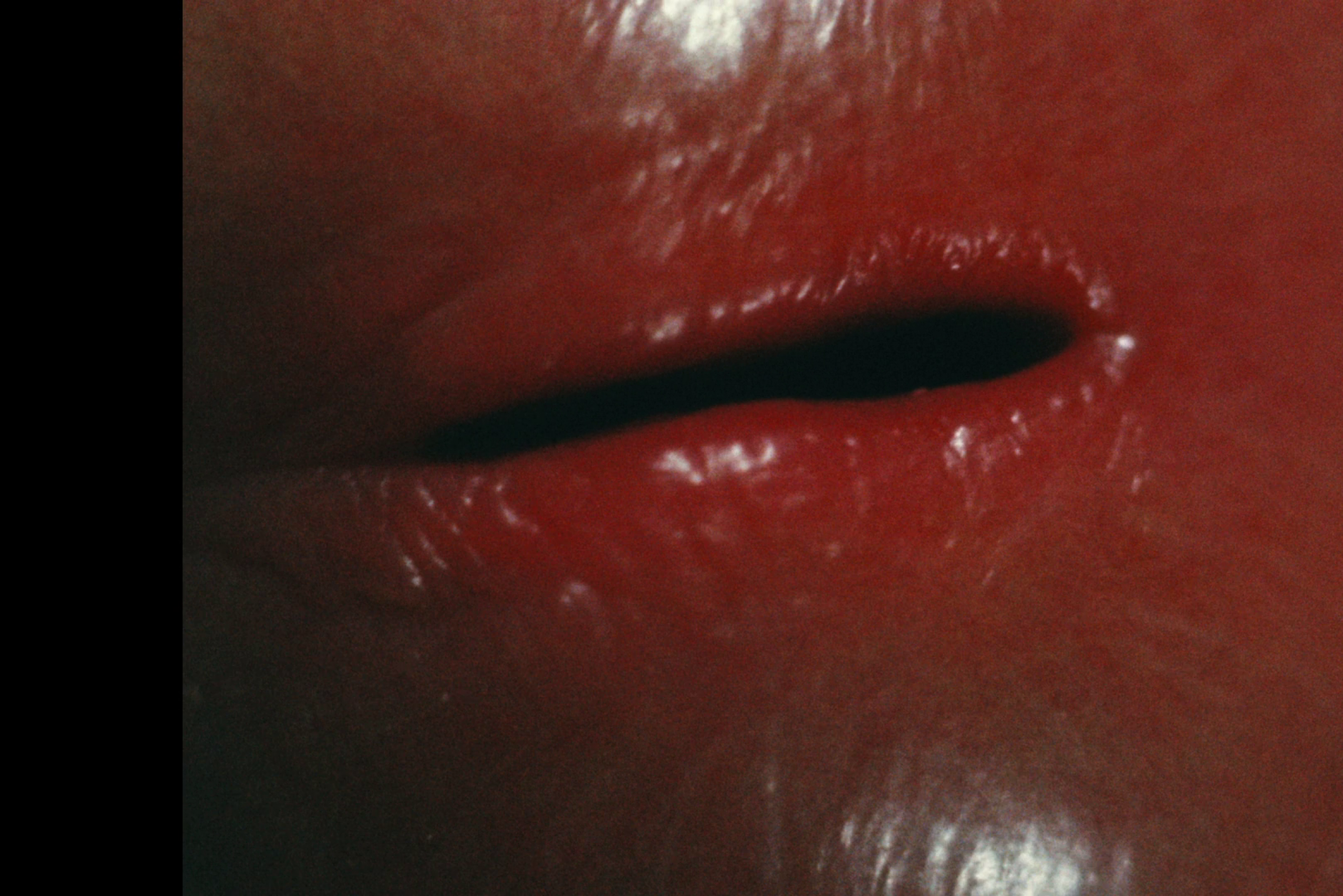
I Have Seen the Future…
But even with several films missing, the 14th West German Short Film Days still offered plenty of interesting and innovative filmmaking.
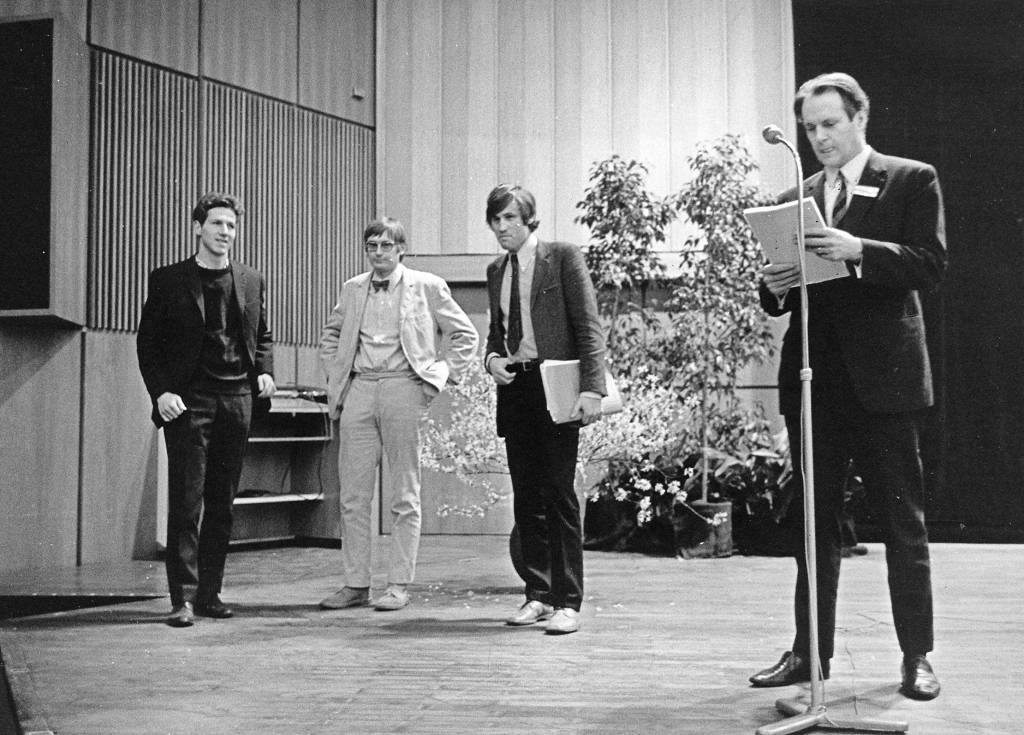
One film that particularly impressed me is Electronic Labyrinth THX 1138 4EB, a dystopian science fiction film made by a young graduate of the University of Southern California's School of Cinematic Arts named George Lucas.
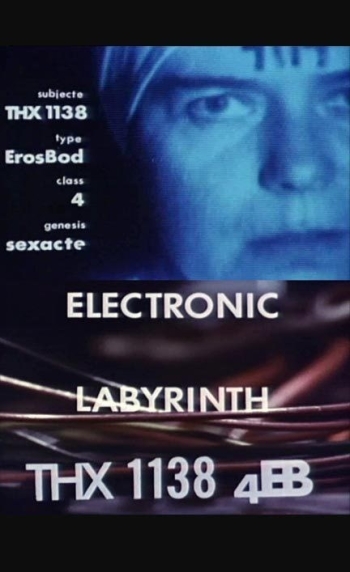
Electronic Labyrinth THX 1138 4EB plunges us into the nightmarish future of the year 2187, a world where humans have numbers rather than names tattooed onto their foreheads. The titular THX 1138 4EB (Dan Natchsheim) has been found guilty of the crime of "sexacte". His mate YYO 7117 (Joy Carmichael) is interrogated and denies ever having loved him. The unique naming pattern is based on California licence plates, by the way. THX 1138 happens to be the number of director George Lucas' licence plate, while YYO 7117 is that of Lucas' fiancée.
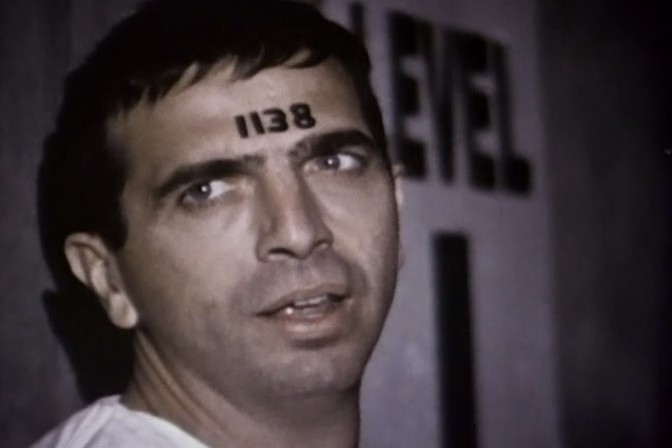
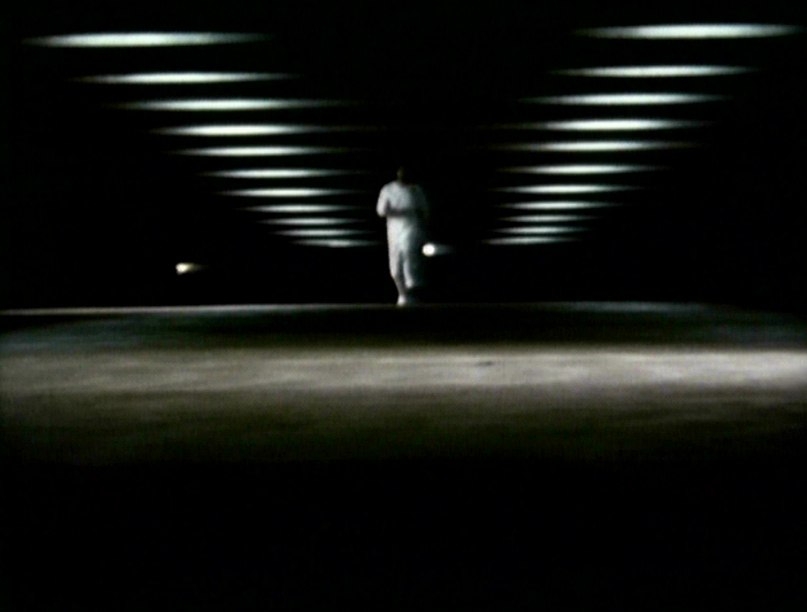
Meanwhile, THX 1138 4EB is on the run through stark white corridors and what looks like an underground parking garage, tracked by countless cameras monitored by men in white jumpsuits in a white room filled with computers and screens. For most of the film, the only dialogue is the radio communication of the security personnel. They try to thwart THX 1138 4EB's escape, first by subjecting him to a high-pitched noise and then by having a guard attack him. However, THX 1138 4EB forces open a door and runs off into the sunset and hopefully freedom. Meanwhile, a voice informs YYO 7117 that they regret that THX 1138 has destroyed himself and that she may apply for a new mate – of either gender – at any time.
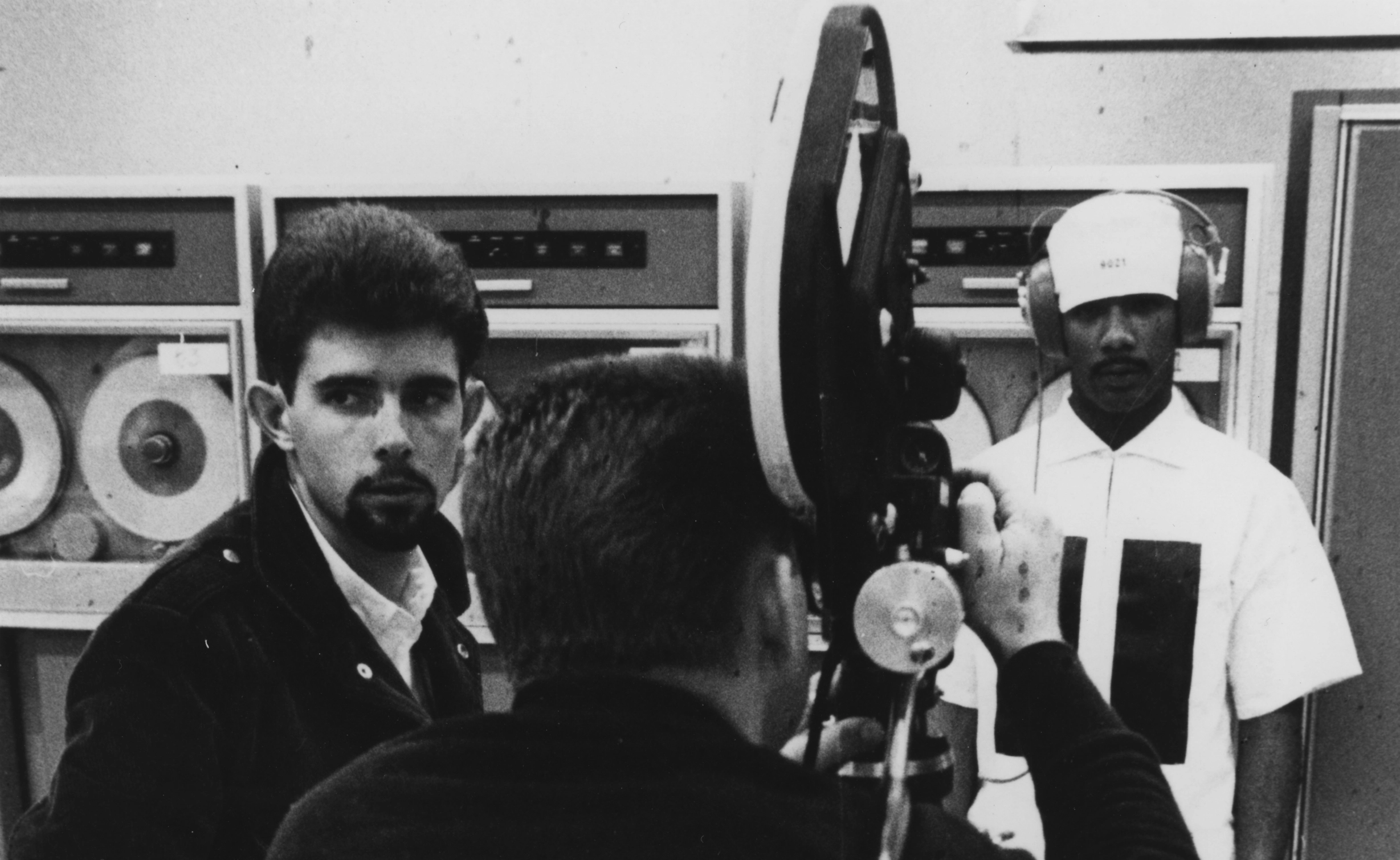
Electronic Labyrinth THX 1138 4EB is a neat work of dystopian science fiction that manages to tell a complete and coherent story in only fifteen minutes. The film also shows that it is possible to make a science fiction movie on literally a shoestring budget.
Electronic Labyrinth THX 1138 4EB has already won the National Student Film Award and was also honoured at the West German Short Film Days. As for the talented twenty-three-year-old director George Lucas, he is planning to turn Electronic LabyrinthTHX 1138 4EB into a full-length feature film. I for one will certainly be watching. I'm am also looking forward to whatever Mr. Lucas does next.

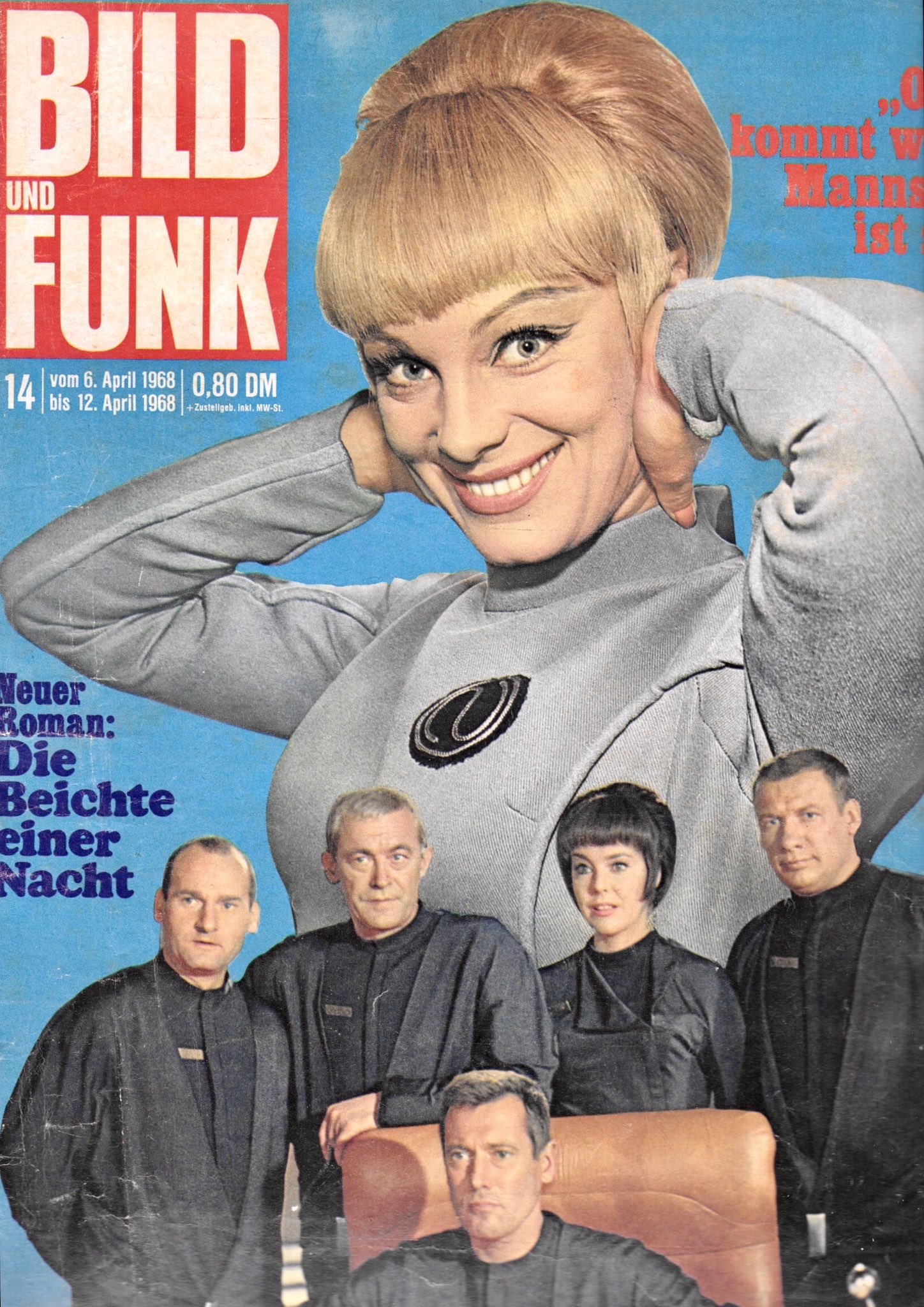

![[April 14, 1968] In Unquiet Times: The Frankfurt Arson Attacks, the Shooting of Rudi Dutschke and <i>Electronic Labyrinth THX-1138 4EB</i>](https://galacticjourney.org/wp-content/uploads/2023/04/THX_1138_01-672x372.jpg)

![[October 18, 1967] We Are The Martians: Quatermass and the Pit, Bonnie and Clyde, The Day the Fish Came Out and The Snake Pit and the Pendulum](https://galacticjourney.org/wp-content/uploads/2022/10/671018posters-672x372.jpg)

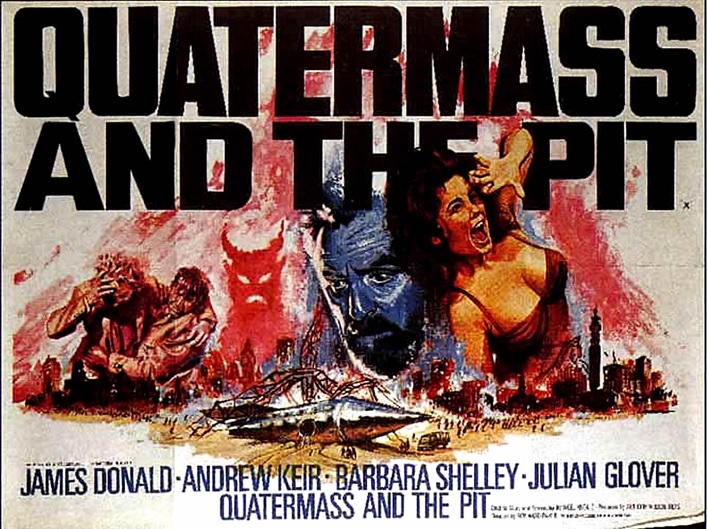
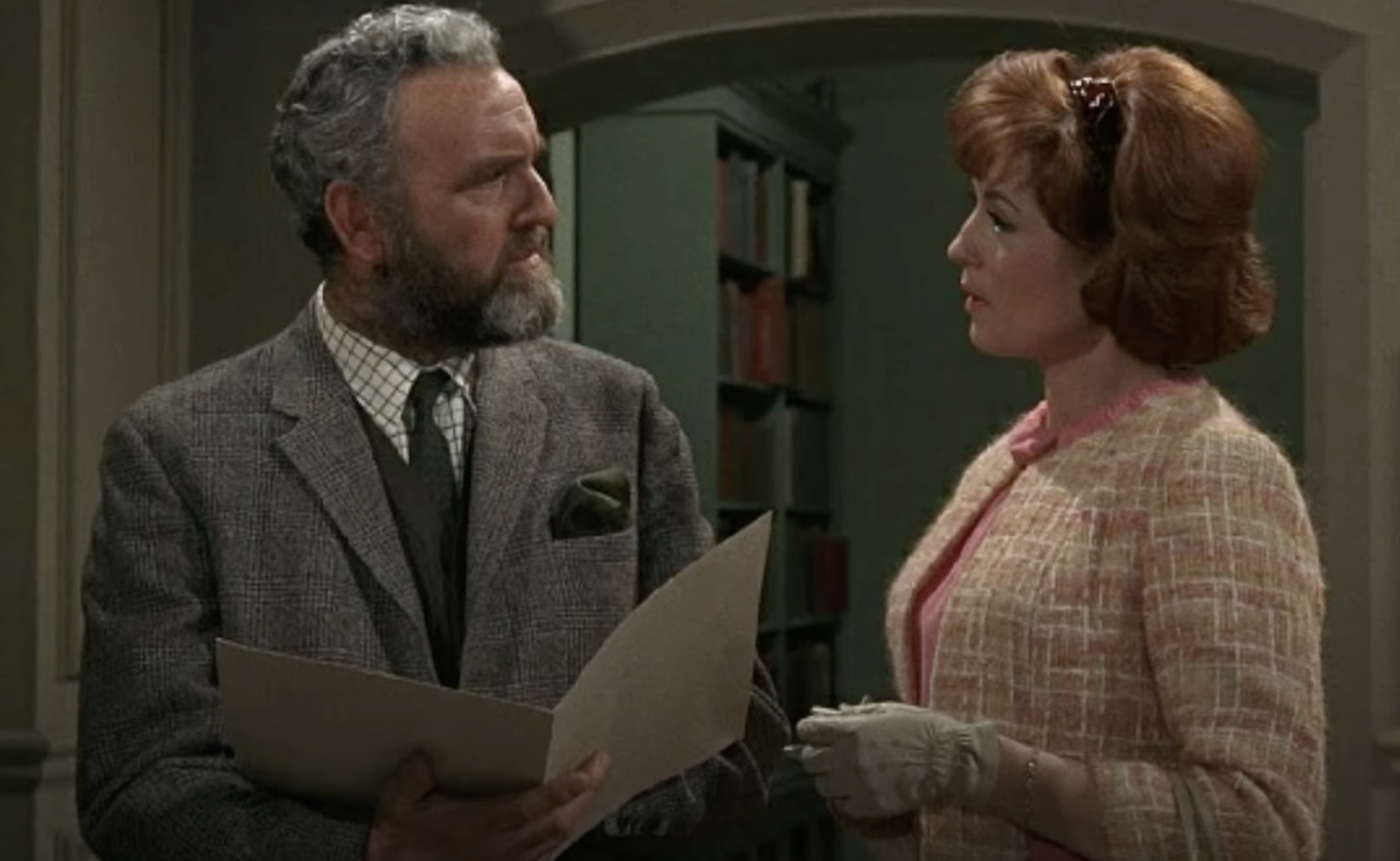 Likeable: Andrew Keir as Quatermass and Barbara Shelley as Miss Judd
Likeable: Andrew Keir as Quatermass and Barbara Shelley as Miss Judd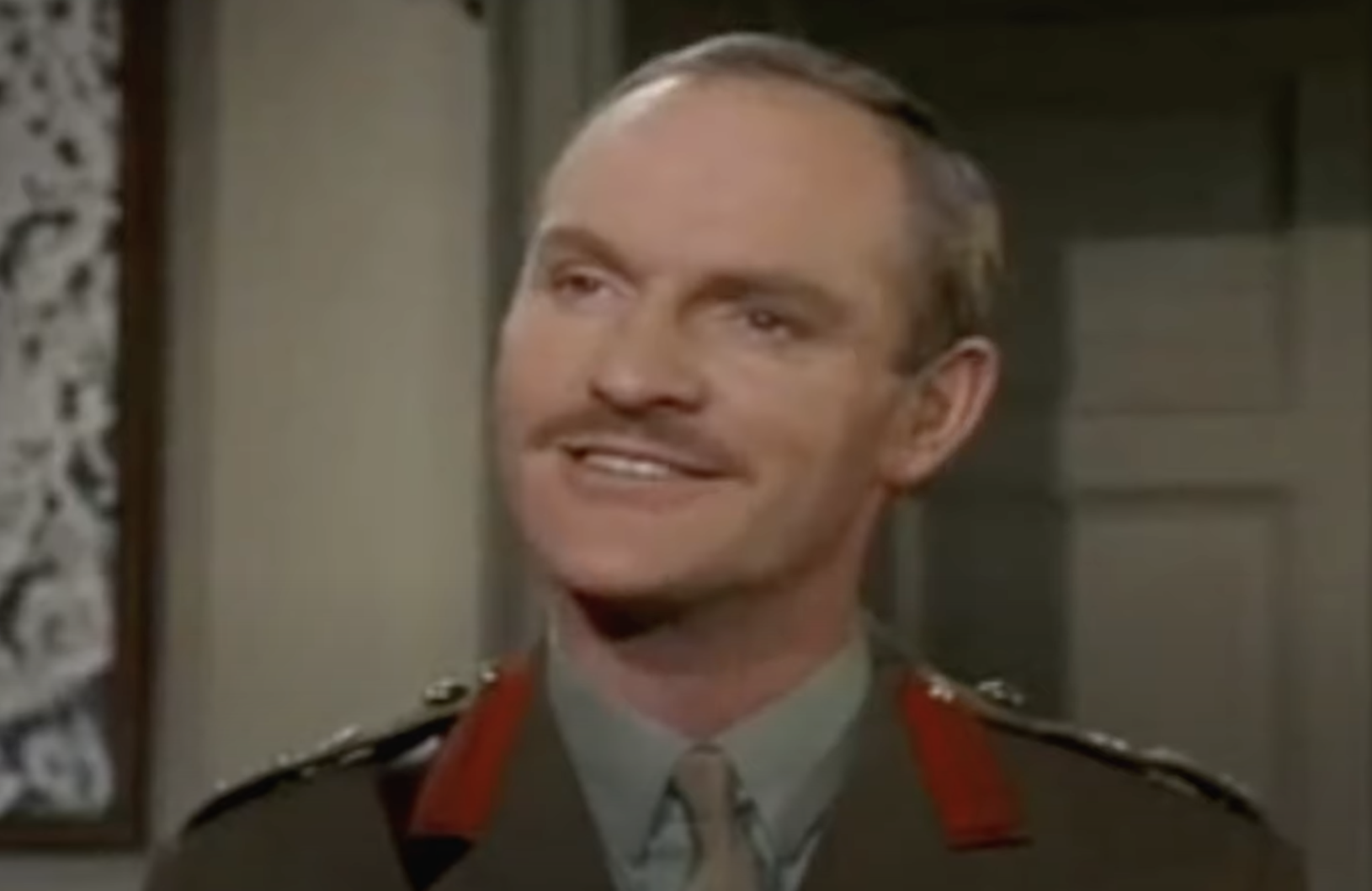 Colonel Breen, representing humanity's negative side.
Colonel Breen, representing humanity's negative side.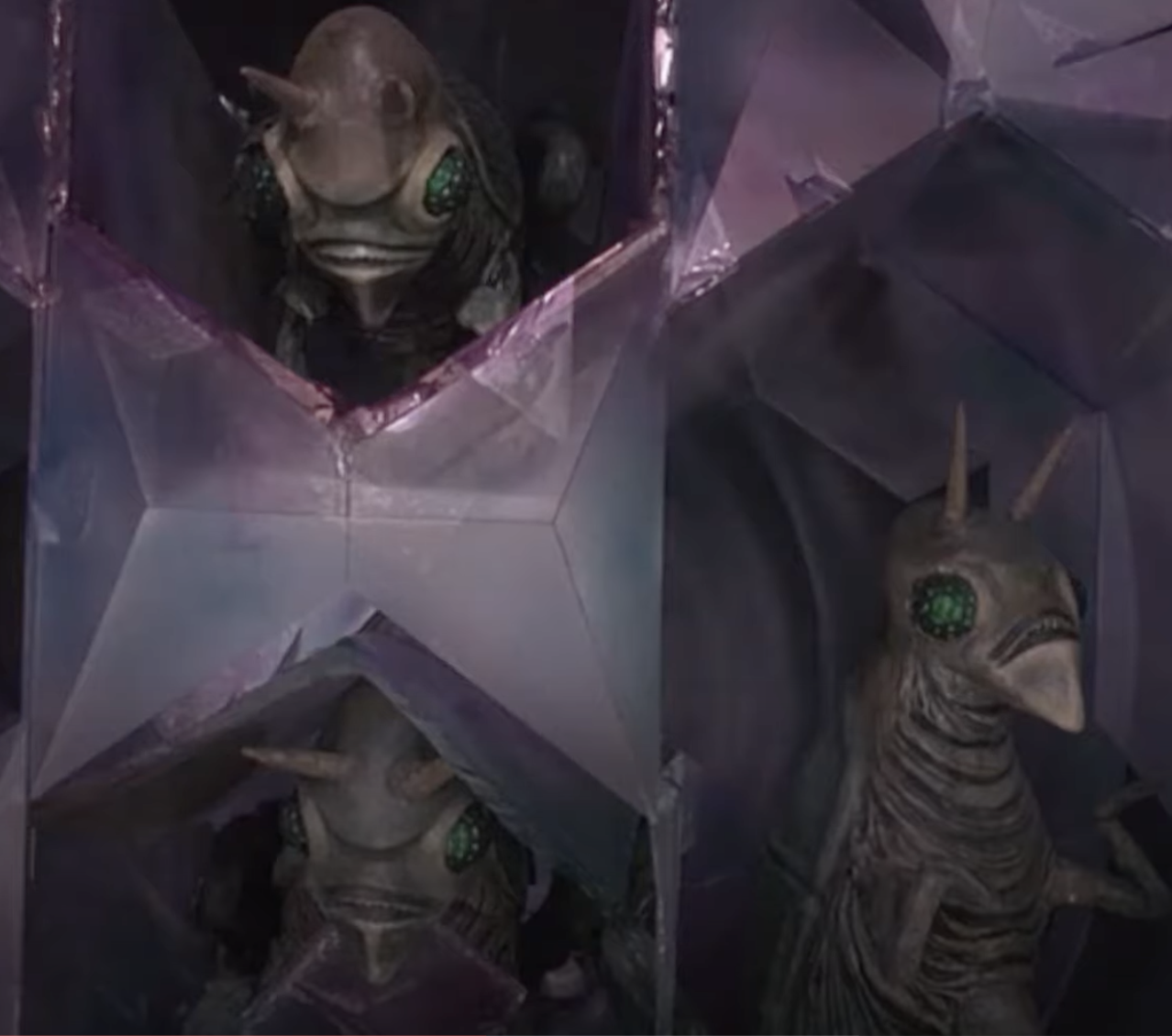 Hammer's take on the Martians.
Hammer's take on the Martians.
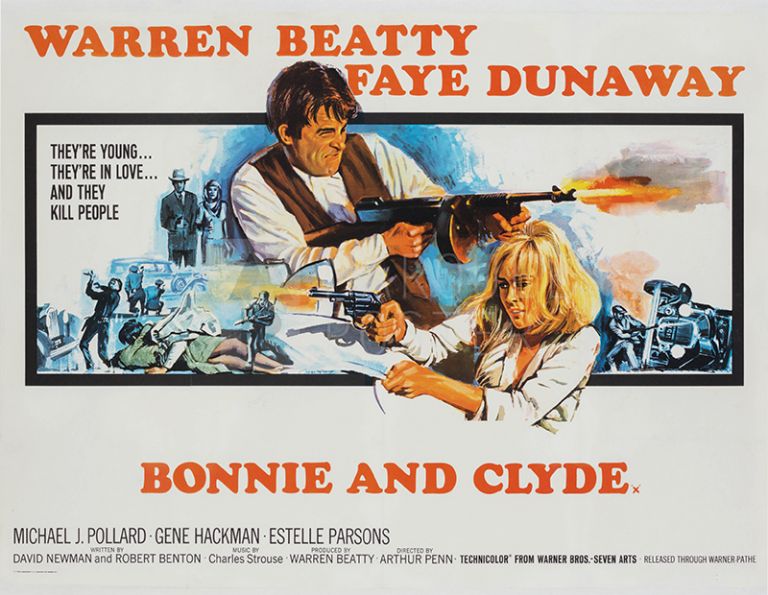
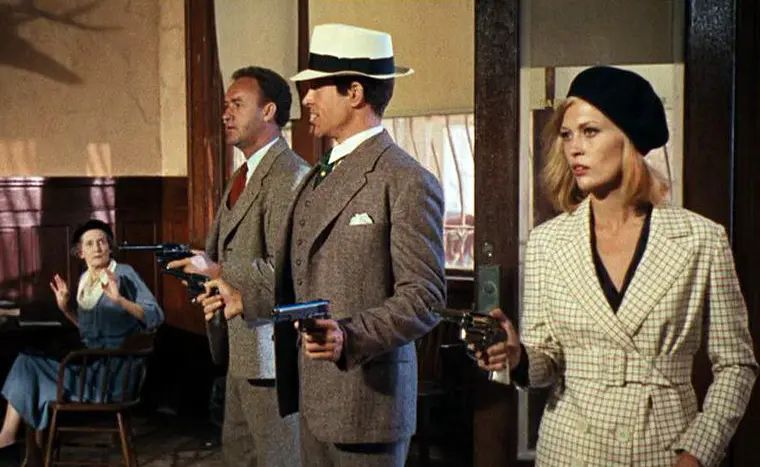
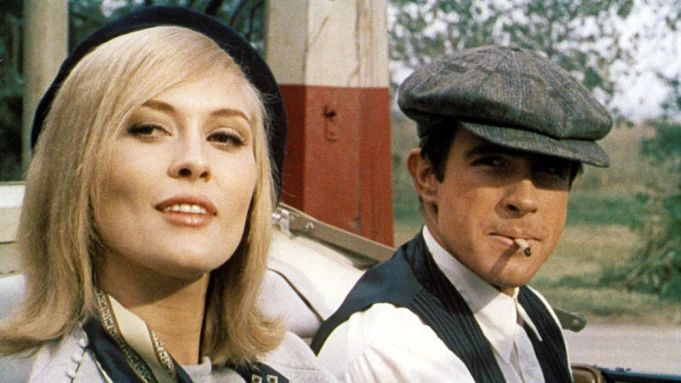





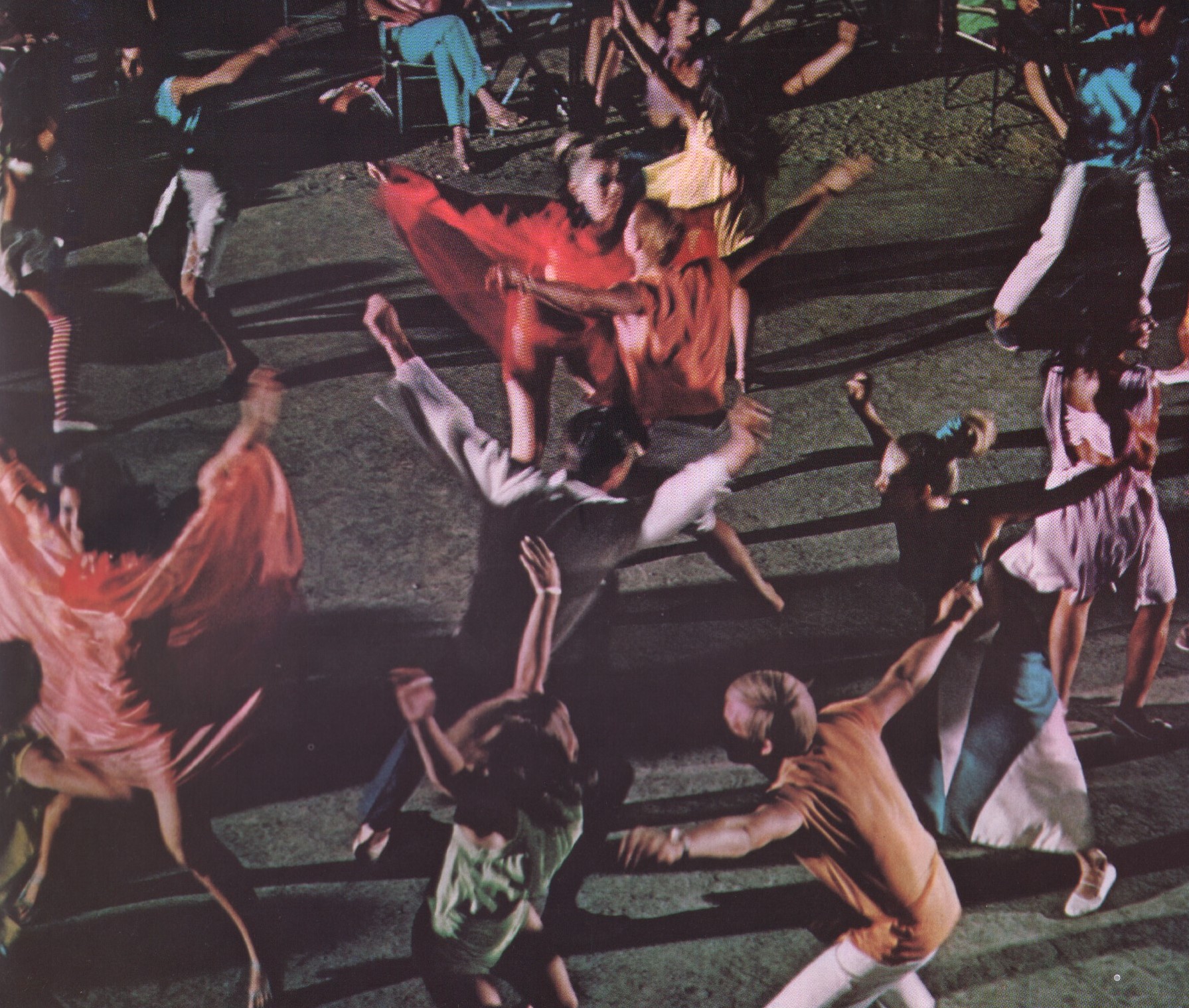

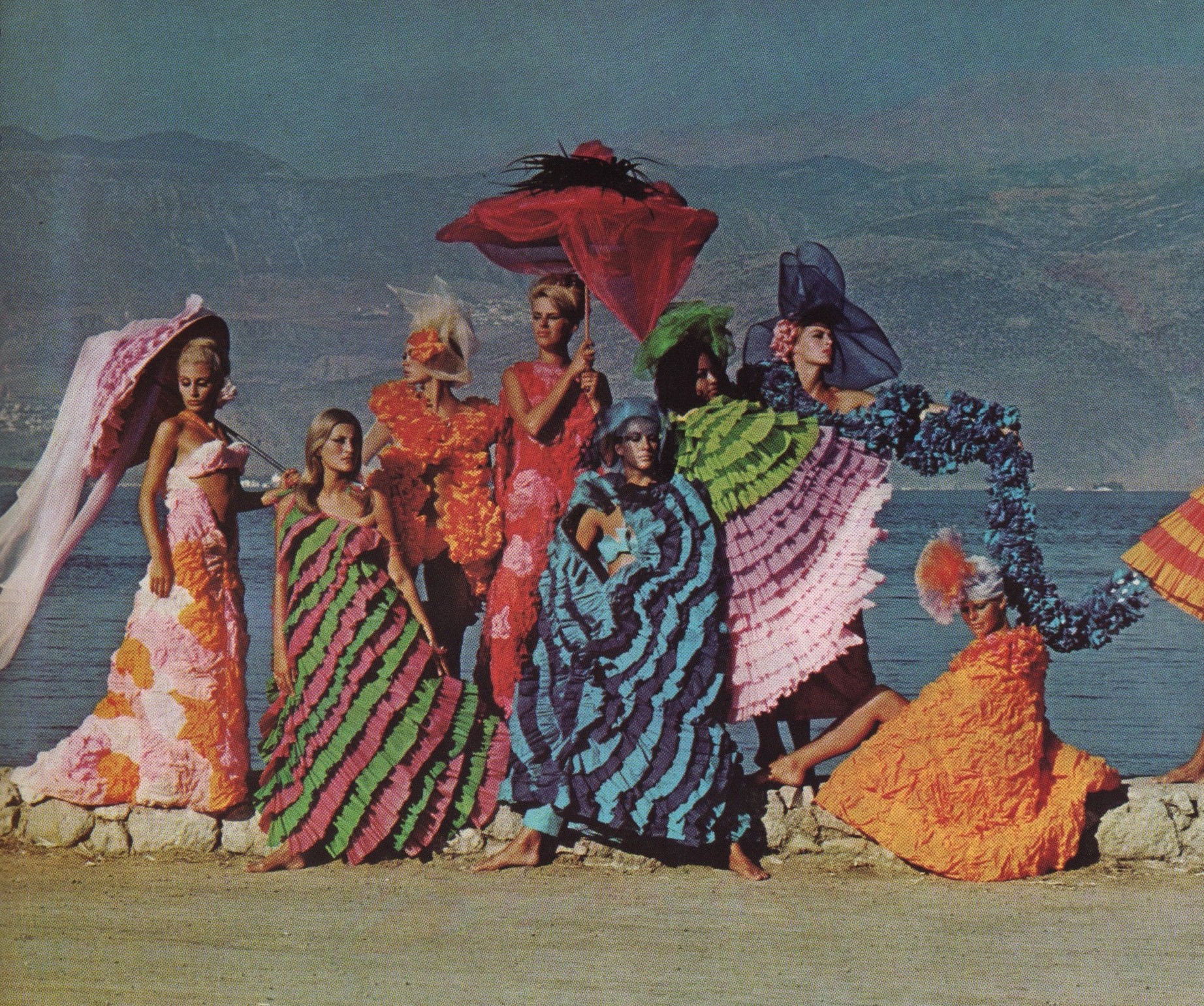
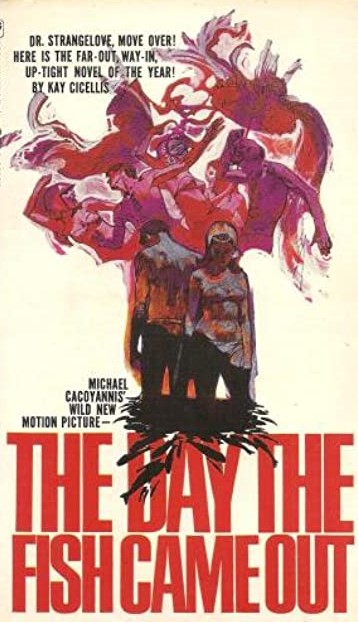

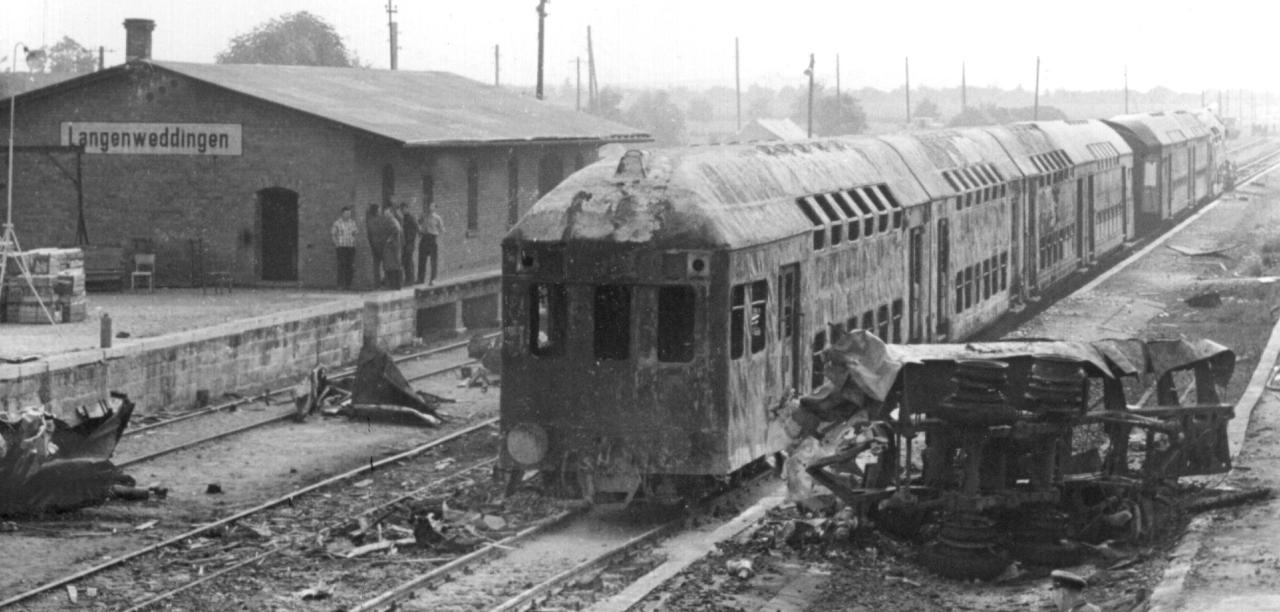
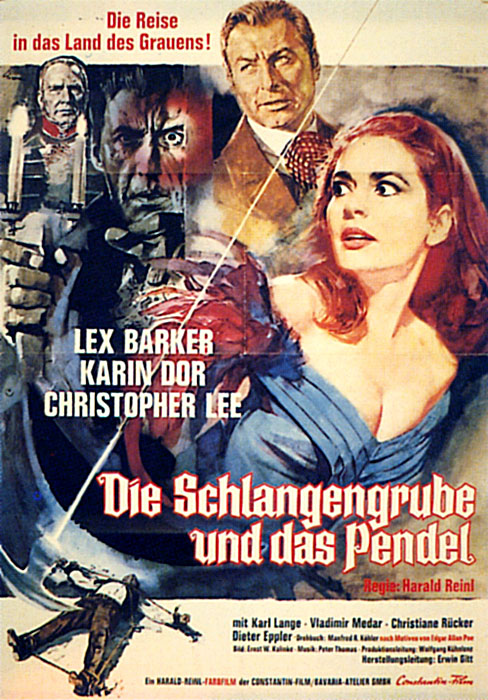
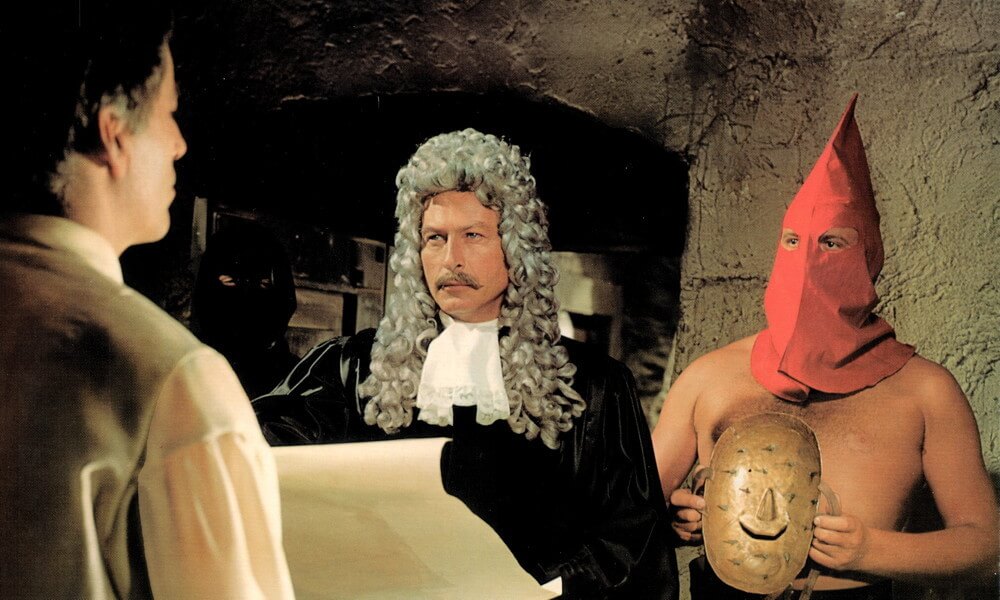
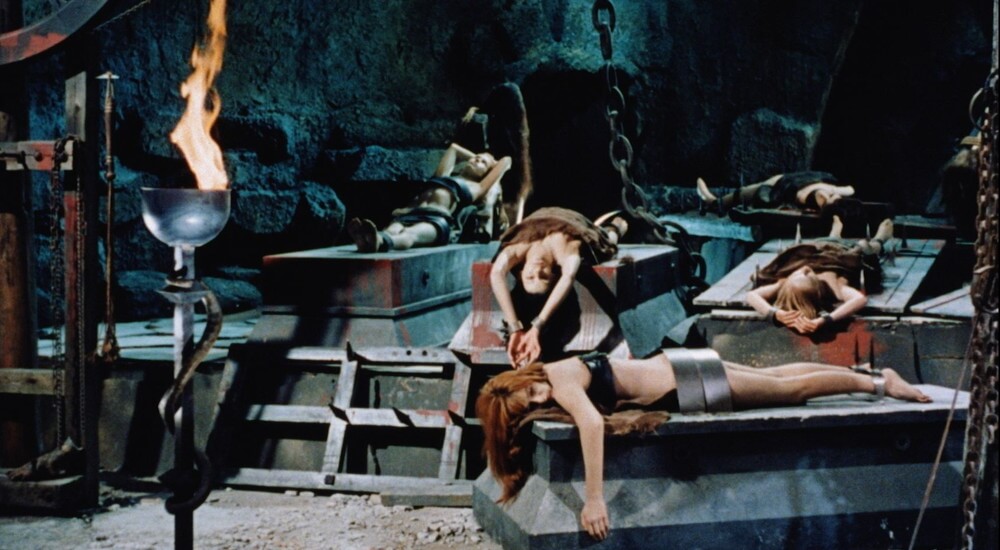


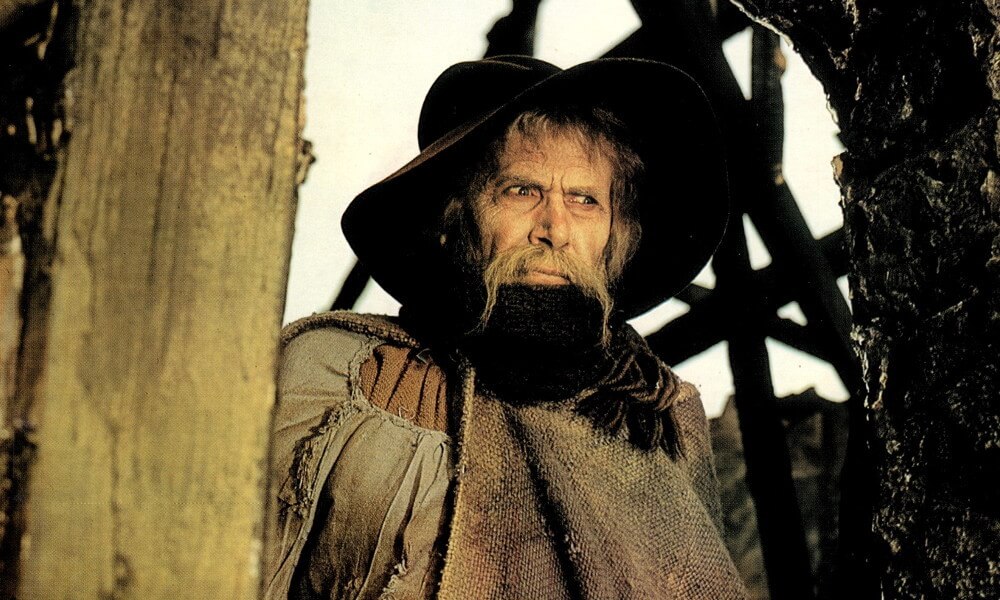
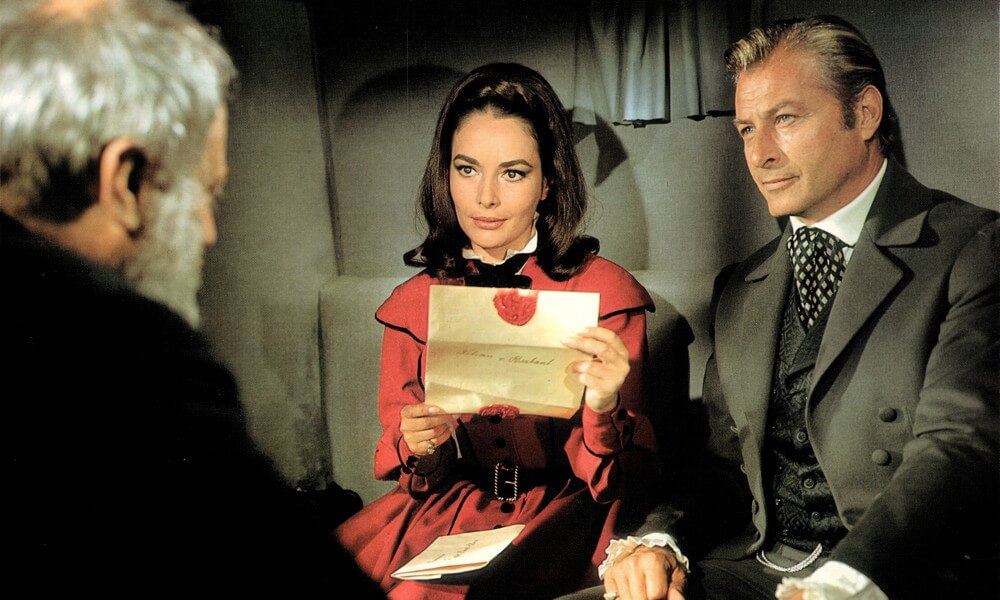
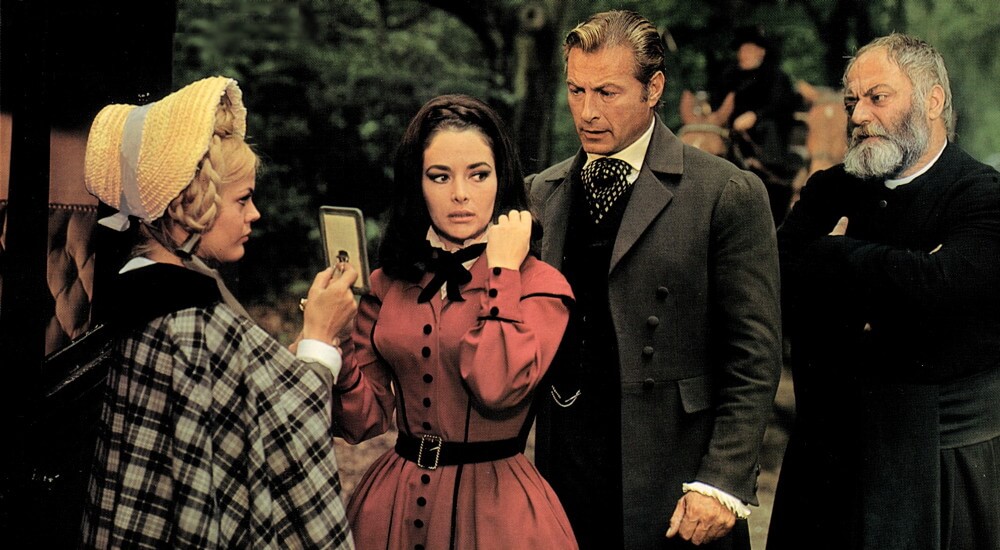
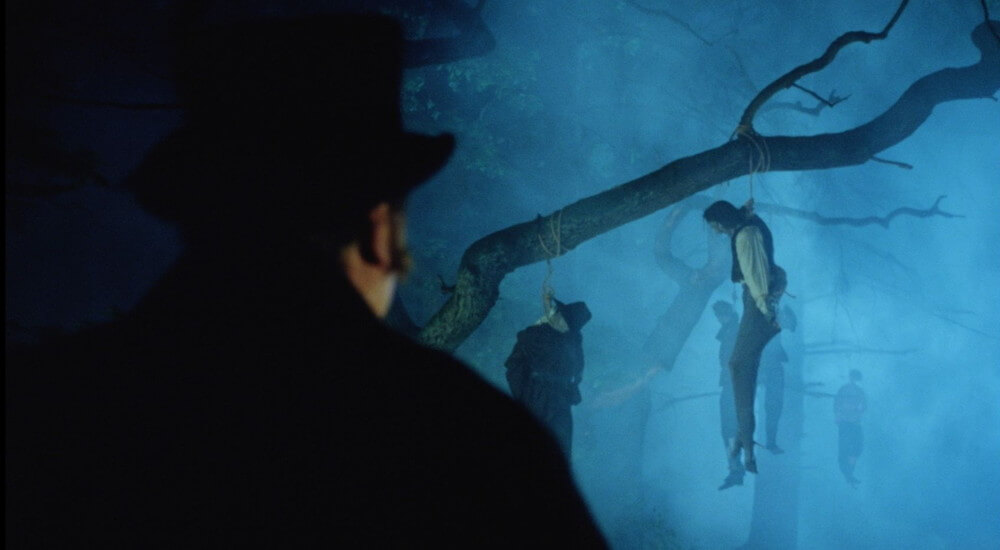
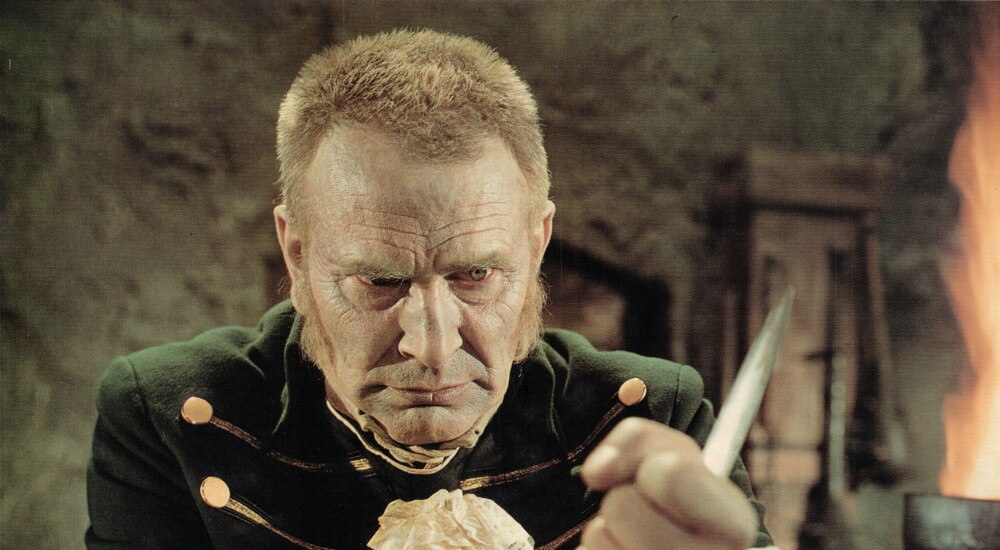
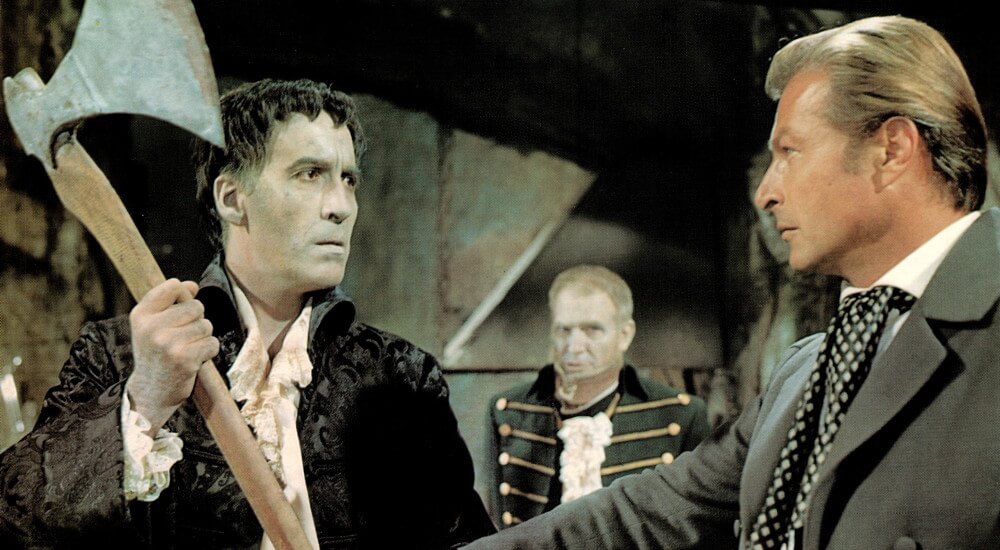
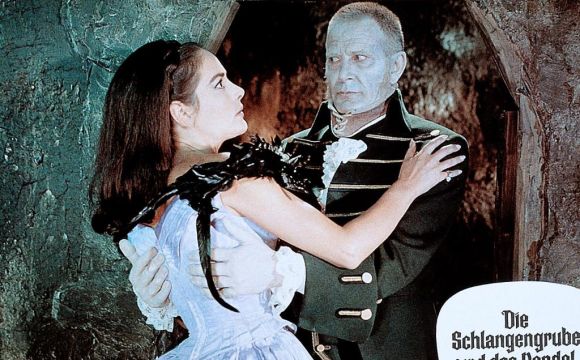
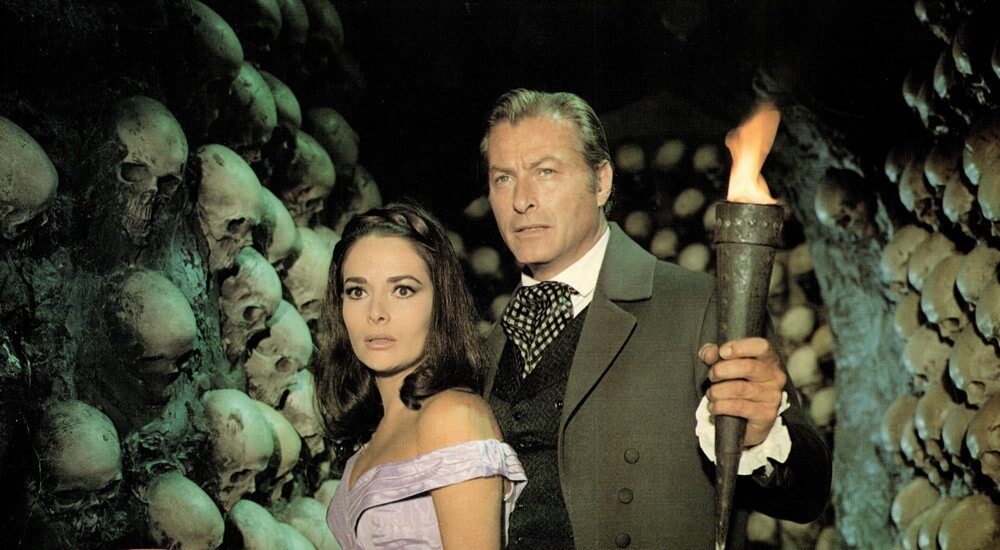
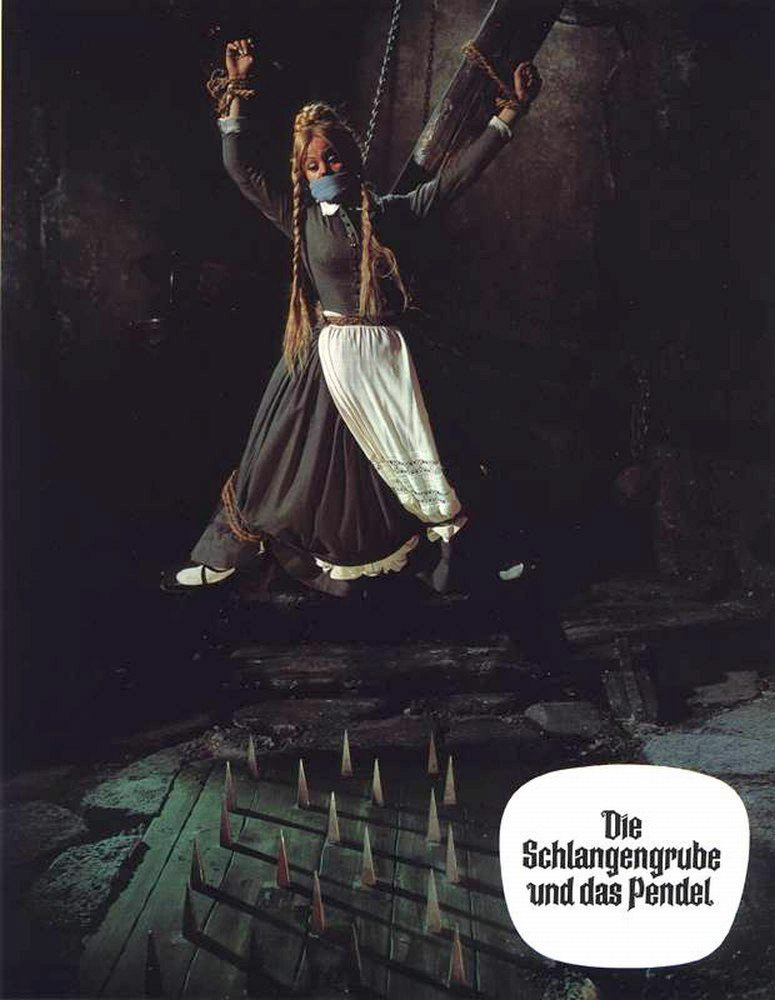
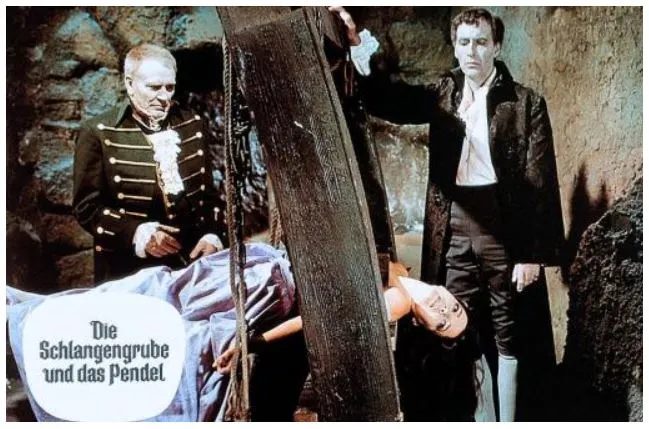
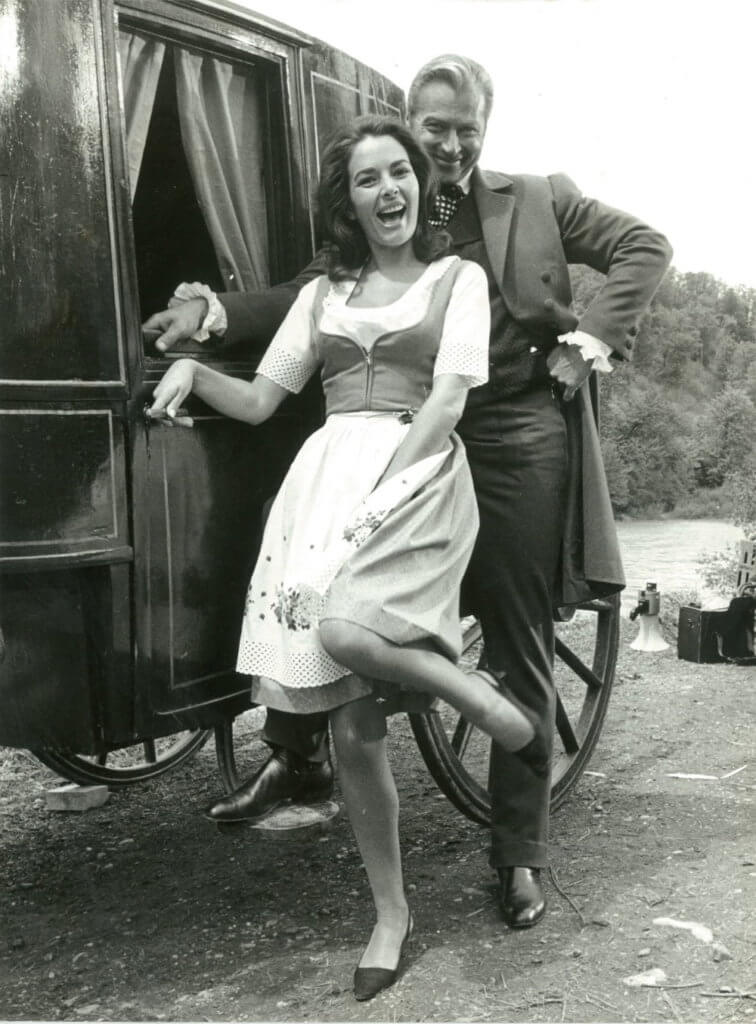
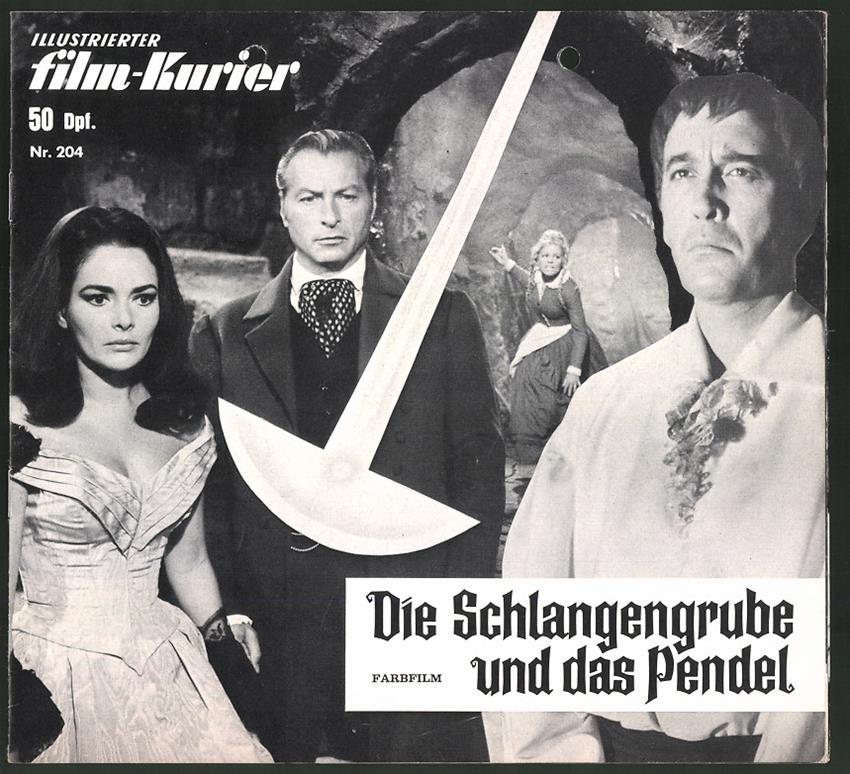
![[August 16, 1967] Boxes, Big Steel Boxes: The Rise of the Shipping Container](https://galacticjourney.org/wp-content/uploads/2022/08/Fairland-im-Uberseehafen_Bremenports-768x594-1-672x372.jpg)
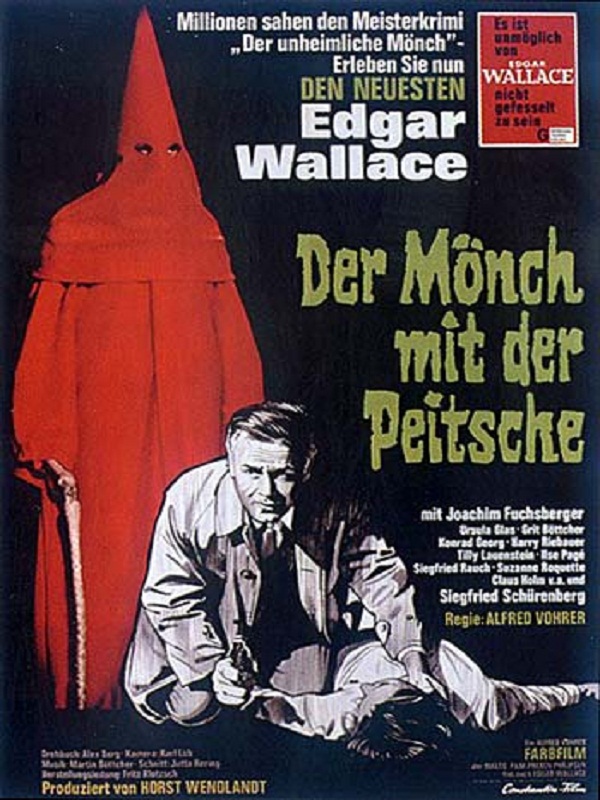
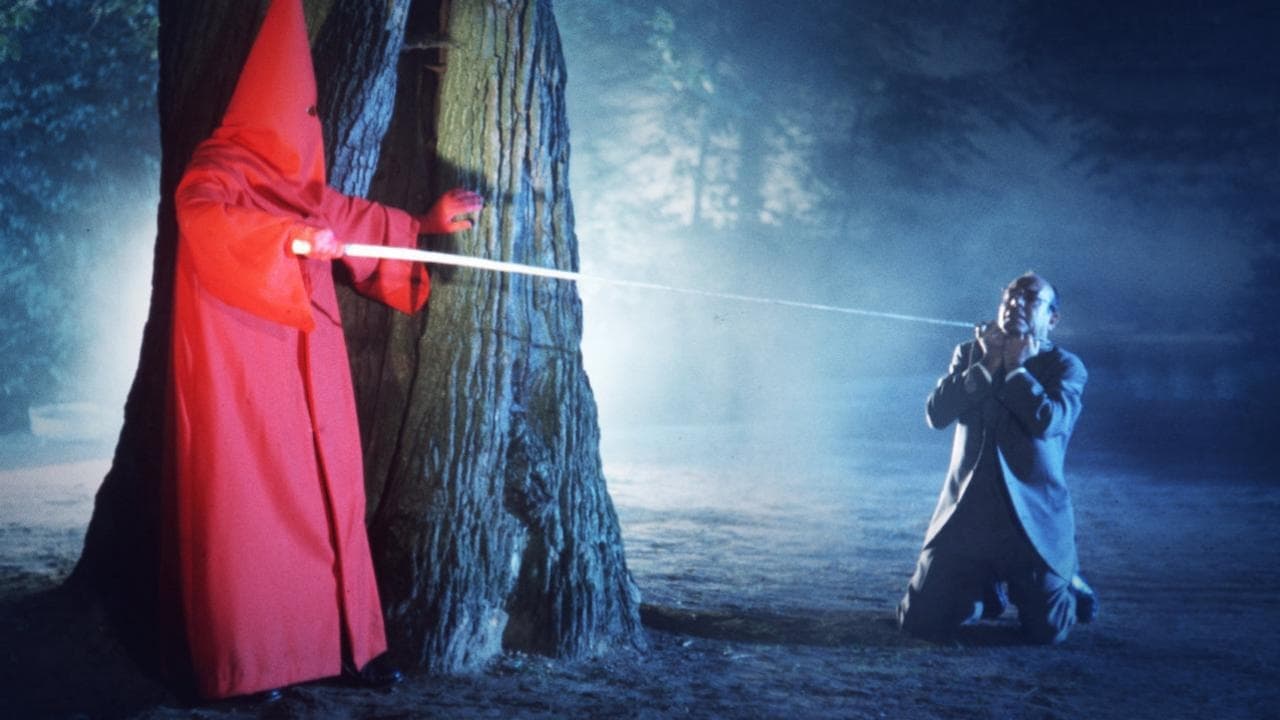
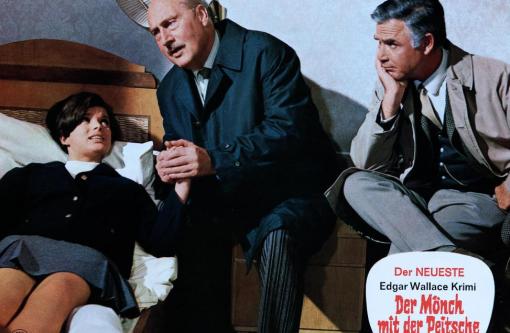

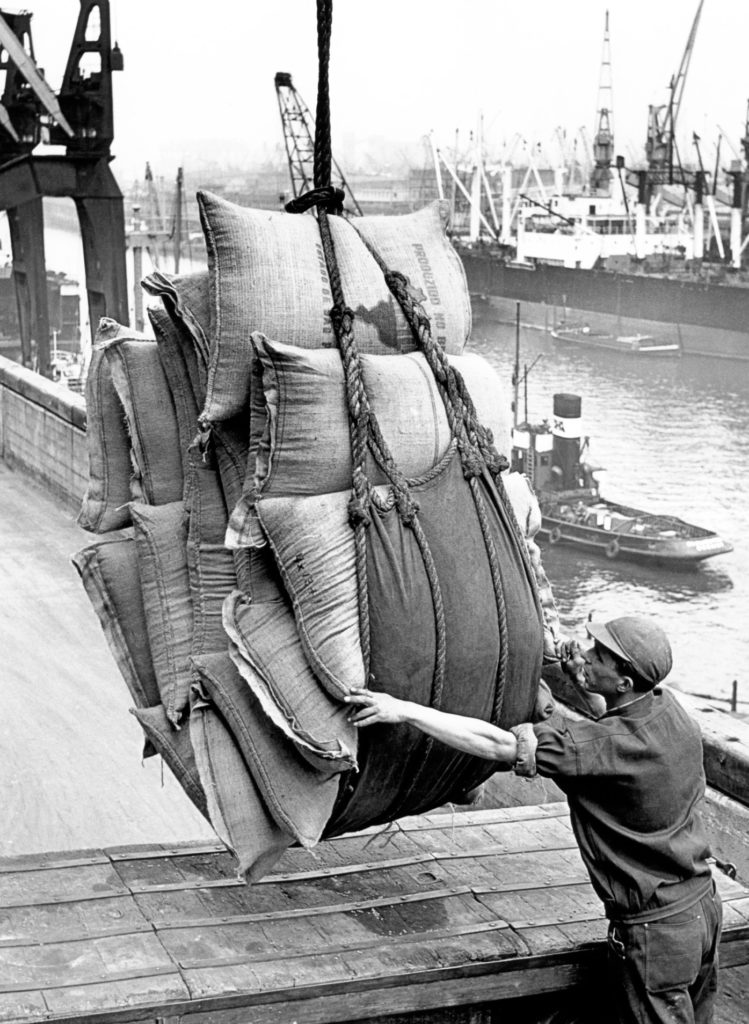



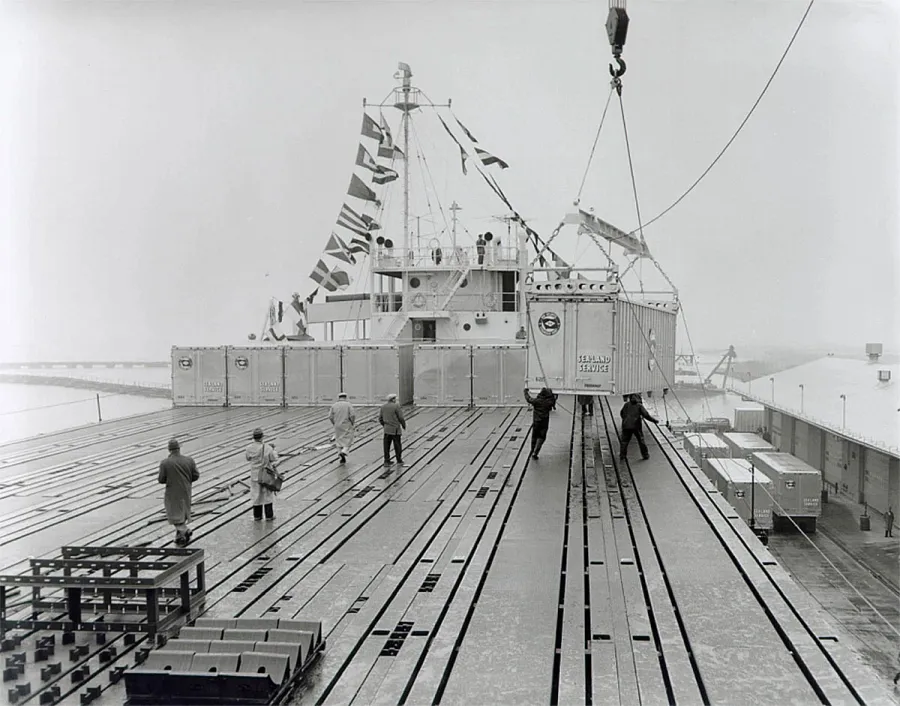


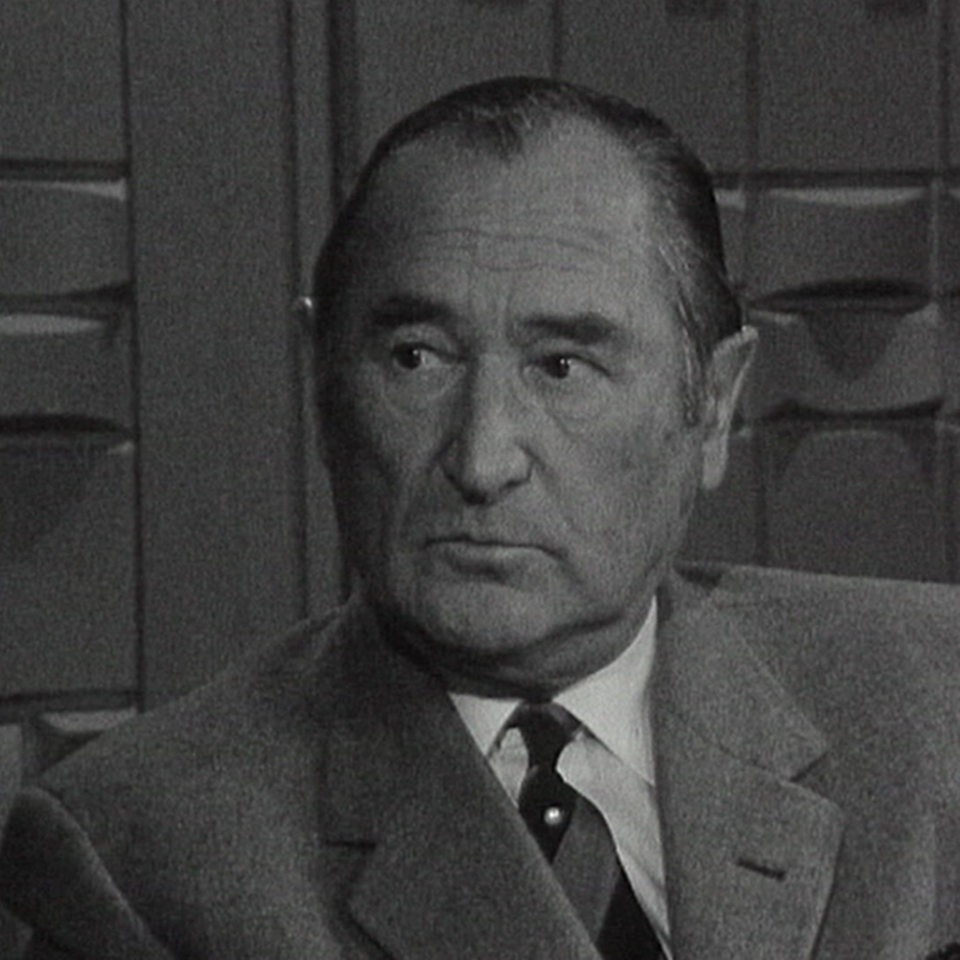




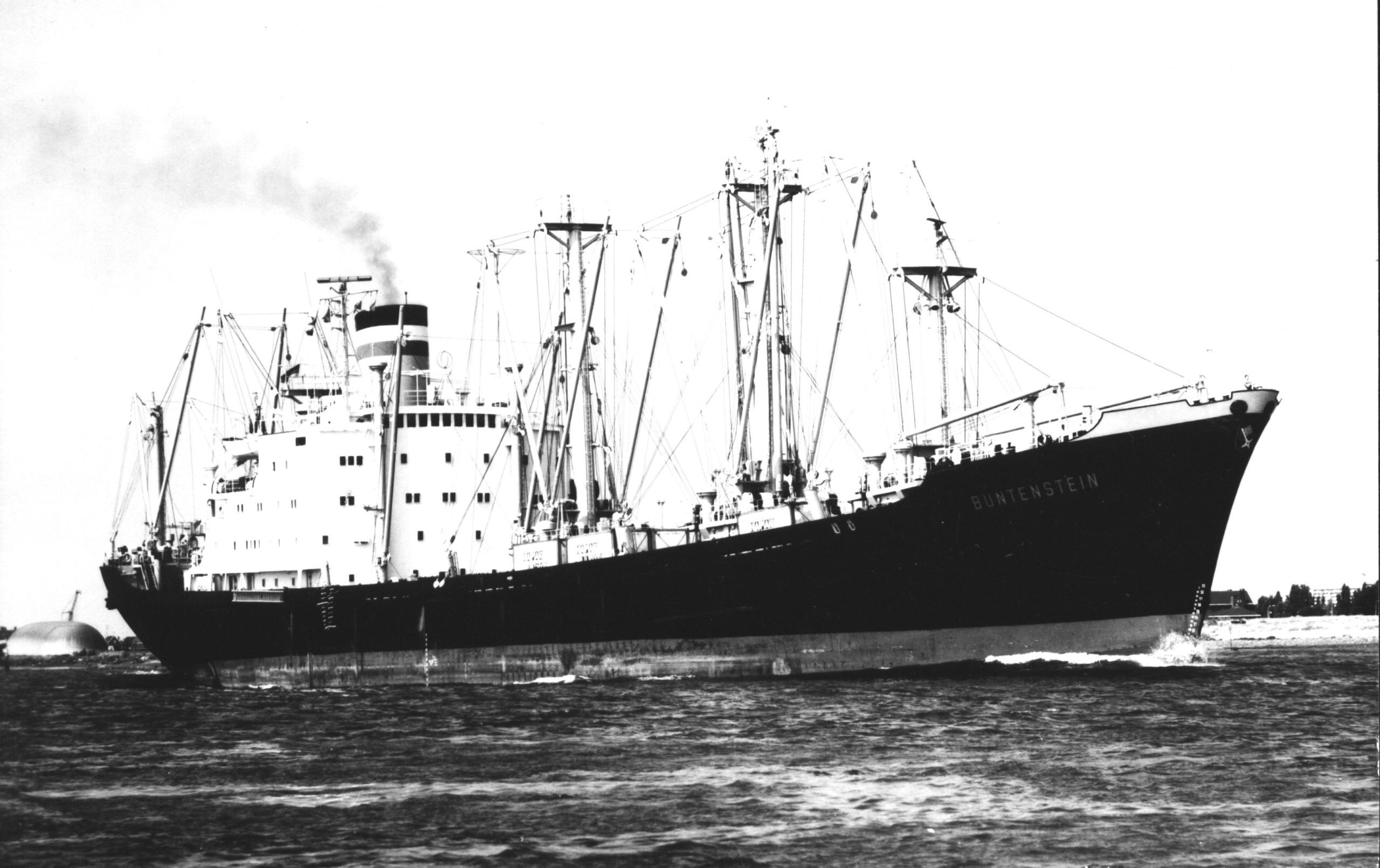

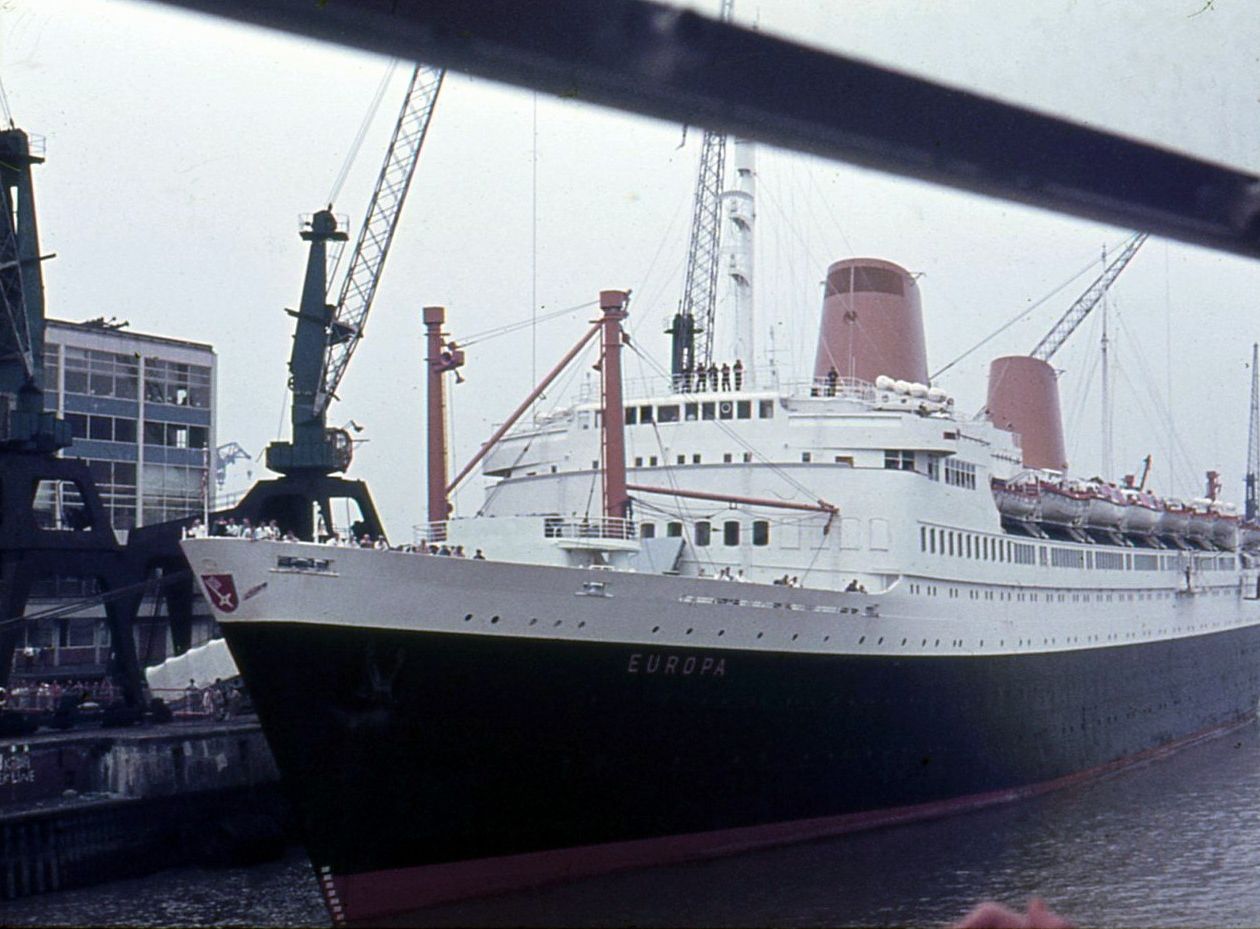

![[August 4, 1967] Bond Movie. James Bond Movie (<i>Casino Royale</i>)](https://galacticjourney.org/wp-content/uploads/2022/08/670427casinoroyale-672x372.jpg)

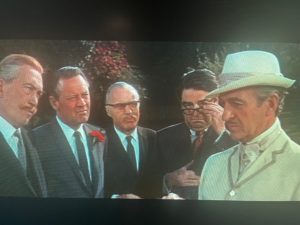 In plot terms, Casino Royale is two almost entirely separate films, tenuously linked by a handful of scenes. The ‘first’ plot features David Niven as a retired, now celibate, British agent named James Bond, who is returned to service when all other agents are being killed off due to their fondness for sex. Bond recruits a new agent, Coop (Terence Cooper), and instigates an anti-sex training programme, thus allowing the movie to have its cake and eat it through sequences of Coop being sexually tempted but boldly resisting. Mata Bond (Bond’s daughter by Mata Hari) is recruited by her father and discovers a plot to auction SMERSH agent Le Chiffre’s collection of blackmail materials to various military forces from across the world, whose senior staff have been photographed in compromising situations.
In plot terms, Casino Royale is two almost entirely separate films, tenuously linked by a handful of scenes. The ‘first’ plot features David Niven as a retired, now celibate, British agent named James Bond, who is returned to service when all other agents are being killed off due to their fondness for sex. Bond recruits a new agent, Coop (Terence Cooper), and instigates an anti-sex training programme, thus allowing the movie to have its cake and eat it through sequences of Coop being sexually tempted but boldly resisting. Mata Bond (Bond’s daughter by Mata Hari) is recruited by her father and discovers a plot to auction SMERSH agent Le Chiffre’s collection of blackmail materials to various military forces from across the world, whose senior staff have been photographed in compromising situations. Meanwhile Mata and Bond travel to Casino Royale, where they discover the mastermind behind SMERSH, Doctor Noah, is in fact Jimmy Bond, Bond’s nephew (Woody Allen), who has become a supervillain through feelings of inadequacy. Noah is tricked into swallowing a pill that turns him into a walking atomic bomb and a free-for-all breaks out in the casino, with invasions by cowboys, Indians, seals, the Keystone Kops, a French legionnaire, and actor George Raft — the whole thing eventually blowing sky-high as the heroes fail to prevent Noah from exploding.
Meanwhile Mata and Bond travel to Casino Royale, where they discover the mastermind behind SMERSH, Doctor Noah, is in fact Jimmy Bond, Bond’s nephew (Woody Allen), who has become a supervillain through feelings of inadequacy. Noah is tricked into swallowing a pill that turns him into a walking atomic bomb and a free-for-all breaks out in the casino, with invasions by cowboys, Indians, seals, the Keystone Kops, a French legionnaire, and actor George Raft — the whole thing eventually blowing sky-high as the heroes fail to prevent Noah from exploding.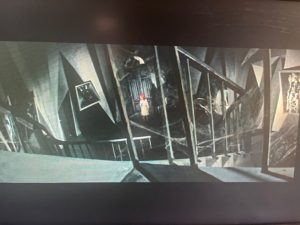 Certain elements of the story are indeed more or less direct spoofs, either of the James Bond franchise itself or of the wider spy series craze. The film starts with a pre-credits sequence which is just a tiny scene of Bond meeting a French agent in a pissoir, simultaneously setting up and destroying expectations of a James Bond-style pre-credits action sequence. Mata Bond’s trip to Germany places her within a stage set straight out of The Cabinet of Doctor Caligari, in a nod to the huge debt the spy film genre owes to Expressionist artform. The supporting cast includes people who’ve either appeared in Bond movies or the many independent television spy series that have cashed in on the Bond craze, notably Ursula Andress but also Vladek Sheybal and promising young character actor Burt Kwouk. As in many spy series, doubles and duplicates turn up frequently. The bizarre conceit of having all the agents, male, female, and, by the end of the adventure, animals, named James Bond/007, can be construed as a sly comment on the fact more than one actor has played Bond, or even a metatextual joke about the proliferation of code-names and numbers in such series. And, of course, the villain is motivated by a sense of personal and sexual inadequacy—what spy series villain isn’t?
Certain elements of the story are indeed more or less direct spoofs, either of the James Bond franchise itself or of the wider spy series craze. The film starts with a pre-credits sequence which is just a tiny scene of Bond meeting a French agent in a pissoir, simultaneously setting up and destroying expectations of a James Bond-style pre-credits action sequence. Mata Bond’s trip to Germany places her within a stage set straight out of The Cabinet of Doctor Caligari, in a nod to the huge debt the spy film genre owes to Expressionist artform. The supporting cast includes people who’ve either appeared in Bond movies or the many independent television spy series that have cashed in on the Bond craze, notably Ursula Andress but also Vladek Sheybal and promising young character actor Burt Kwouk. As in many spy series, doubles and duplicates turn up frequently. The bizarre conceit of having all the agents, male, female, and, by the end of the adventure, animals, named James Bond/007, can be construed as a sly comment on the fact more than one actor has played Bond, or even a metatextual joke about the proliferation of code-names and numbers in such series. And, of course, the villain is motivated by a sense of personal and sexual inadequacy—what spy series villain isn’t? However, both plots reach their highest, as well as their lowest, moments when they embrace the surreal comedy ethos. Arguably this started with The Goon Show, of which Sellers was a key member, before really finding its home with audiences in the Sixties. Current examples of this genre include What’s New, Pussycat?, Round The Horne, the Dadaist stylings of the Bonzo Dog Doo-Dah Band and At Last the 1948 Show. The trend is gaining strength: reportedly Paul McCartney is also a fan and is keen to adopt fantastical elements into Beatles films. So it’s not surprising, given the involvement of Sellers and Feldman, that Casino Royale would be taken in such a direction.
However, both plots reach their highest, as well as their lowest, moments when they embrace the surreal comedy ethos. Arguably this started with The Goon Show, of which Sellers was a key member, before really finding its home with audiences in the Sixties. Current examples of this genre include What’s New, Pussycat?, Round The Horne, the Dadaist stylings of the Bonzo Dog Doo-Dah Band and At Last the 1948 Show. The trend is gaining strength: reportedly Paul McCartney is also a fan and is keen to adopt fantastical elements into Beatles films. So it’s not surprising, given the involvement of Sellers and Feldman, that Casino Royale would be taken in such a direction.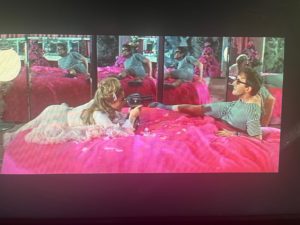 The picture’s surreal comedy doesn’t always work. For instance, there’s an annoyingly self-indulgent sequence which seems just an excuse for Sellers to dress up as historical characters. Others are better: Niven’s Bond, for instance, lives on an estate guarded by a pride of lions (“I did not come here to be devoured by symbols of monarchy!” protests the Soviet head of espionage), and the idea James Bond and Mata Hari had a relationship is a somehow appropriate melding of the archetypes of the male and female spy. Mata Bond stops the auction of Le Chiffre’s compromising photos by switching the projector to a war film: as if triggered, the British, American, Chinese and Russian representatives instantly all start fighting each other, in a comment on the Cold War worthy of
The picture’s surreal comedy doesn’t always work. For instance, there’s an annoyingly self-indulgent sequence which seems just an excuse for Sellers to dress up as historical characters. Others are better: Niven’s Bond, for instance, lives on an estate guarded by a pride of lions (“I did not come here to be devoured by symbols of monarchy!” protests the Soviet head of espionage), and the idea James Bond and Mata Hari had a relationship is a somehow appropriate melding of the archetypes of the male and female spy. Mata Bond stops the auction of Le Chiffre’s compromising photos by switching the projector to a war film: as if triggered, the British, American, Chinese and Russian representatives instantly all start fighting each other, in a comment on the Cold War worthy of  Furthermore, the surrealist aspect transforms some of the problems and conflicts that arose during its production, from potential flaws to part of an overarching psychedelic atmosphere. Orson Welles had apparently insisted on performing magic tricks on camera, but these become both a send-up of the contrived “eccentricities” of spy-series villains and a deeper comment on illusion and artifice. The title sequence, which starts out as a simple riff on Bond films’ animated credits, becomes increasingly disconcerting, the imagery including walls of eyes staring pitilessly out at the viewer, with connotations of surveillance and voyeurism.
Furthermore, the surrealist aspect transforms some of the problems and conflicts that arose during its production, from potential flaws to part of an overarching psychedelic atmosphere. Orson Welles had apparently insisted on performing magic tricks on camera, but these become both a send-up of the contrived “eccentricities” of spy-series villains and a deeper comment on illusion and artifice. The title sequence, which starts out as a simple riff on Bond films’ animated credits, becomes increasingly disconcerting, the imagery including walls of eyes staring pitilessly out at the viewer, with connotations of surveillance and voyeurism. At the climax, the presence of multiple James Bonds escalates into a scenario where literally everyone becomes the titular hero; and this, together with the recurrence of doubles and duplicates, poses serious questions about how we construct our identity in modern society. At the end, everyone dies, going to Heaven or Hell, the accompanying random images and cheery music underscoring that there can be no guaranteed rescue or happy-ever-after in the atomic age.
At the climax, the presence of multiple James Bonds escalates into a scenario where literally everyone becomes the titular hero; and this, together with the recurrence of doubles and duplicates, poses serious questions about how we construct our identity in modern society. At the end, everyone dies, going to Heaven or Hell, the accompanying random images and cheery music underscoring that there can be no guaranteed rescue or happy-ever-after in the atomic age.![[June 8, 1967] Rebels With And Without Causes (<i>Riot on Sunset Strip</i> and <i>The Wild Angels</i>)](https://galacticjourney.org/wp-content/uploads/2022/05/Untitled-2-672x372.jpg)
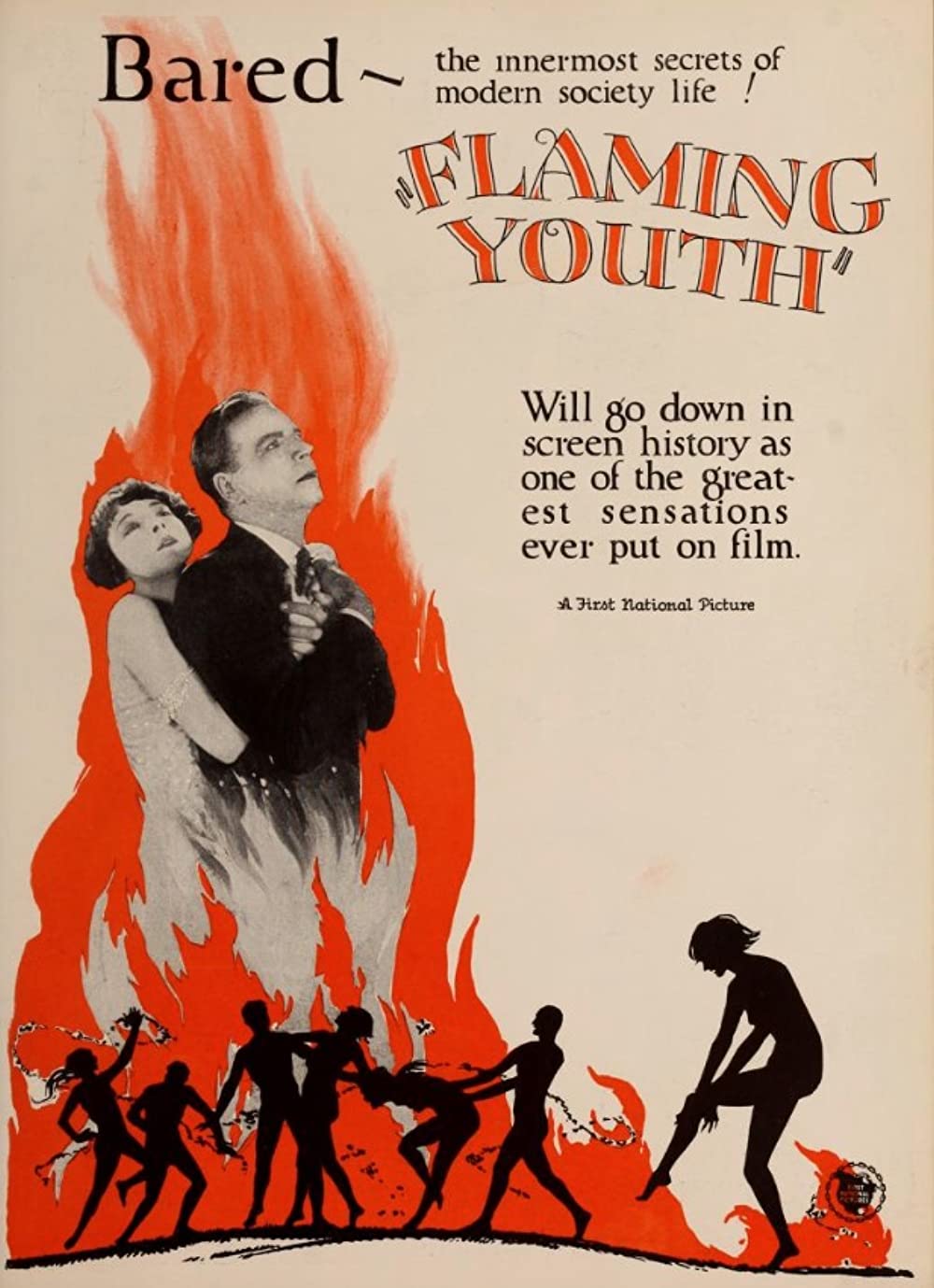
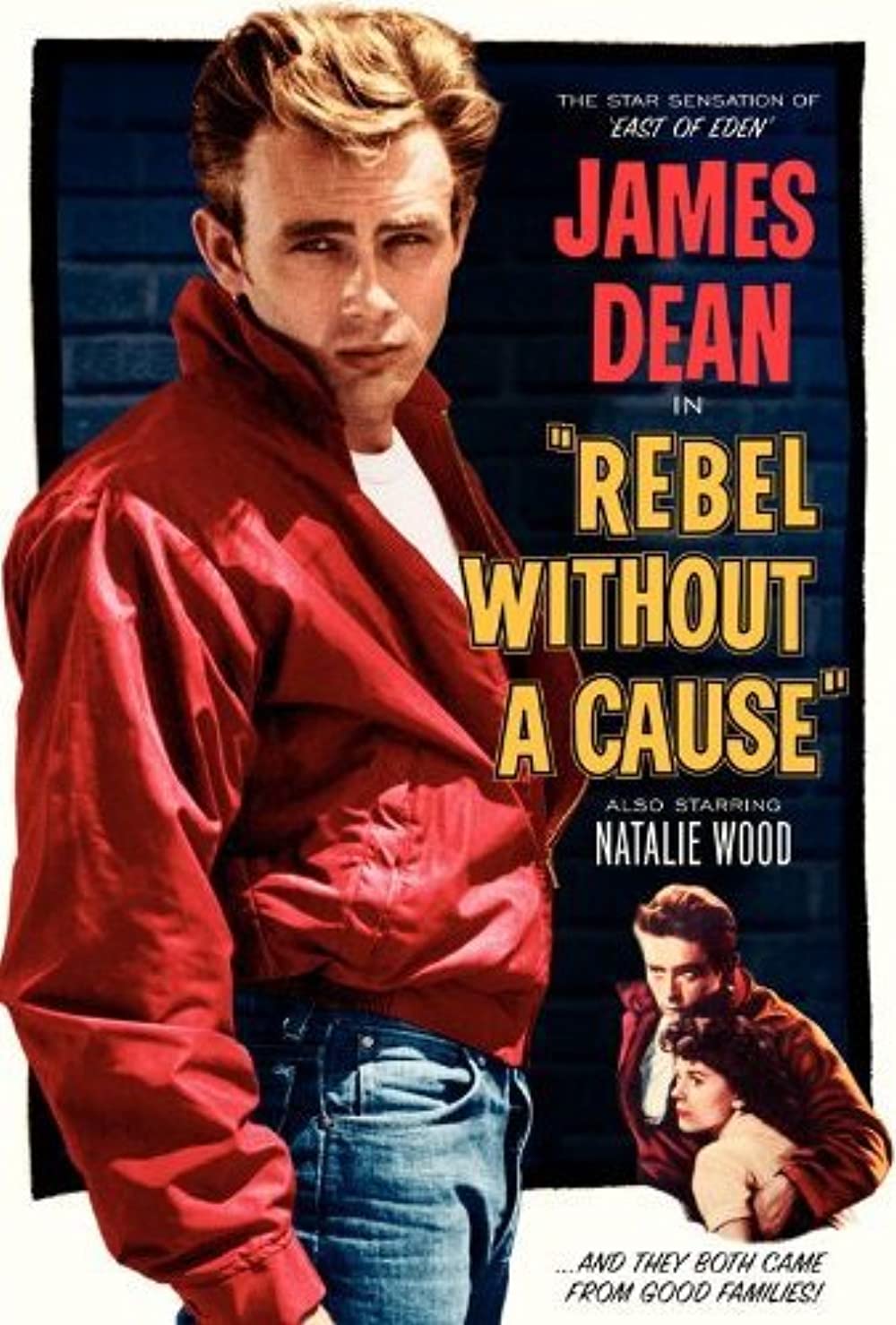
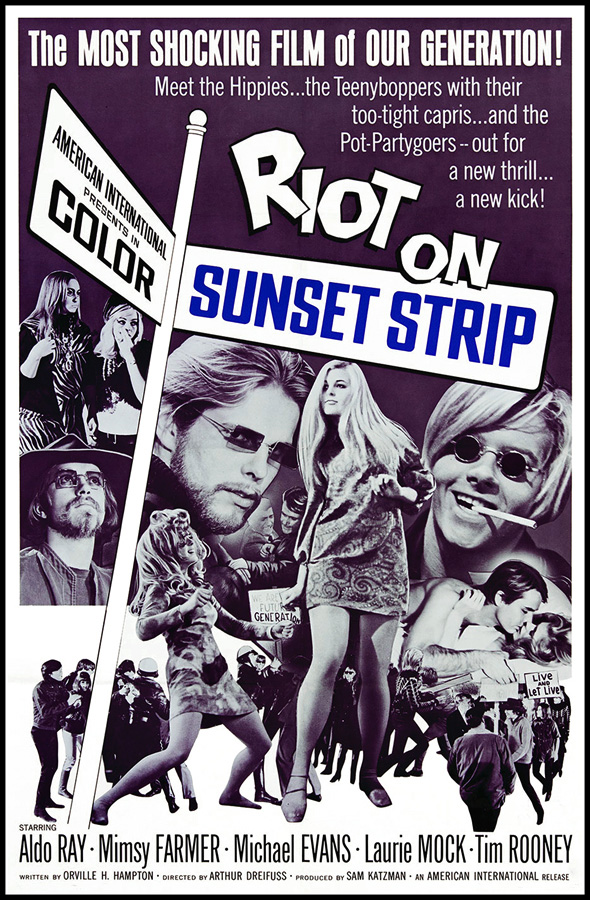
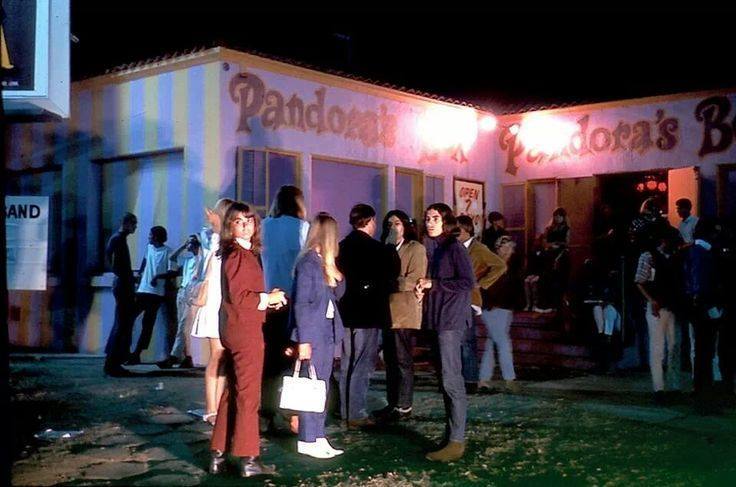
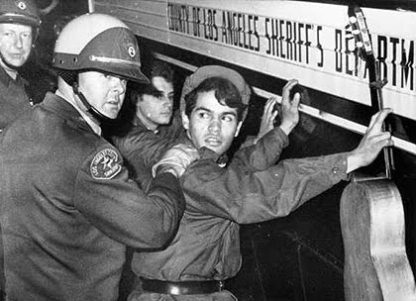
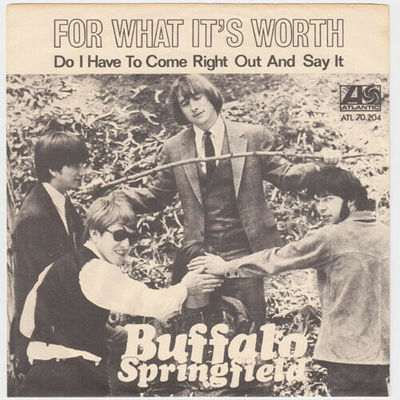
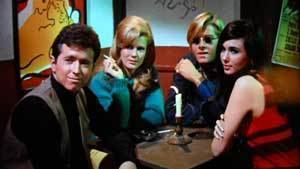
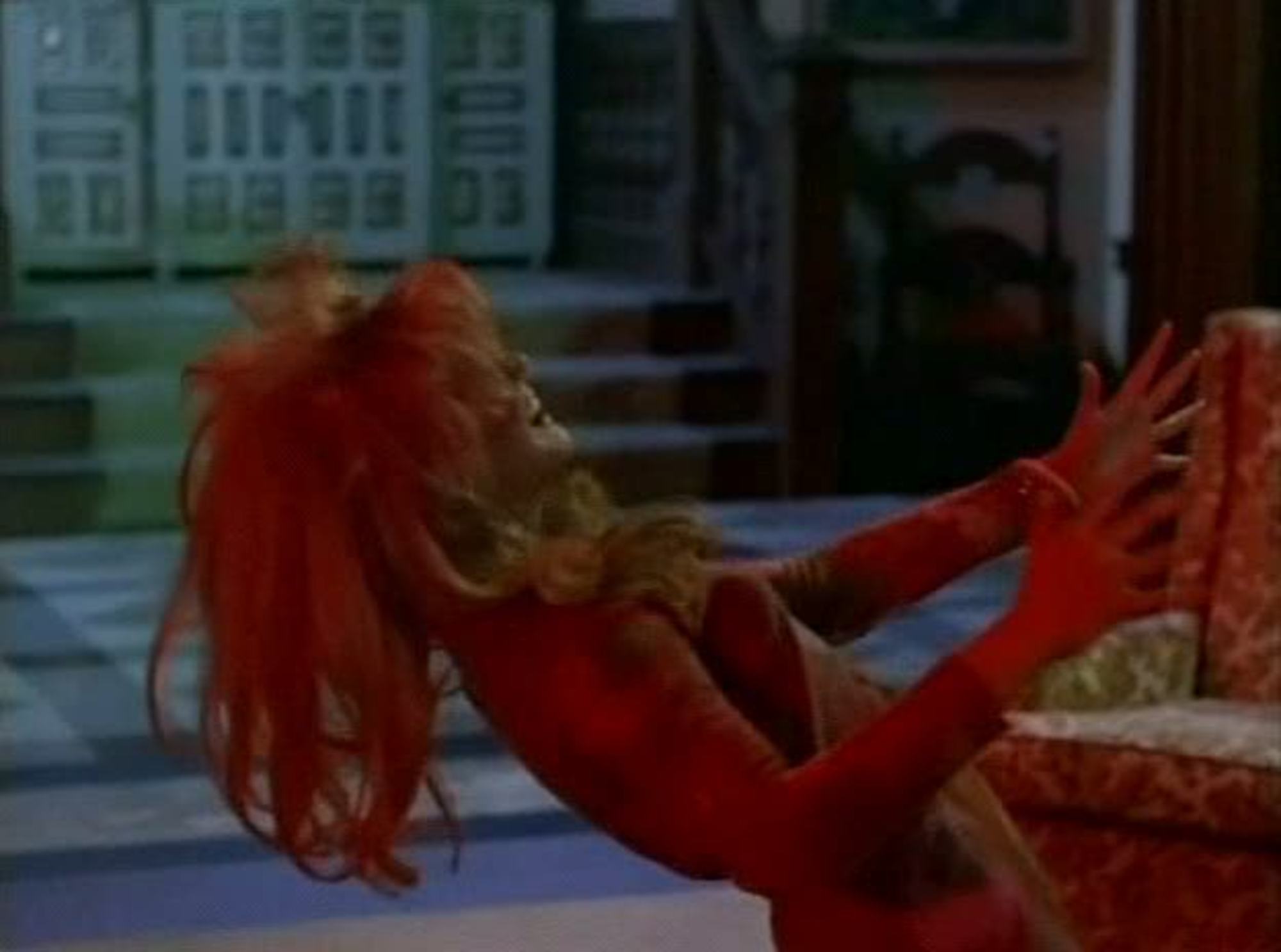
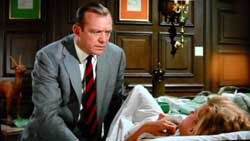
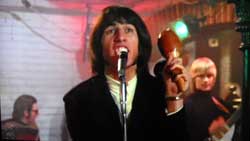
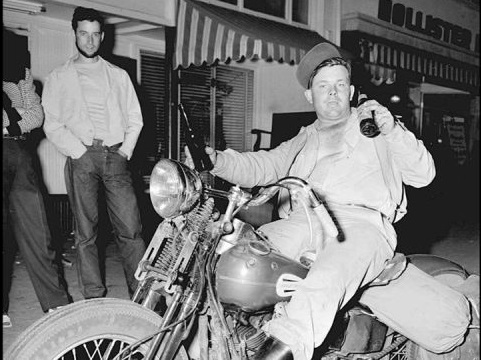
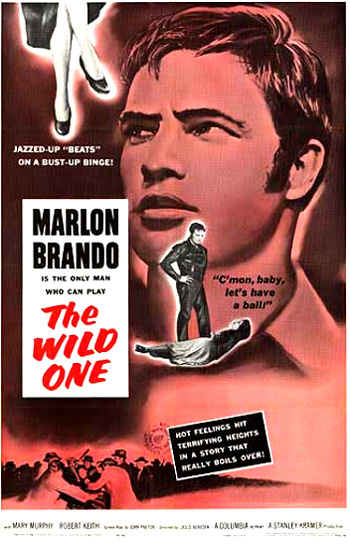
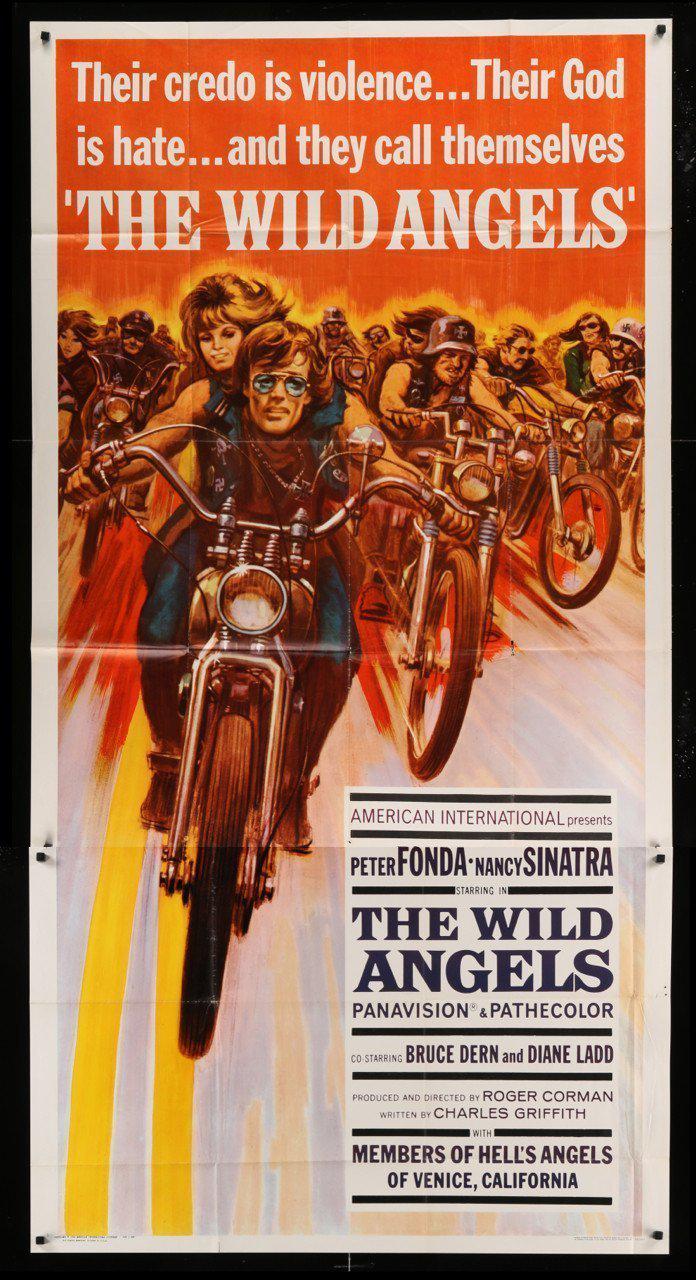


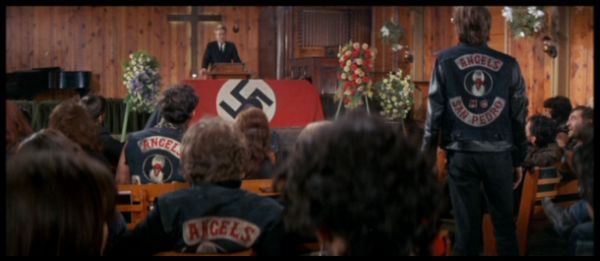
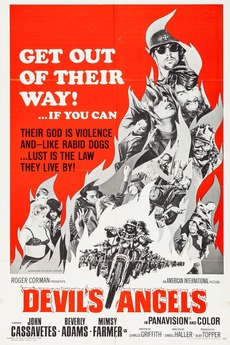
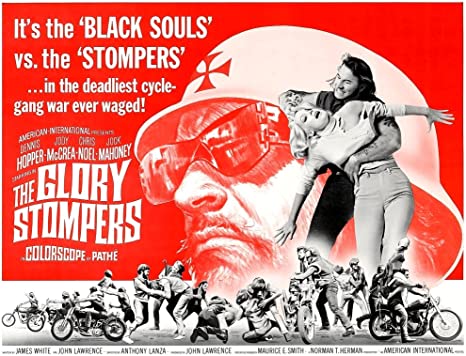
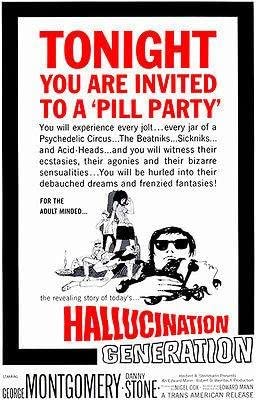
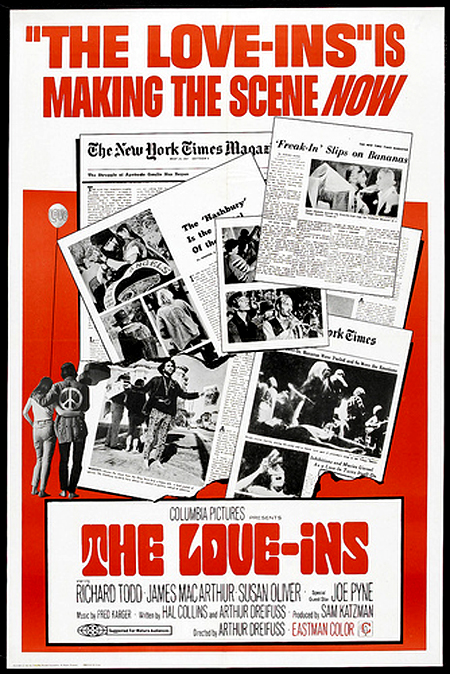
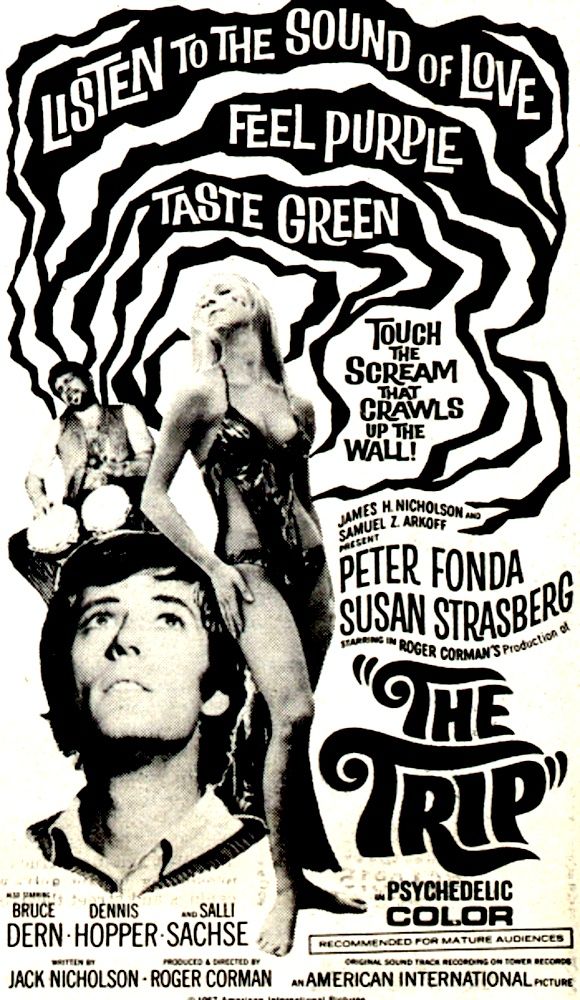
![[September 16, 1966] Is Censorship Heating Up? (Fahrenheit 451)](https://galacticjourney.org/wp-content/uploads/2021/09/F451-Poster.jpg)

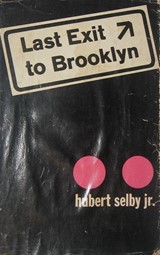




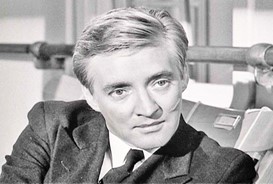

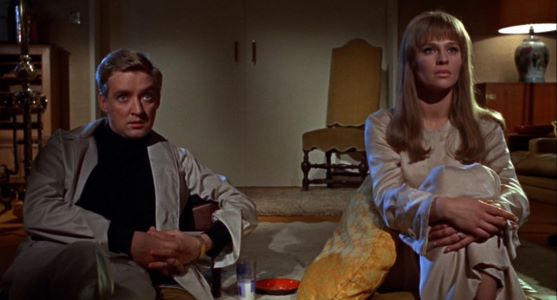
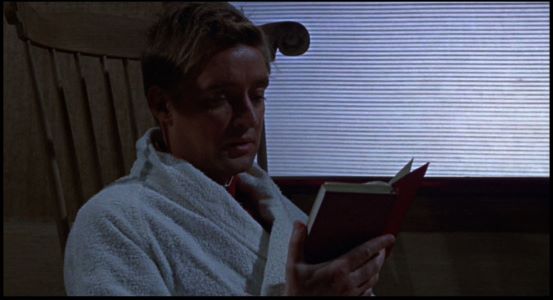
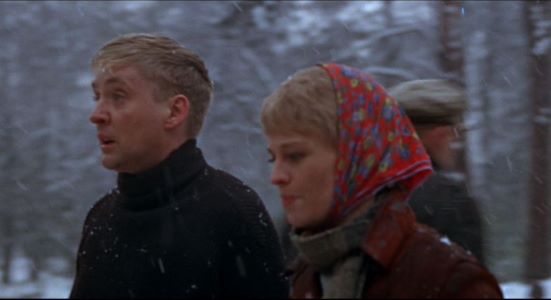

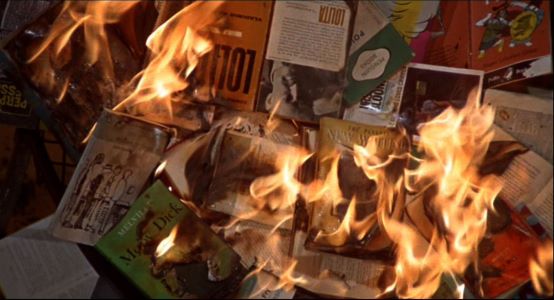



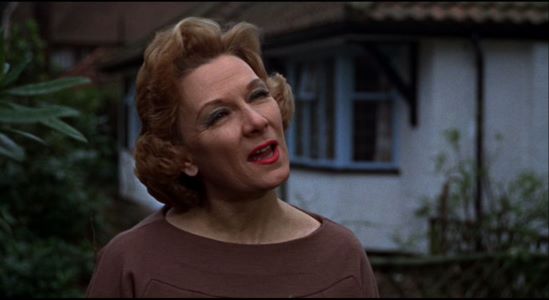
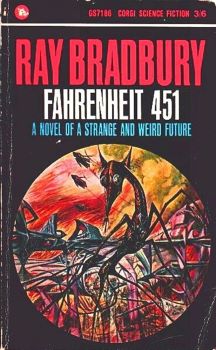
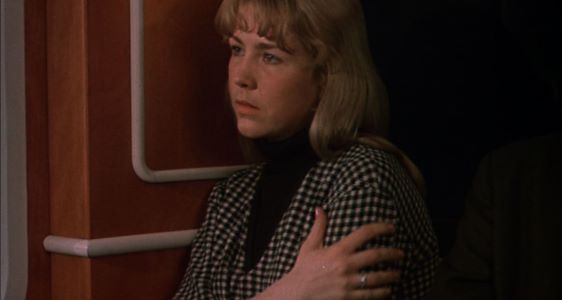

![[August 12, 1966] Dr. Who And The Slightly Better Sequel (Daleks’ Invasion Earth: 2150 AD)](https://galacticjourney.org/wp-content/uploads/2021/08/Original_UK_quad_poster_of_Daleks_Invasion_Earth_2150_A.D.jpg)

![[May 28, 1966] Destination The Movies (<i>Destination Inner Space</i>)](https://galacticjourney.org/wp-content/uploads/2021/05/660528d.jpg)


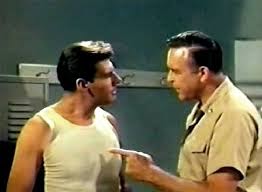
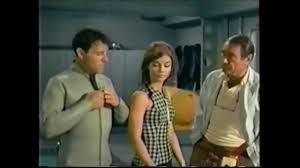
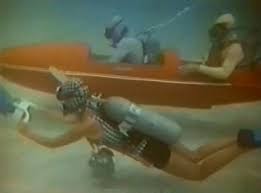
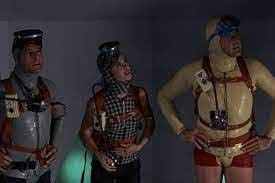

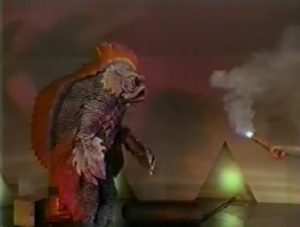
![[May 14, 1966] Seeing Double (<i>The She Beast</i> and <i>The Embalmer</i>)](https://galacticjourney.org/wp-content/uploads/2021/05/unnamed-1-512x372.jpg)

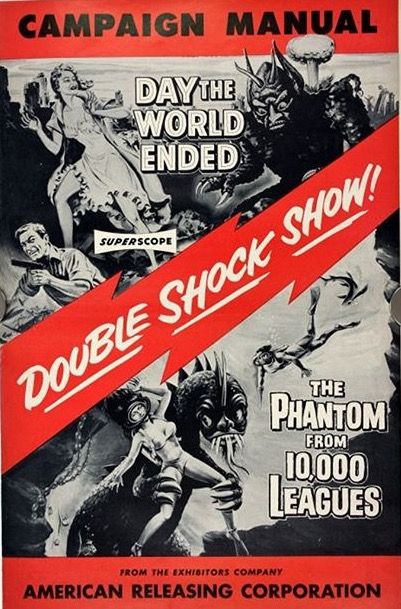
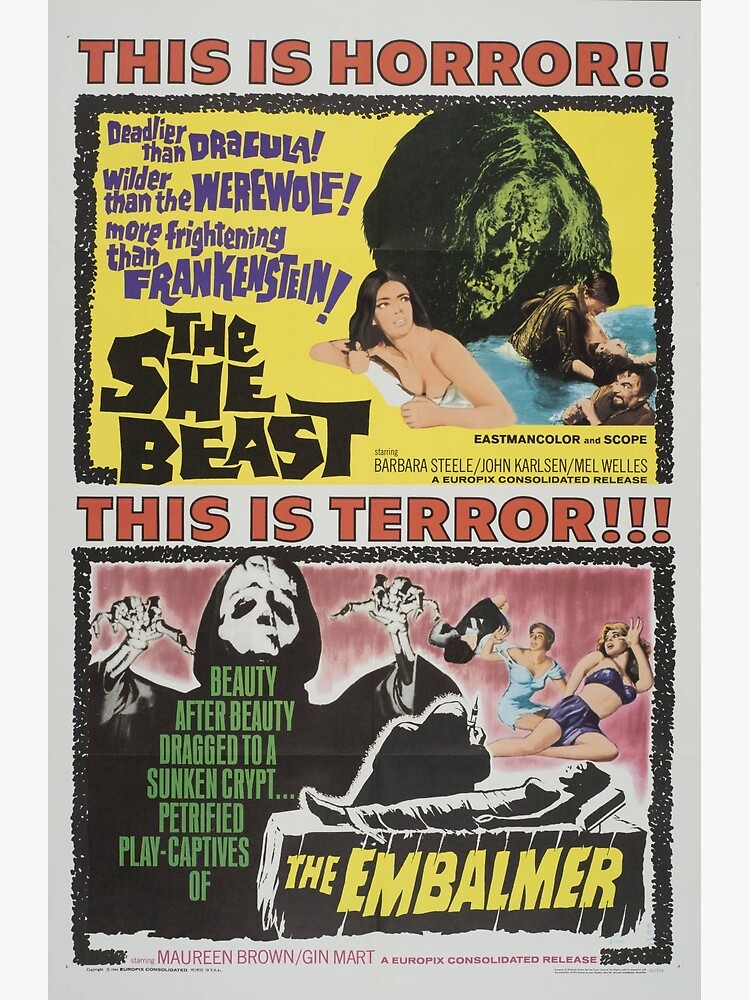
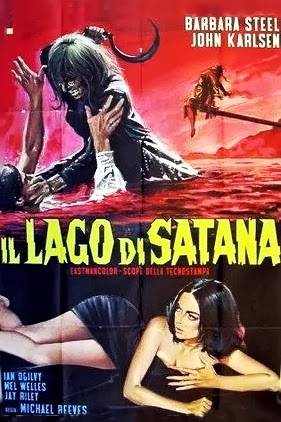
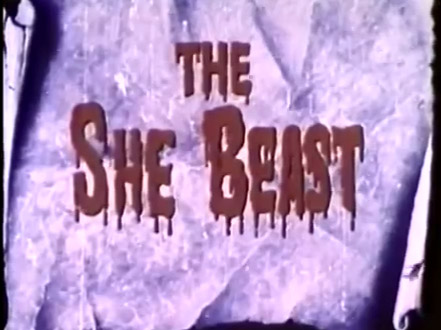

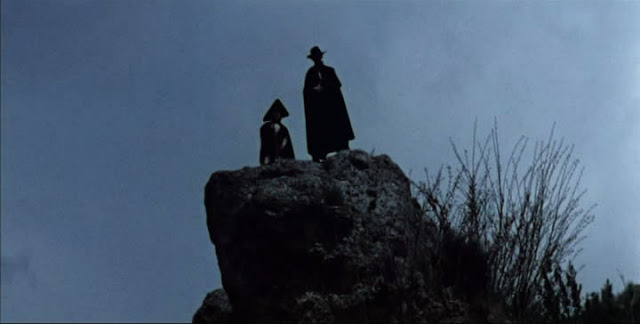
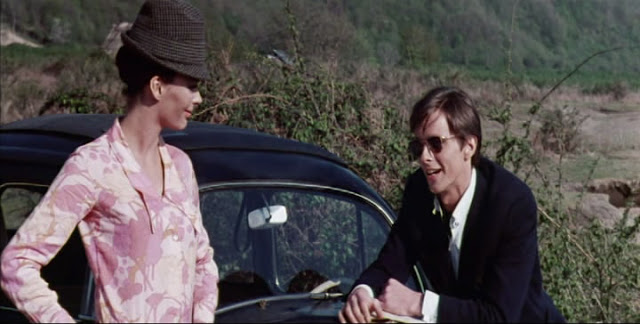
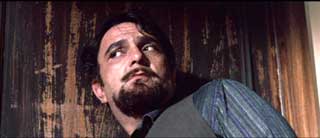
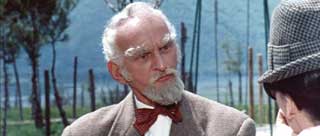
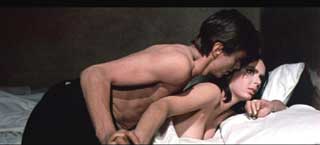
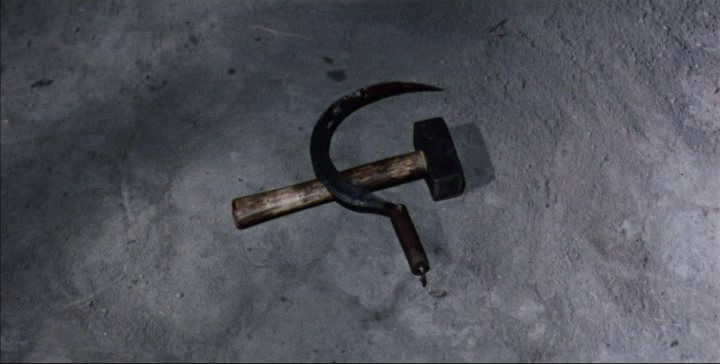
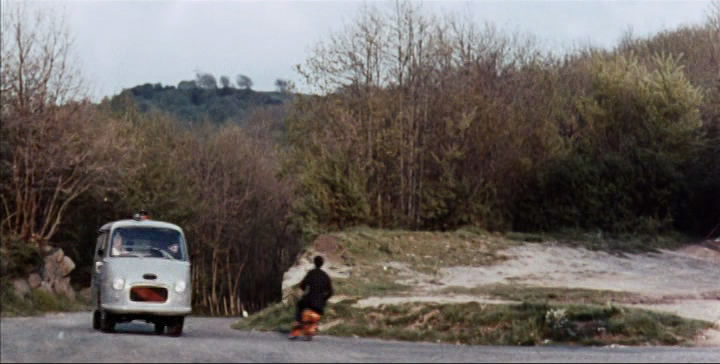
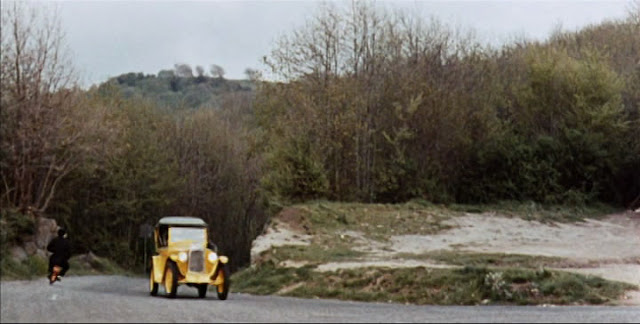
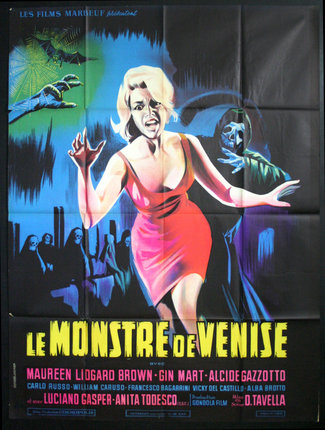
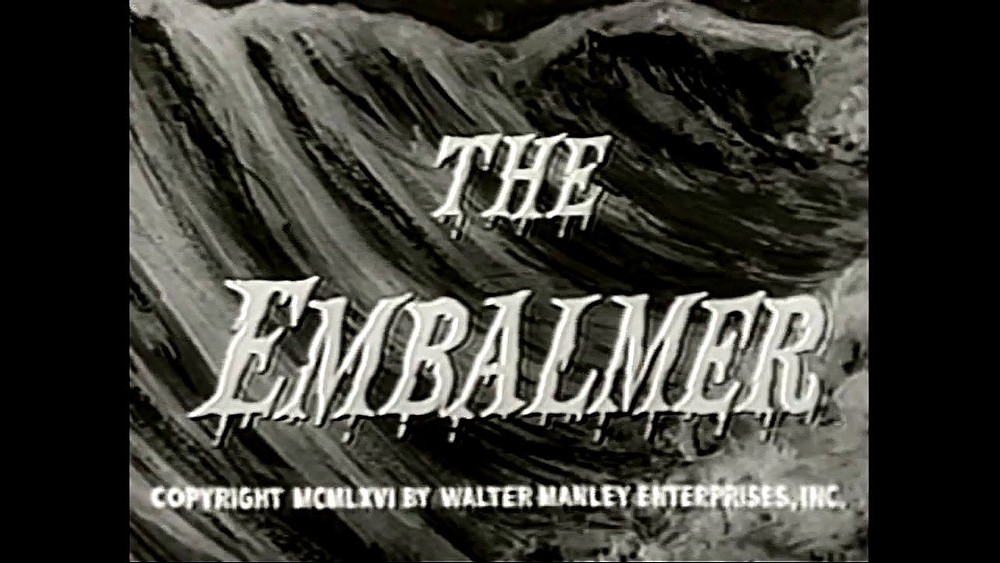
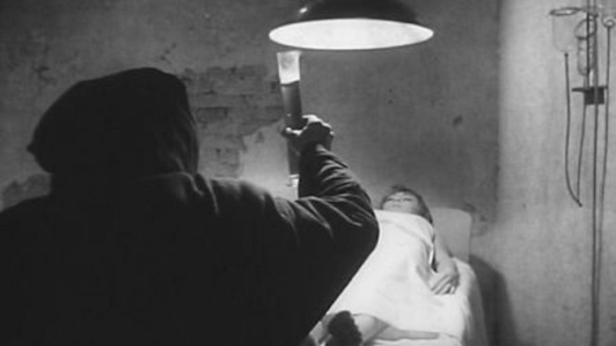
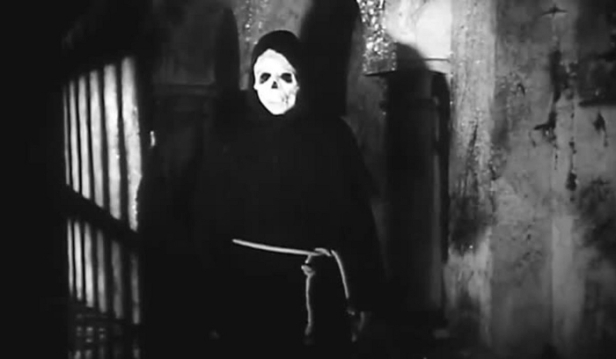
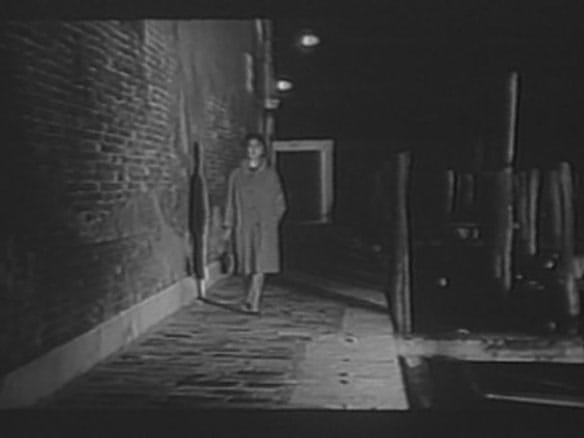
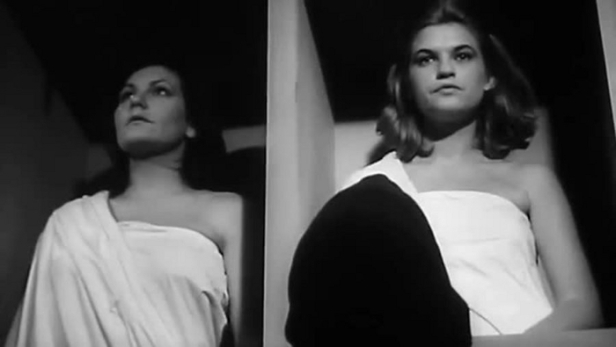
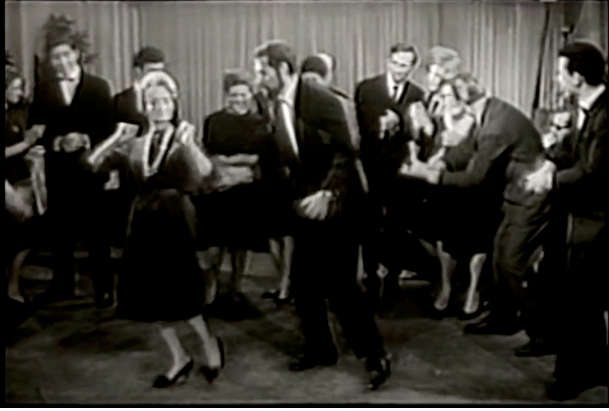
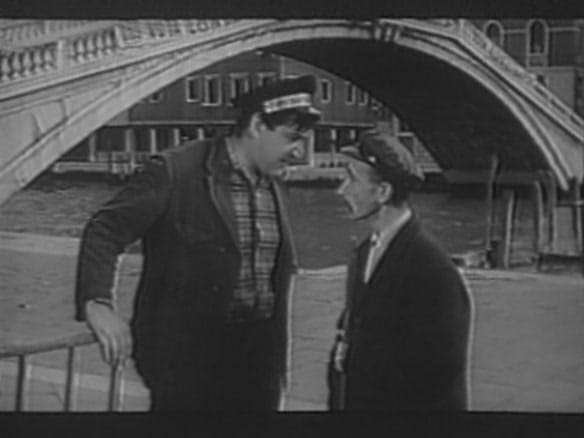
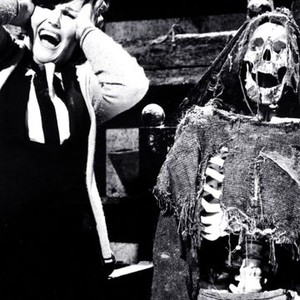

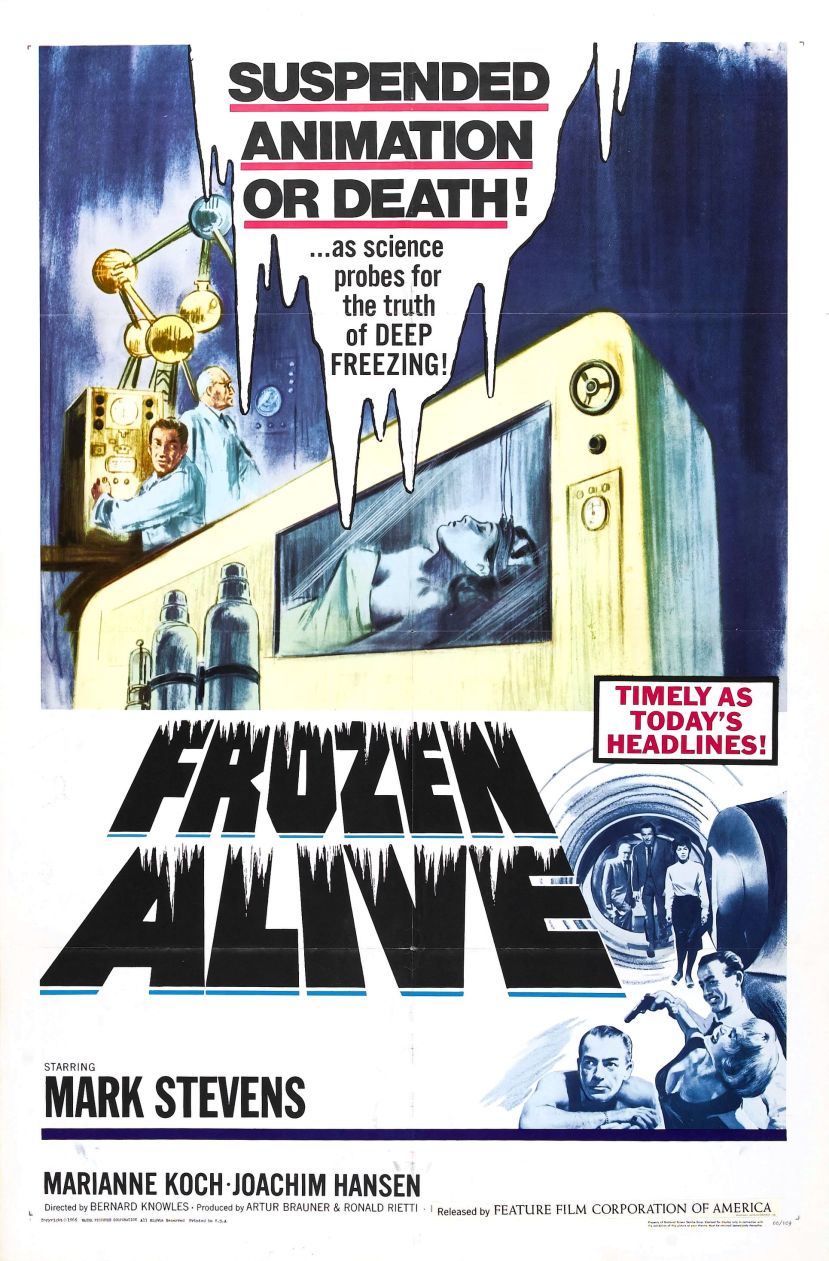
![[April 22, 1966] No Man's Land (<i>Women of the Prehistoric Planet</i> and Further Female Filled Fantasy Films)](https://galacticjourney.org/wp-content/uploads/2021/04/women_of_prehistoric_planet_1966-3.jpg)
